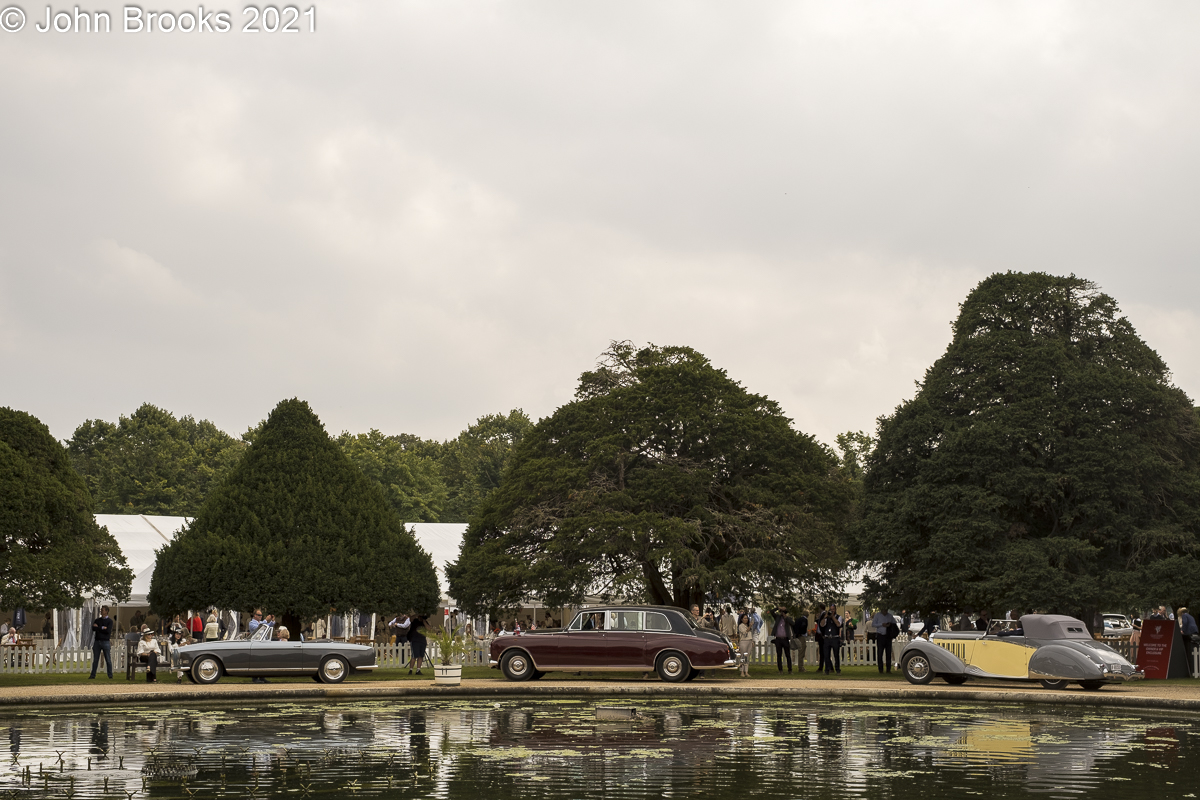
The Concours of Elegance is on today and tomorrow at Hampton Court Palace, a fantastic collection of some of the finest cars on the planet. If you can attend, I strongly suggest that you do.
John Brooks, September 2021


The Concours of Elegance is on today and tomorrow at Hampton Court Palace, a fantastic collection of some of the finest cars on the planet. If you can attend, I strongly suggest that you do.
John Brooks, September 2021
The past two summers have been very strange while life has been put on hold but, as we approach autumn, things are beginning to return to normal. A sure sign of this is a post in our very popular series, Rare and Interesting, an exclusive from David Blumlein. Today he looks back to the Concours of Elegance in 2020.
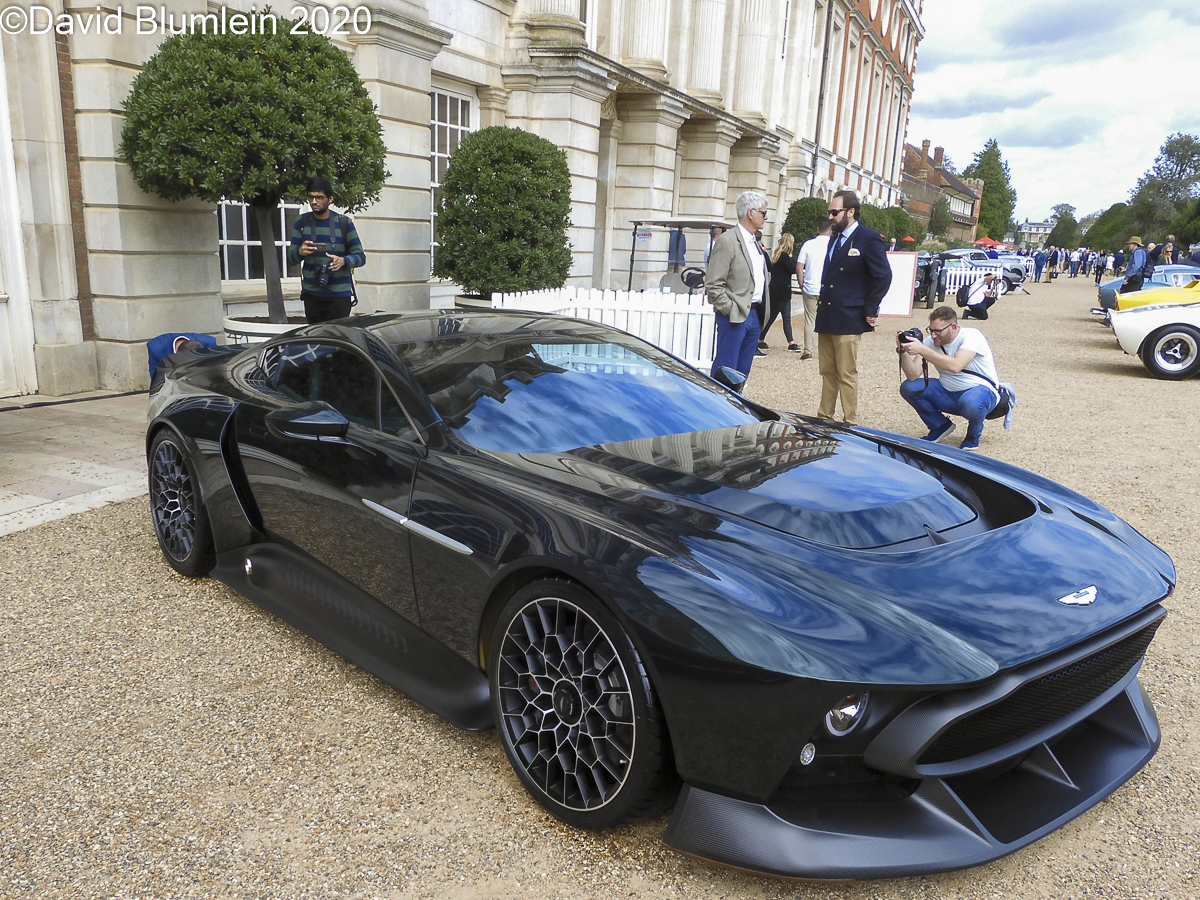
The coming of production of unit-construction cars, for example the Citroën Traction Avant in 1934 and the Opel Olympia (Berlin Show 1935), sounded the death-knell for the many coach-builders and those which survived (as well as manufacturers themselves) continued to make bespoke special cars for wealthy customers. One such is this Aston Martin Victor, named after Victor Gauntlett, Aston’s former executive chairman. It is a full-carbon fibre one-off with a 7.3-litre V12 engine.
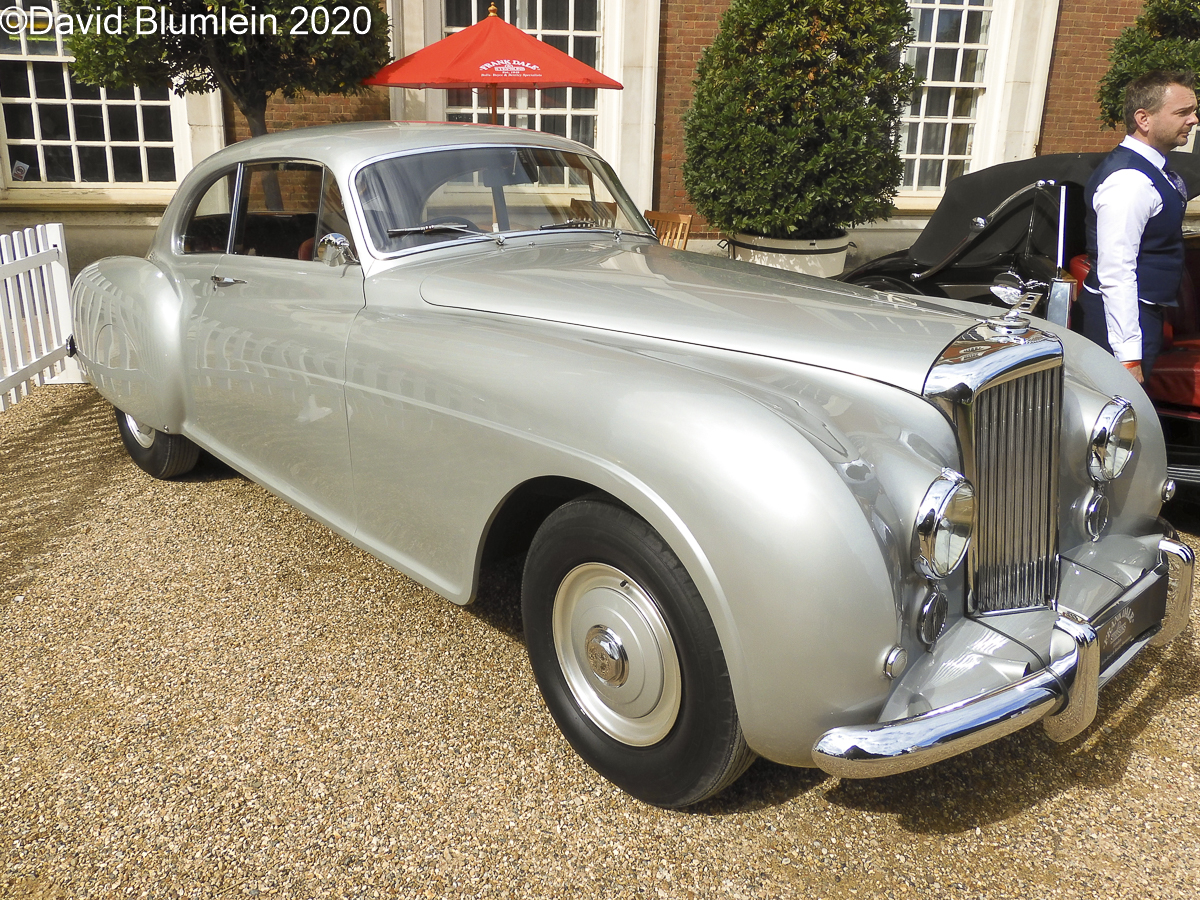
This writer firmly believes that the original Bentley Continental by H.J. Mulliner is the most beautiful of all Bentleys. The model was introduced in 1952 and this car was delivered in February 1953 through Franco Britannic Automobiles, the French Rolls-Royce agent. The car’s prototype “Olga” (registered OLG 490) acted as a Course Car at the Le Mans 24 Hour race. Soon the Company “spoilt” the original design by adding more luxury (and therefore weight) and changing the aerodynamics.
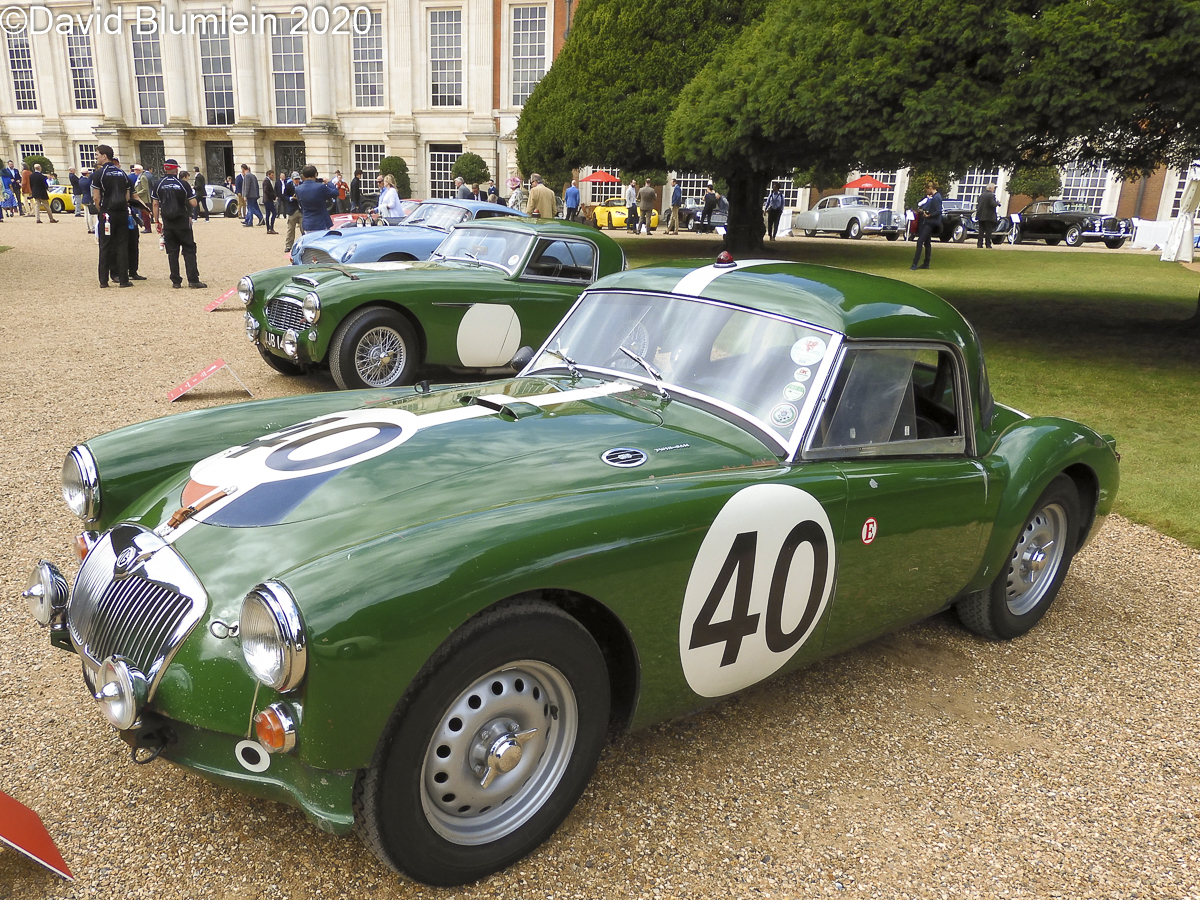
This MGA Twin Cam was one of a team of three sent by the Abingdon Competitions Department to the 1960 Sebring 12 Hour race where it finished fourth in class, driven by Jim Parkinson and Jim Flaherty. The MGA was very successful in North America – of just over 101,000 made 81,401 were sold in that market.
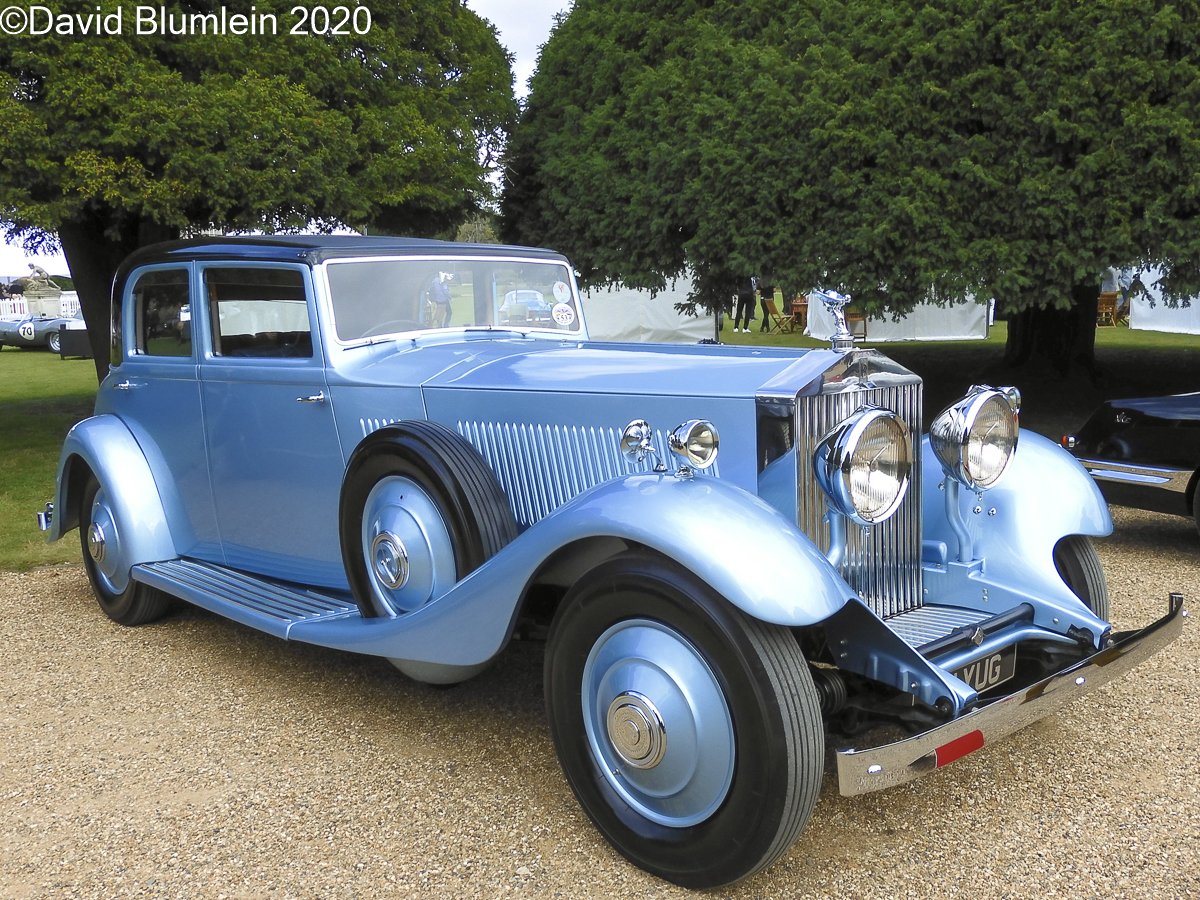
Sir Malcolm Campbell owned lots of cars and this Rolls-Royce Phantom II was his third Phantom.
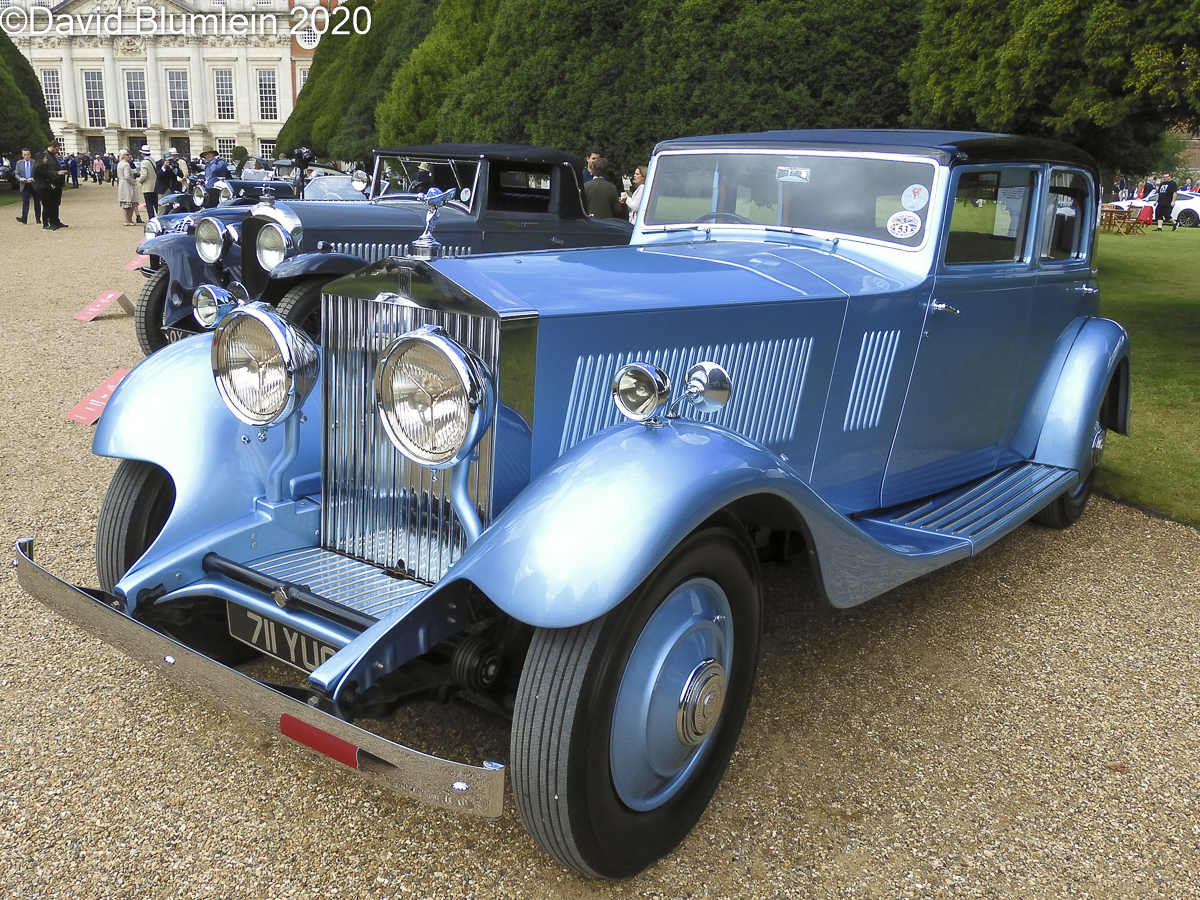
With coachwork by Barker, this 1933 Sports Saloon had a 7.6-litre six-cylinder overhead valve engine of 120bhp.

This was the first public showing of Sir Jim Ratcliffe’s Ineos Grenadier, a 4×4 rival to the Land Rover Defender.
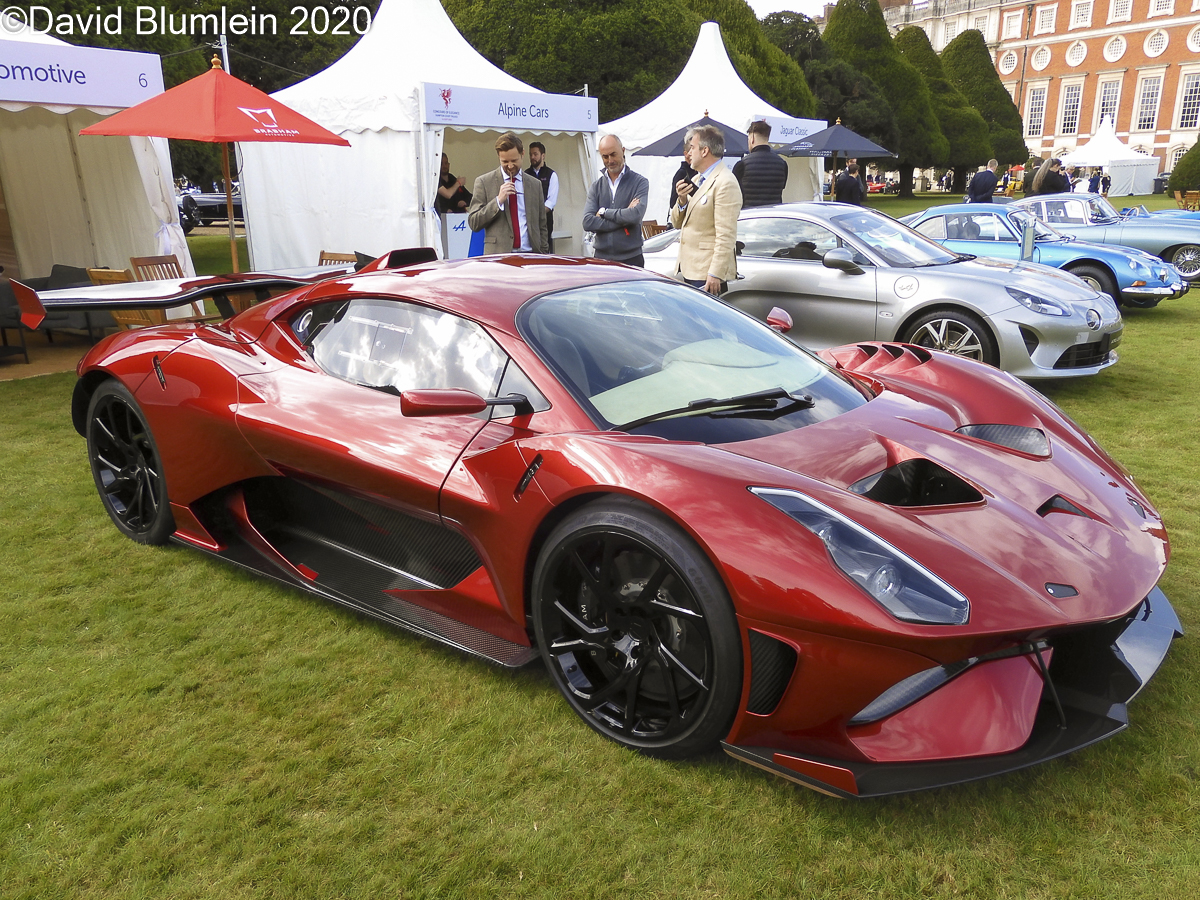
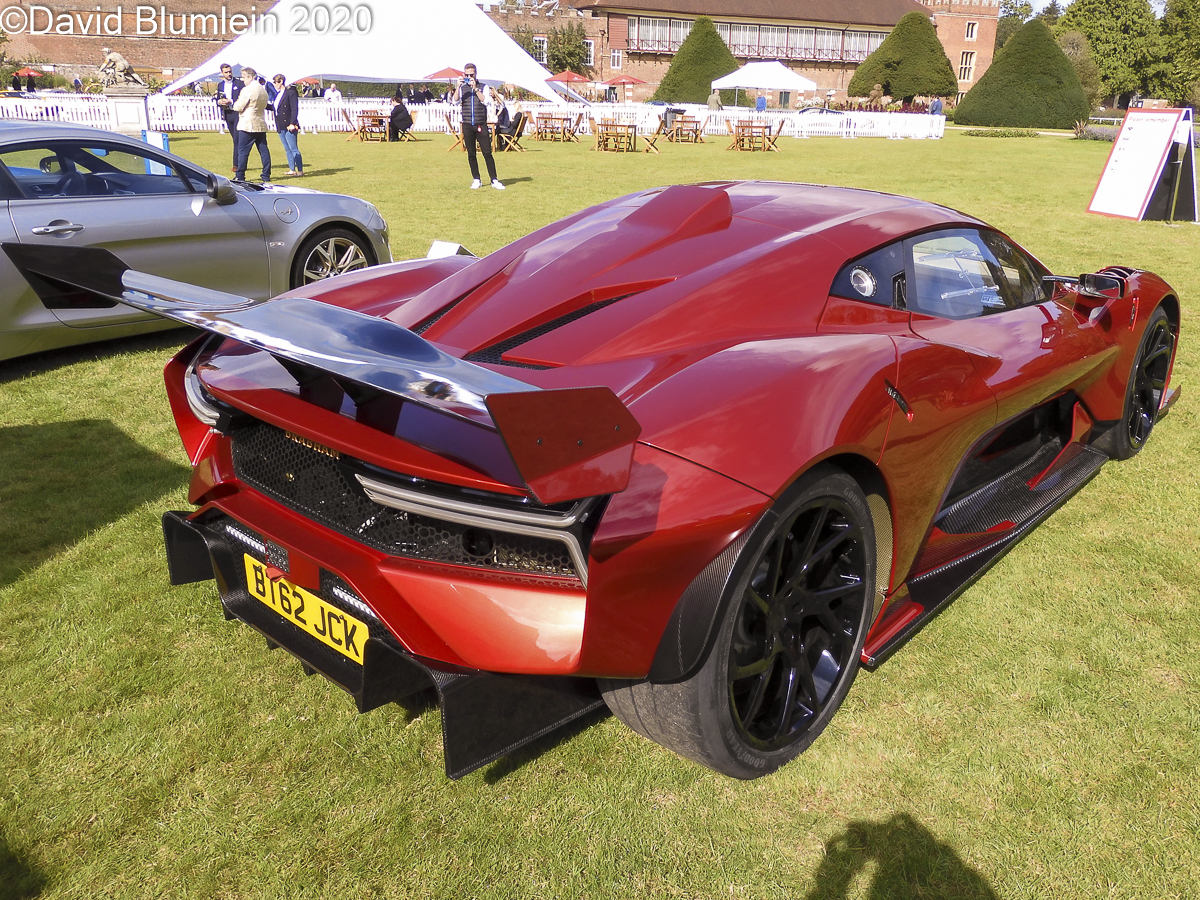
The Brabham BT62R was designed for track use but is now ready for the road.
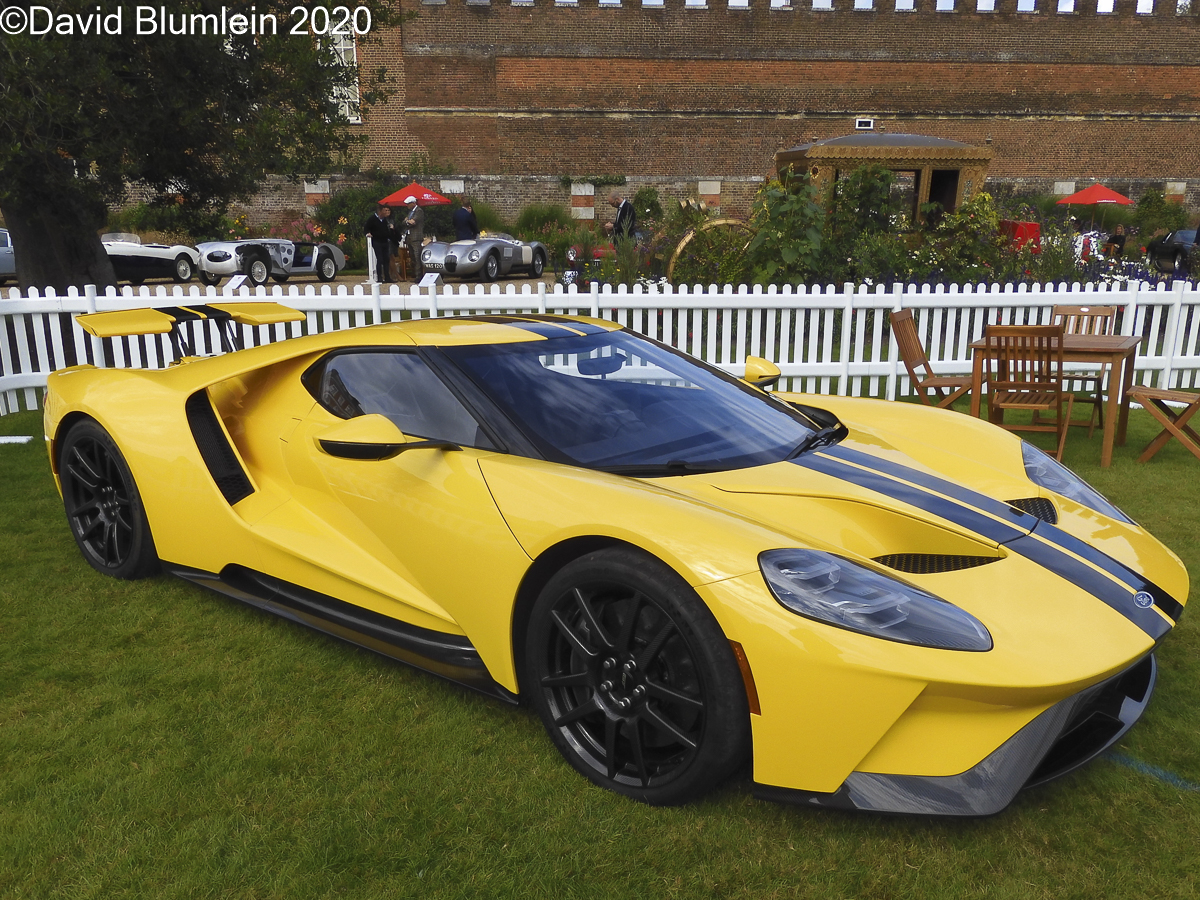
In its long history the Ford Motor Company has embraced every aspect of the motoring world, from the Tin Lizzie, making lorries for the Wehrmacht to winning Le Mans four times! This is the third iteration of its splendid GT40 concept, complete with V6 engine now, and a racing version won its class at Le Mans in 2016, the 50th anniversary of its spectacular triumph at the famous race.
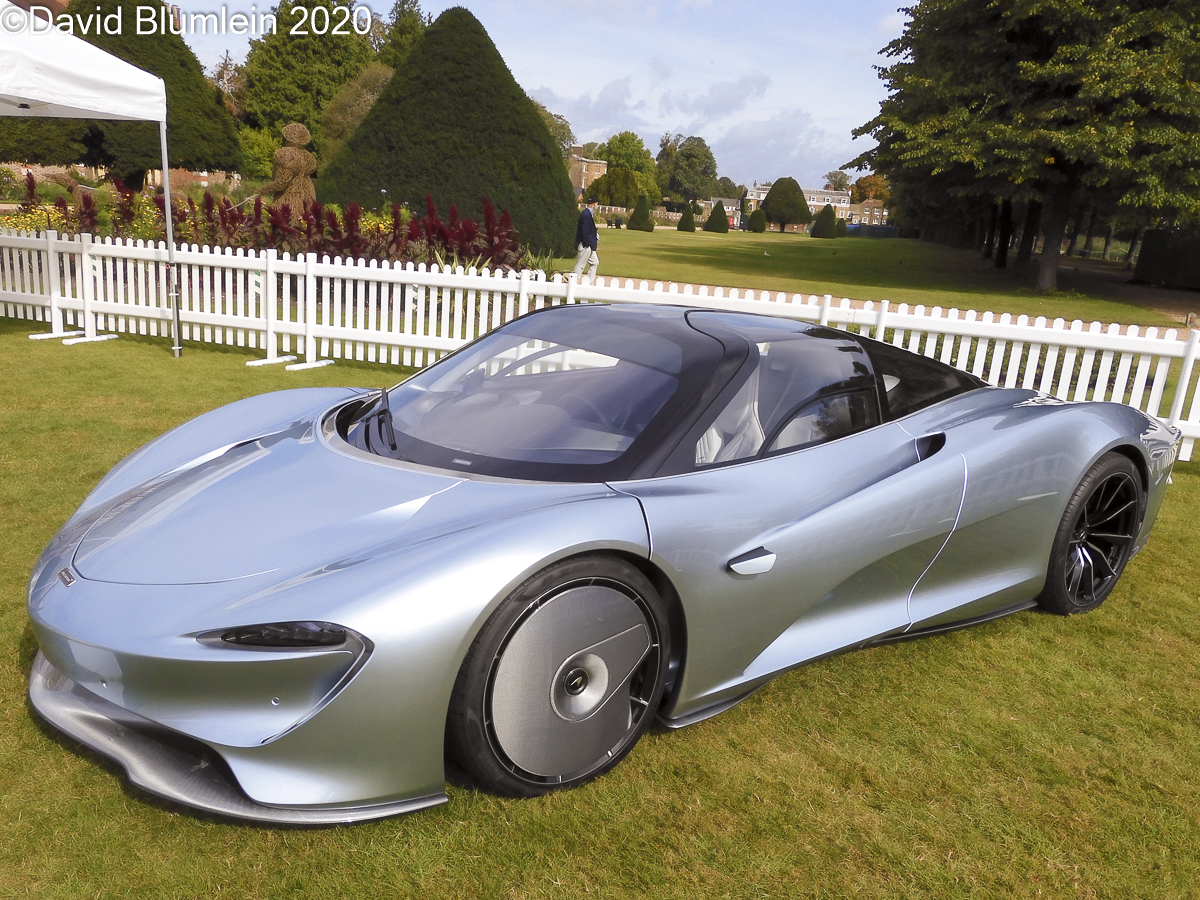
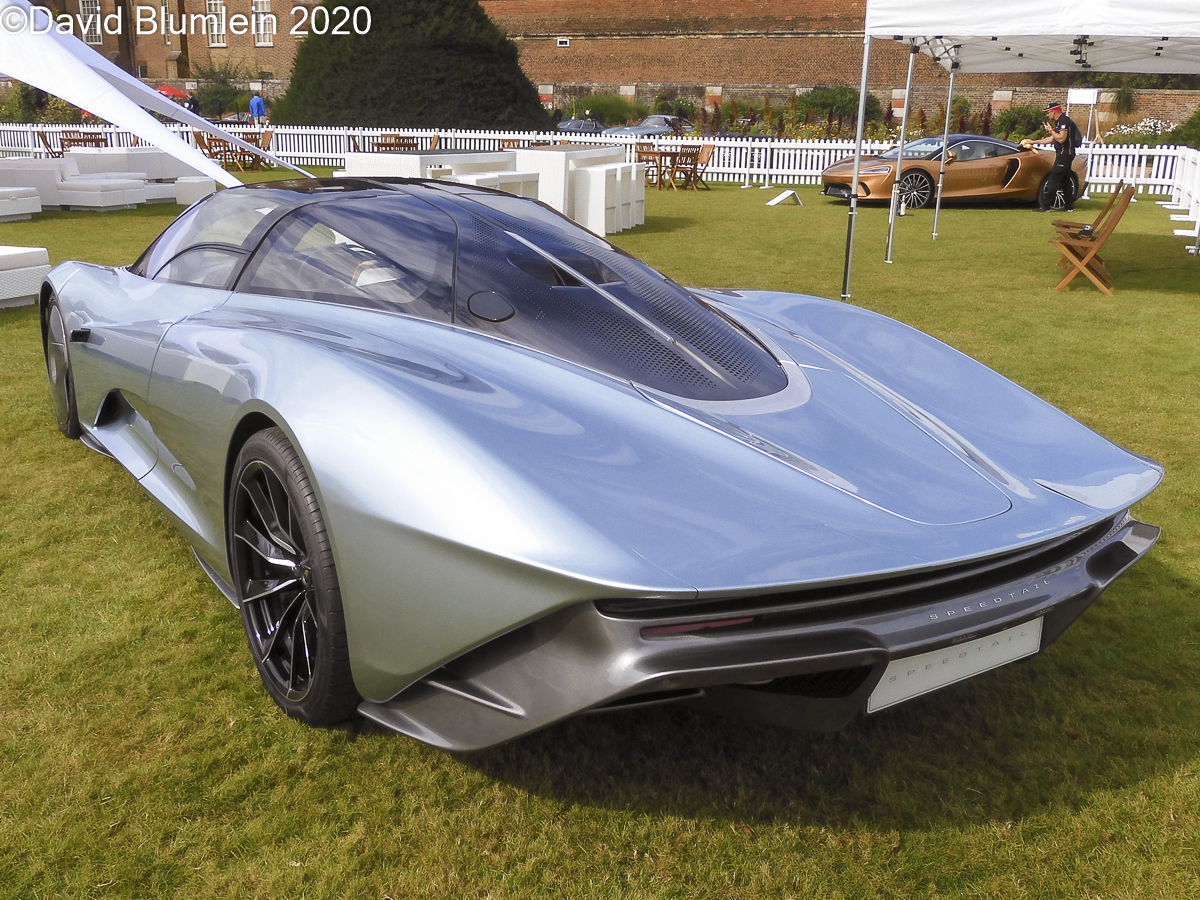
McLaren keeps making lots of new cars and this Speedtail recalls the Porsche 908 “Langheck” which ran at Le Mans in 1968. Like Gordon Murray’s F1 the Speedtail has a central driving position.
David Blumlein, September 2021
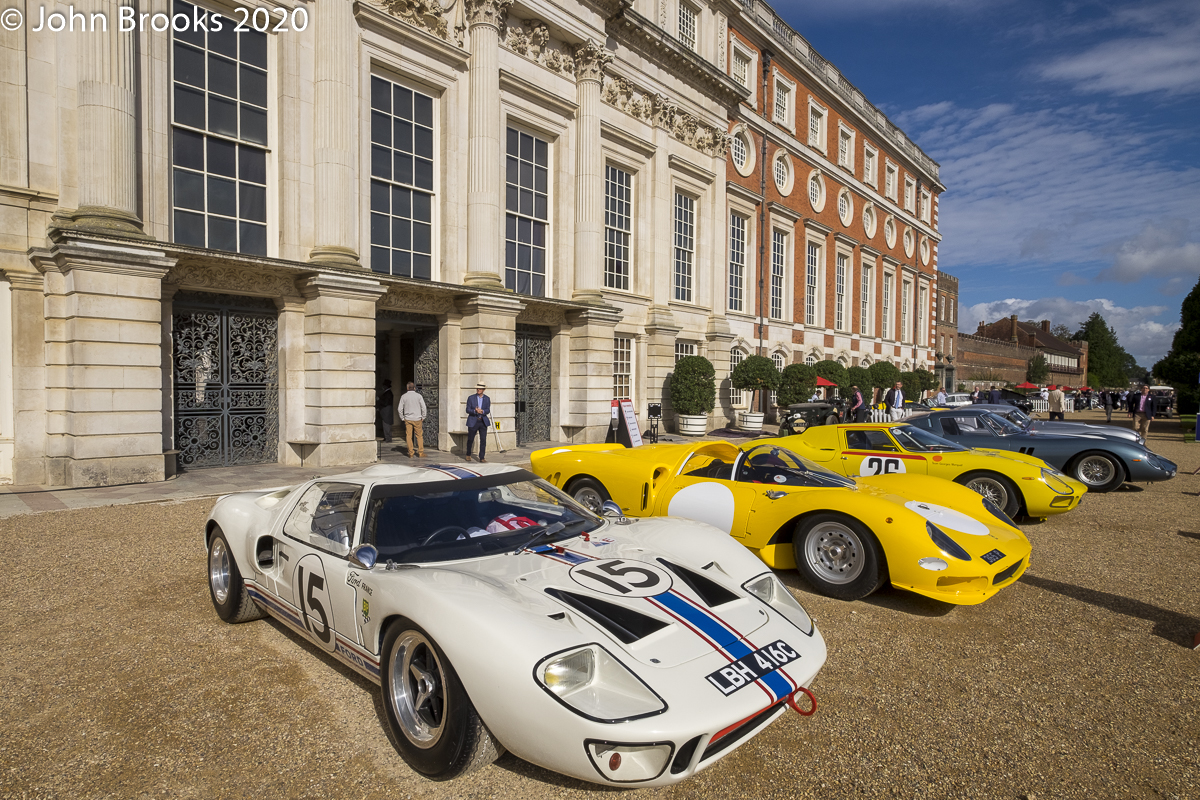
September has arrived heralding the onset of autumn to be followed, no doubt, by winter. No one needs to be reminded that the pandemic has not only attacked humans but also has decimated the normal calendars of culture and sport, life itself appears to have been on hold during 2020.
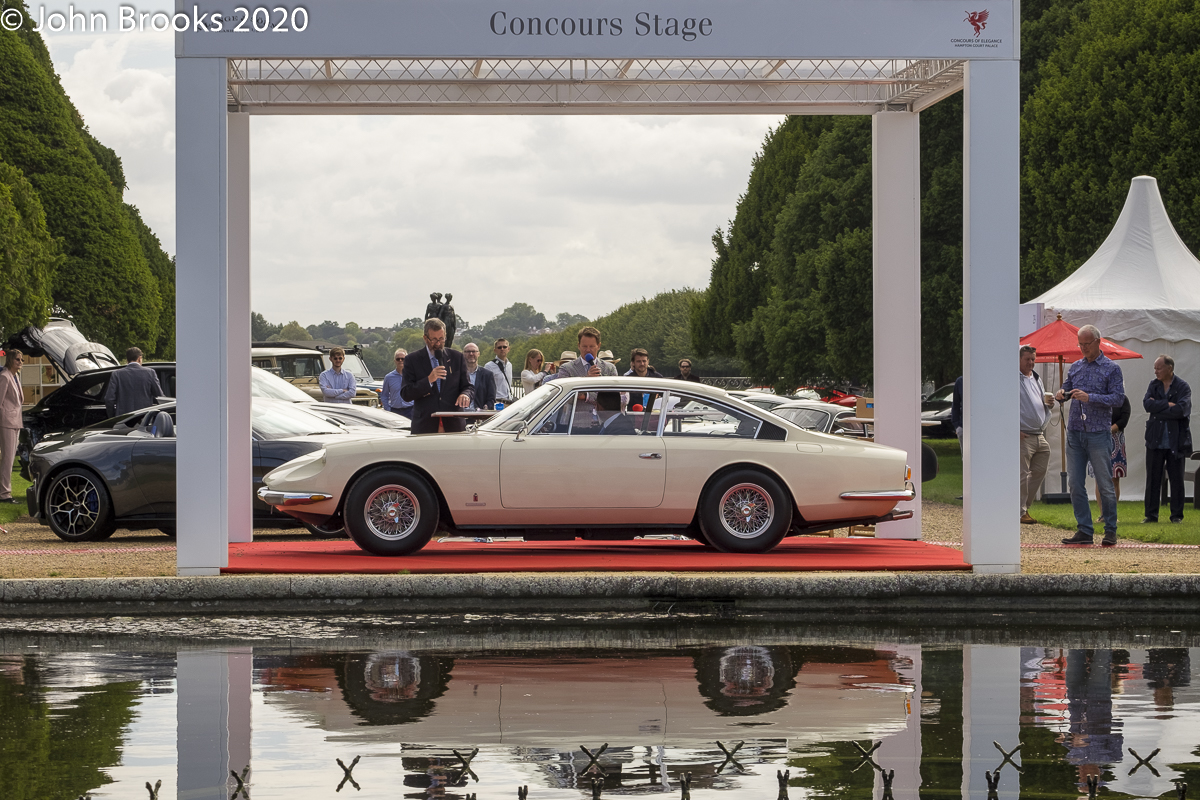
The only appropriate response to this disruption is to be stoic, the disappointments of missing events or holidays are nothing compared with the devastation suffered by those who have been struck down, not to mention their families and friends.
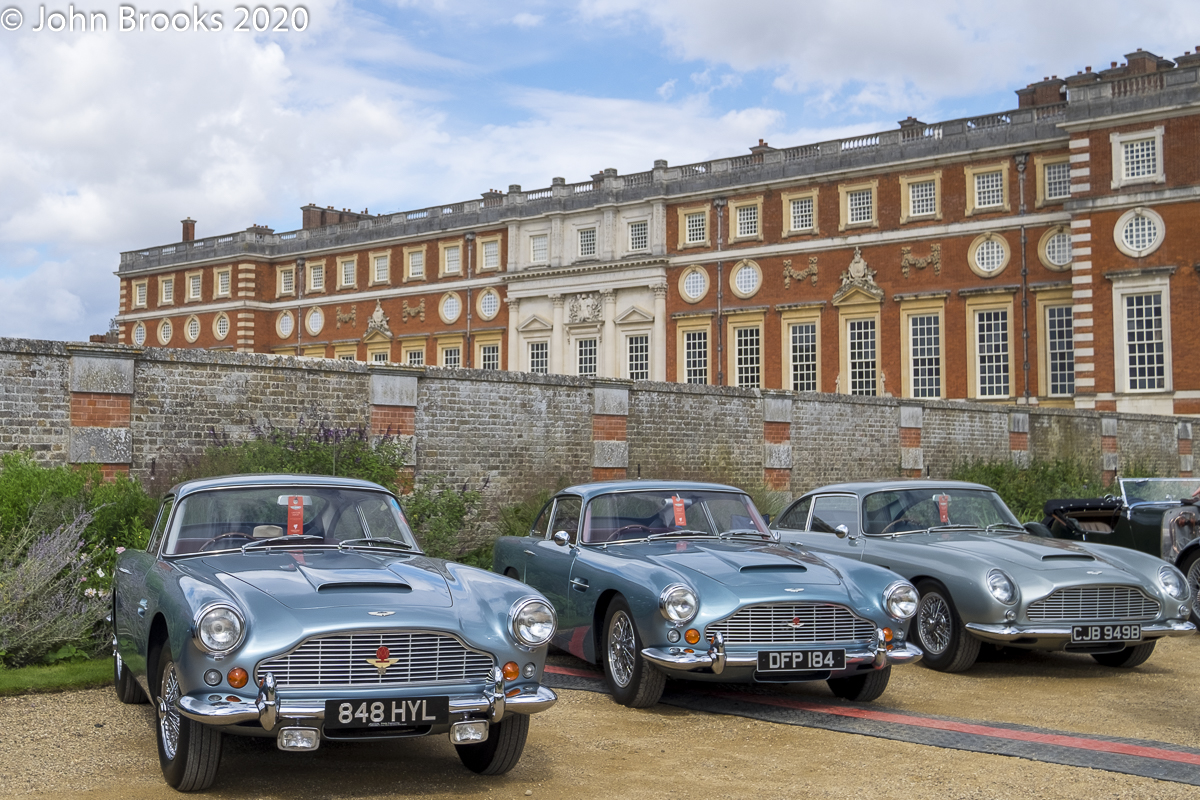
However, we would be less than human if we tried to hide our enthusiasm when some small part of the real world surfaces. Concours of Elegance at Hampton Court Palace is firmly established as one of the highlights of the motoring year. After what can only be described as an astounding effort it took place earlier this month, even more incredible was that the show matched the virtuoso levels of previous years. Chapeau!
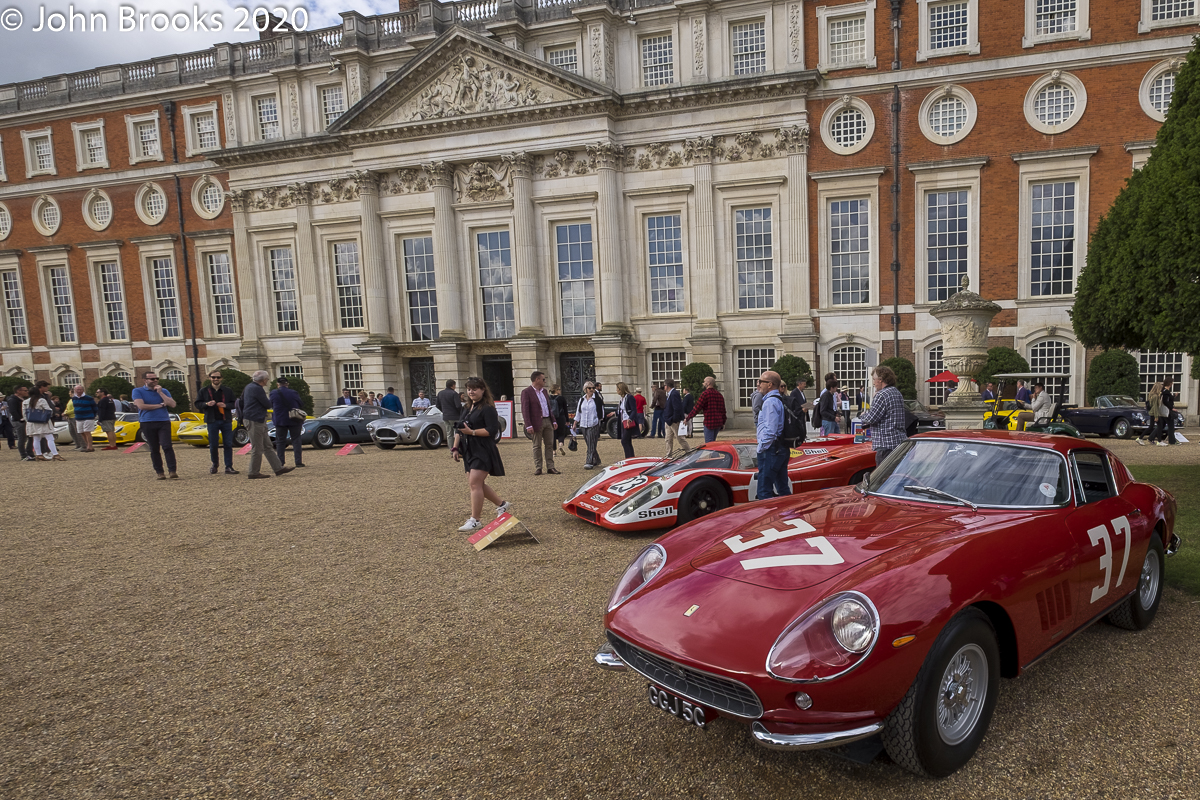
So it is now left to me to try and describe some of the highlights for those not fortunate enough to attend in person, I hope my efforts do the Concours some form of justice.
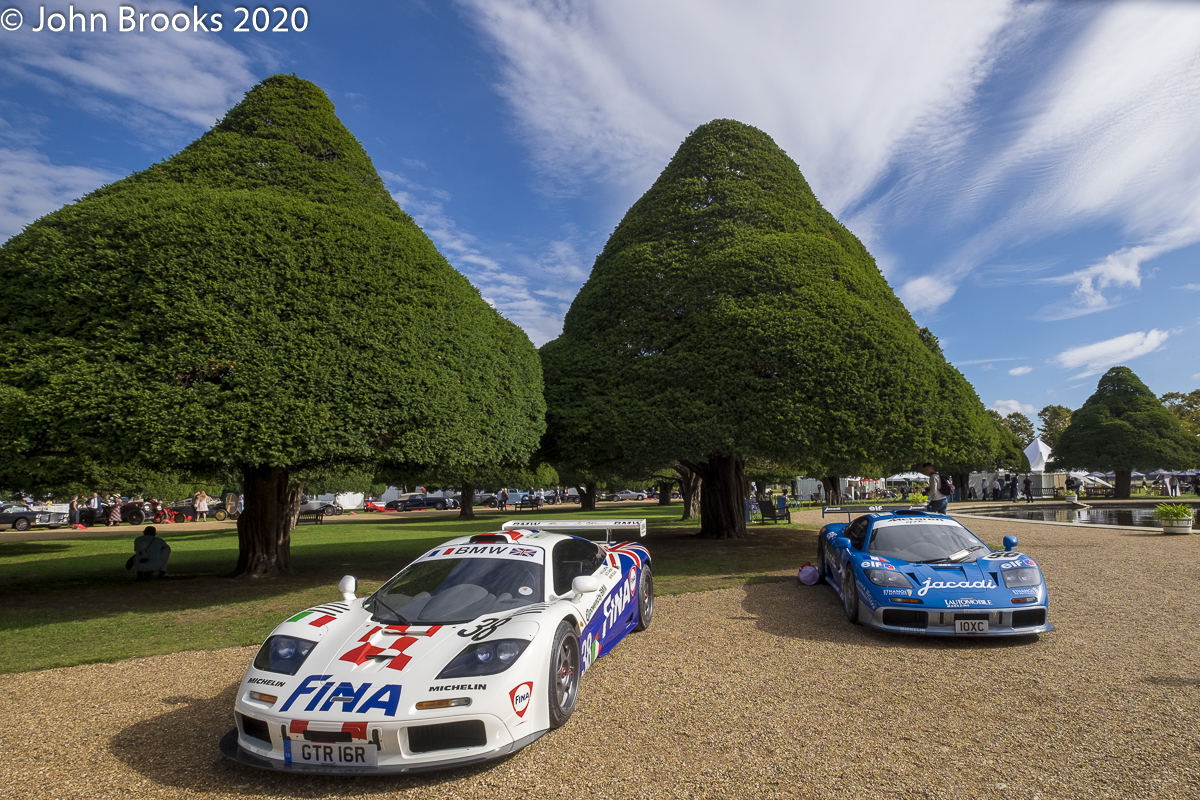
Twenty-five years have passed since the F1 GTR burst on to the endurance racing scene, dominating the BPR Global GT Endurance Series and taking the top spot at Le Mans on McLaren’s first attempt to achieve glory at La Sarthe. If one ignores the winner of the first race in 1923, only one other marque has achieved this result, Ferrari, back in 1949. Ironically that actual car was at the Concours last year and I looked at it HERE
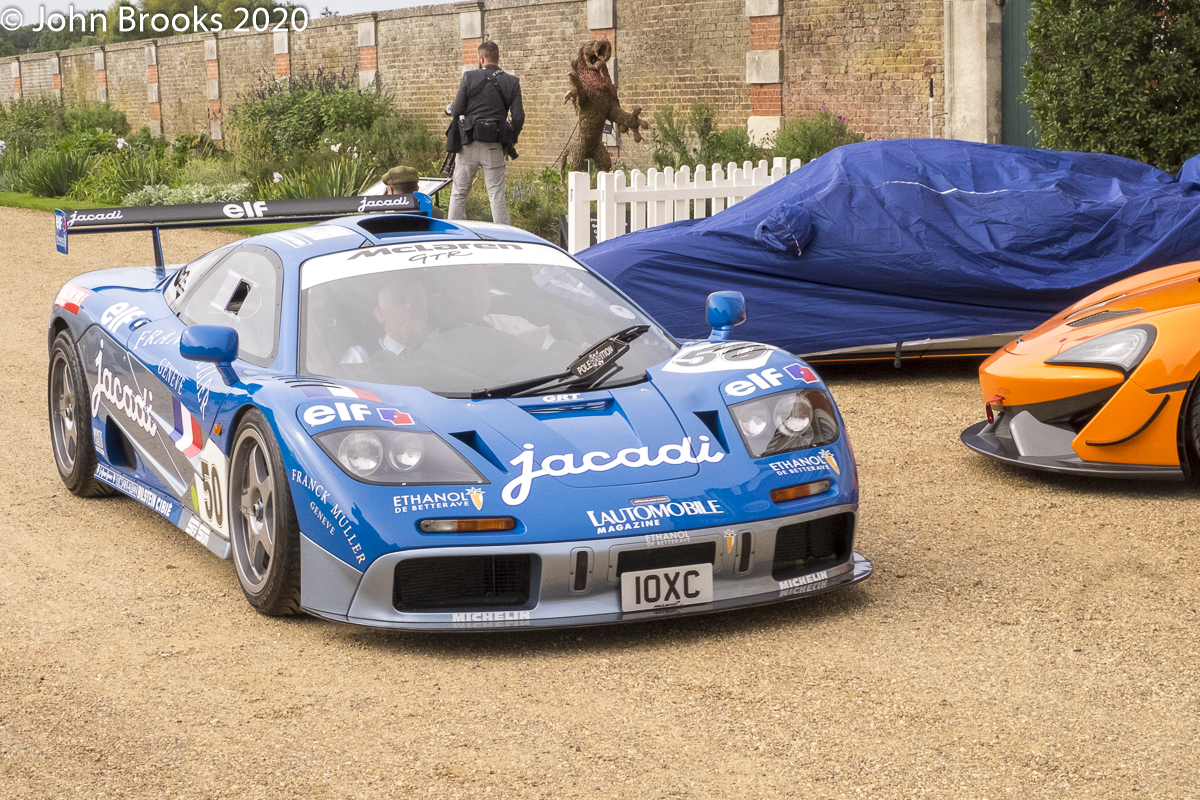
The 1995 winner, #01R, was due to make an appearance but a last-minute change of plans prevented that happening. So just two examples of Woking’s finest were on display, #07R, from 1995 and #16R from the following year. The blue #07R came close to glory several times during the BPR season, leading races and scoring second place at Jarama and third at the Nürburgring. At Le Mans it had additional sponsorship from Ethanol be Betterave and the fuel for its BMW V12 engine was a synthesis of beetroot-derived alcohol. There was disaster for the car at the beginning of the race when the starter motor failed and the team replaced it. Further problems with the unit cost #07R an additional 18 minutes in the pits during the opening hour, blunting their challenge. Subsequently the F1 GTR had a largely trouble-free run and recovered to fifth at the finish, the best result ever scored by a ‘green fuel’ car at La Sarthe.
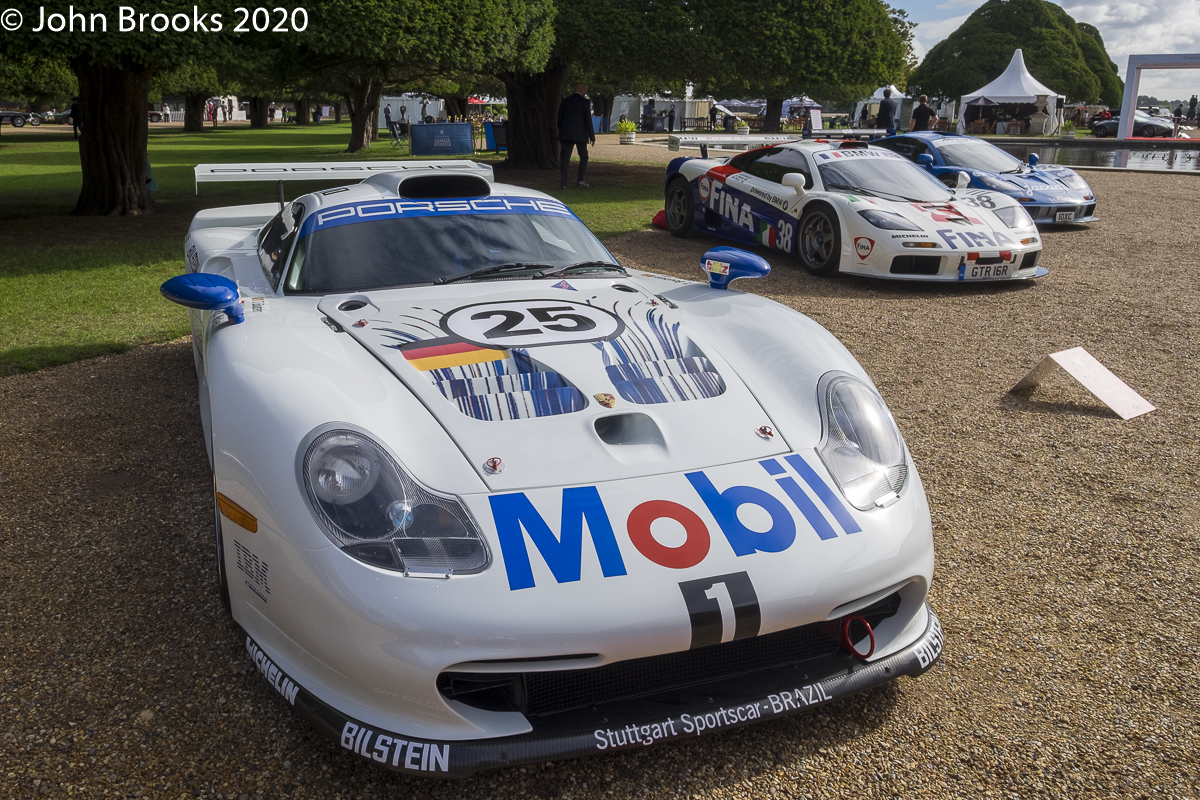
Another veteran of the Le Mans 24 Hours was this Porsche 911 GT1 that came close to winning the great race in 1997. Porsche AG initially concentrated their efforts that season in trying to win Le Mans, only a last minute decision was made to enter the inaugural FIA GT Championship. The Werks squad were running One-Two as dawn broke on Sunday with Thierry Boutsen, Hans Stuck and Bob Wollek leading. Wollek was in his twenty-seventh contest at La Sarthe and must have harboured thoughts that, finally, this would be his year. Just before 07.30 he attempted to pass Jean-Marc Gounon’s McLaren and was held up for three laps. Under acceleration out of Arnage, still stuck behind the F1 GTR, Wollek lost control of the Porsche and clattered the Armco head-on and rear, hitting both sides of the track. A broken driveshaft meant that his attempts to get back to the pits were punctuated by two further spins and he was forced to abandon the car and his quest for victory. At the subsequent meeting with the press he blamed himself entirely, he had made a beginner’s mistake as he declared. “Si vous n’avez jamais vu le roi des cons, vous l’avez devant vous.”
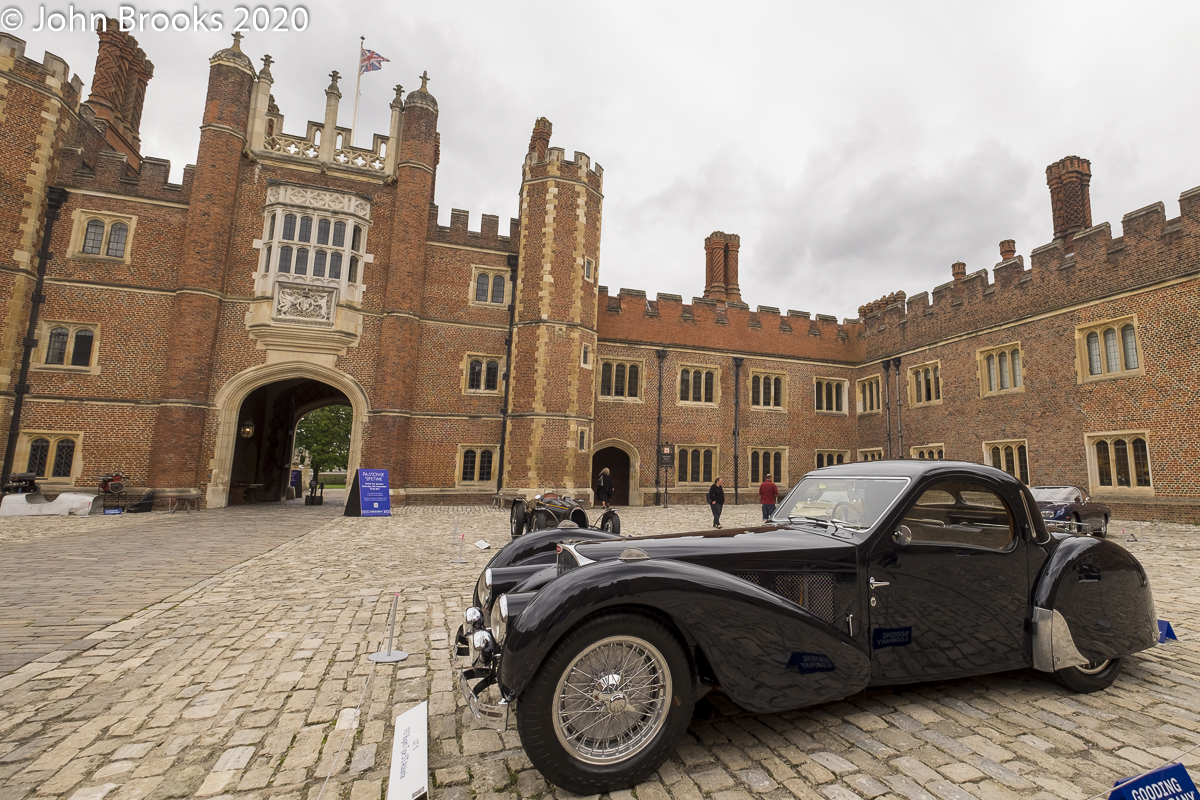
A special event taking place in this year’s Concours was the “Passion of a Lifetime” auction. Gooding & Company were forced to postpone their first-ever sale outside of the USA so the Concours of Elegance at Hampton Court Palace was just the right level to act as the venue. Elegance was to be found in spades in the Tudor Courtyard; even Henry VIII, might have lusted after this Bugatti Type 57S Atalante, more than he did with Anne Boleyn.
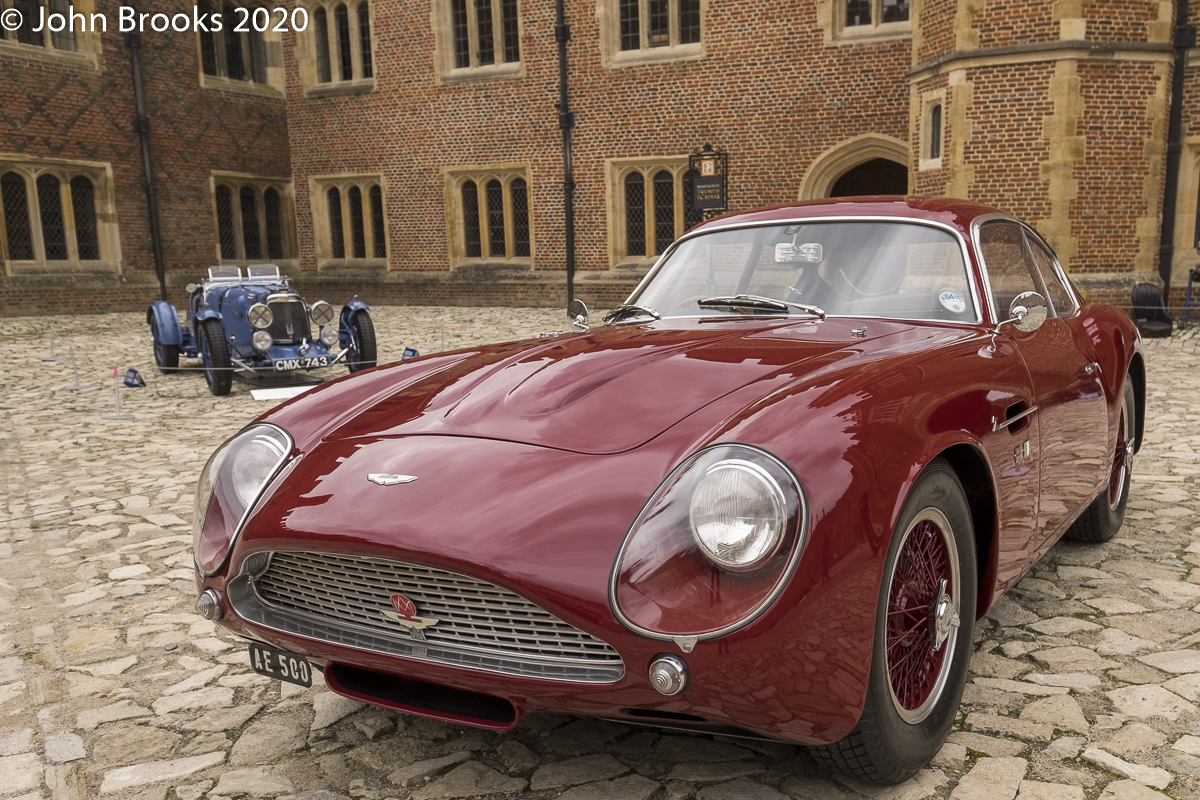
There were just fifteen cars in the sale but all were ultra desirable. This Aston Martin DB4GT Zagato is one of only nineteen examples produced and lists former Aston Martin Chairman, Victor Gauntlett, as one of its four previous owners. Its breath-taking and timeless styling, courtesy of Ercole Spada, renders it as a piece of modern art of the highest level. Weirdly this was the only car not to sell, failing to reach the £7 million expected.
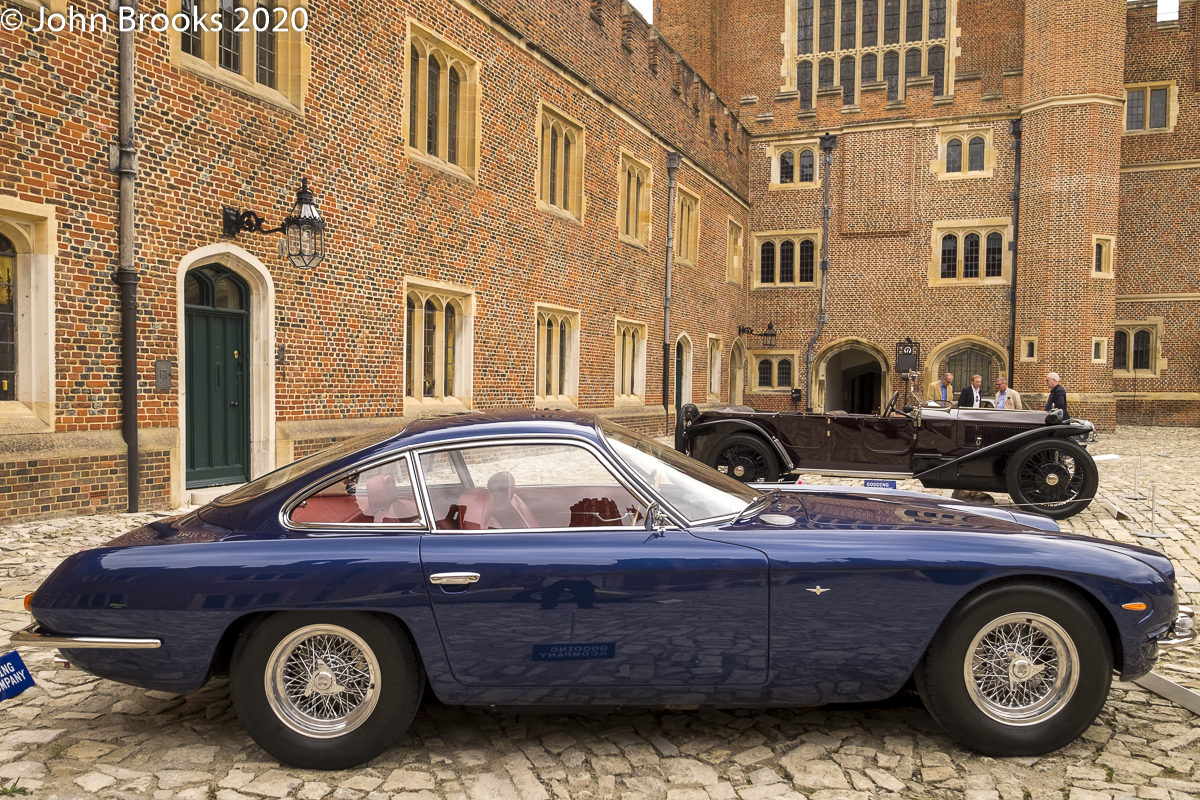
More ’60s Italian flair was to be found in this Lamborghini 350GT, the epitome of Gran Turismo motoring, I have always had a soft spot for this model.
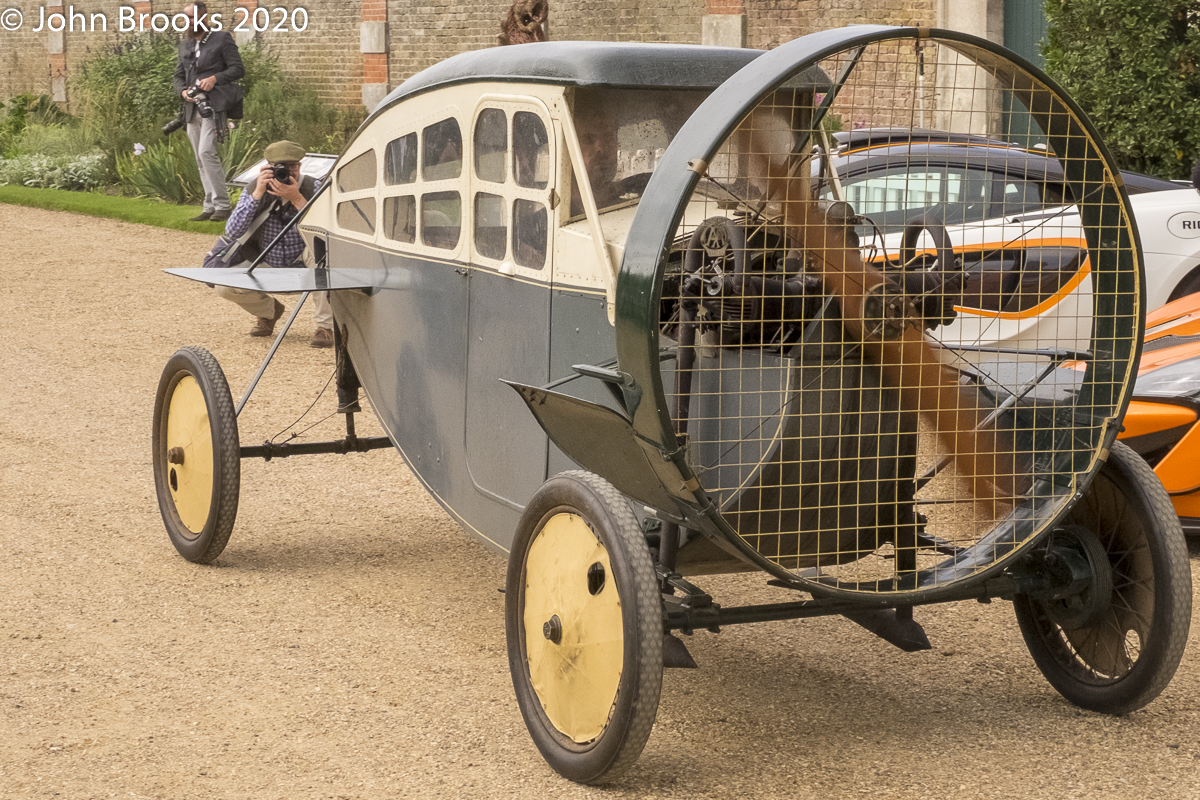
A serious candidate for the most unusual item at the Concours was this replica of a 1921 Leyat Hélica. Carrying the nickname “the plane without wings” its creator, Marcel Leyat, was seeking to simplify personal transport as there would be no rear axle or transmission. The body made of plywood was extremely light and the whole machine weighed under 300kg, some 400kg lighter than the contemporary Ford Model T. Powered by an 8bhp Scorpion engine the Hélica was recorded at 106mph in 1927 at the Linas-Montlhéry circuit. Just 30 examples were built. I encountered the two remaining Hélicas at Rétromobile a few years back, they can be seen HERE
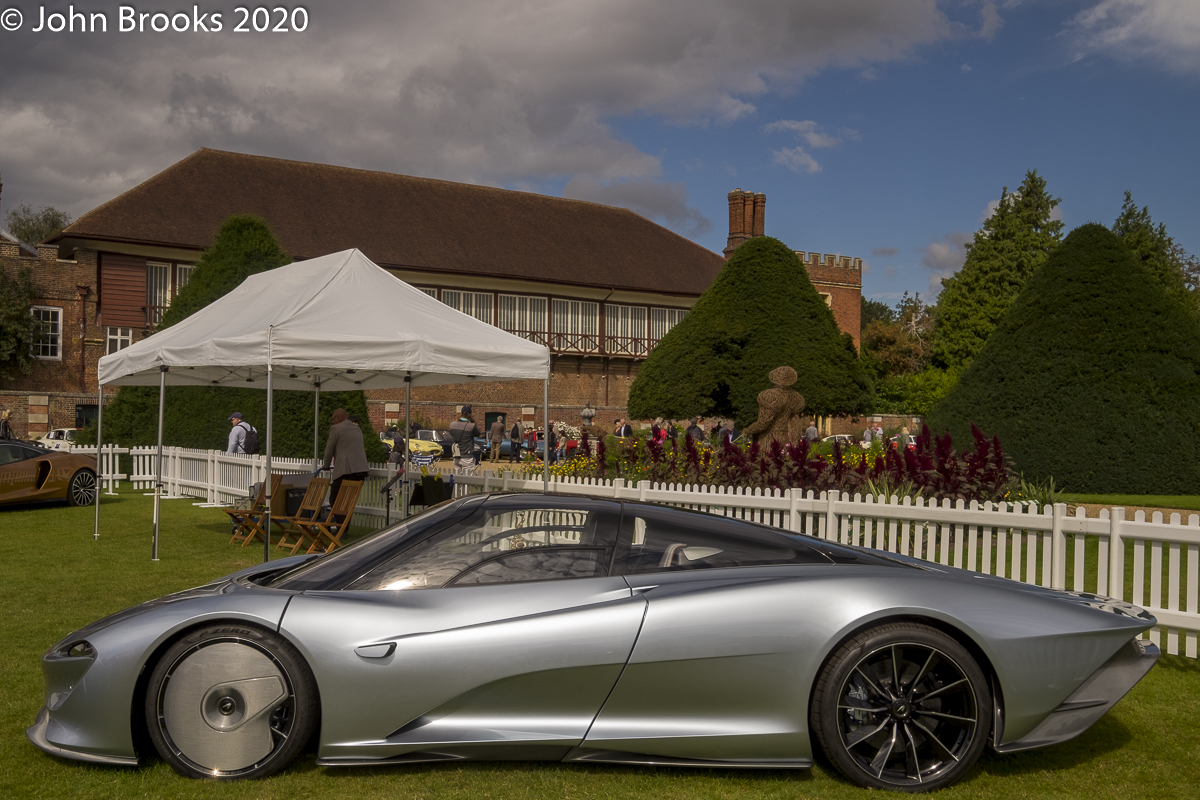
At the other end of the evolutionary scale to the Hélica is the McLaren Speedtail, now the fastest ever road car from Woking, a cool 250mph, eclipsing Andy Wallace’s famous 240mph run in the F1 GTR back in 1998.
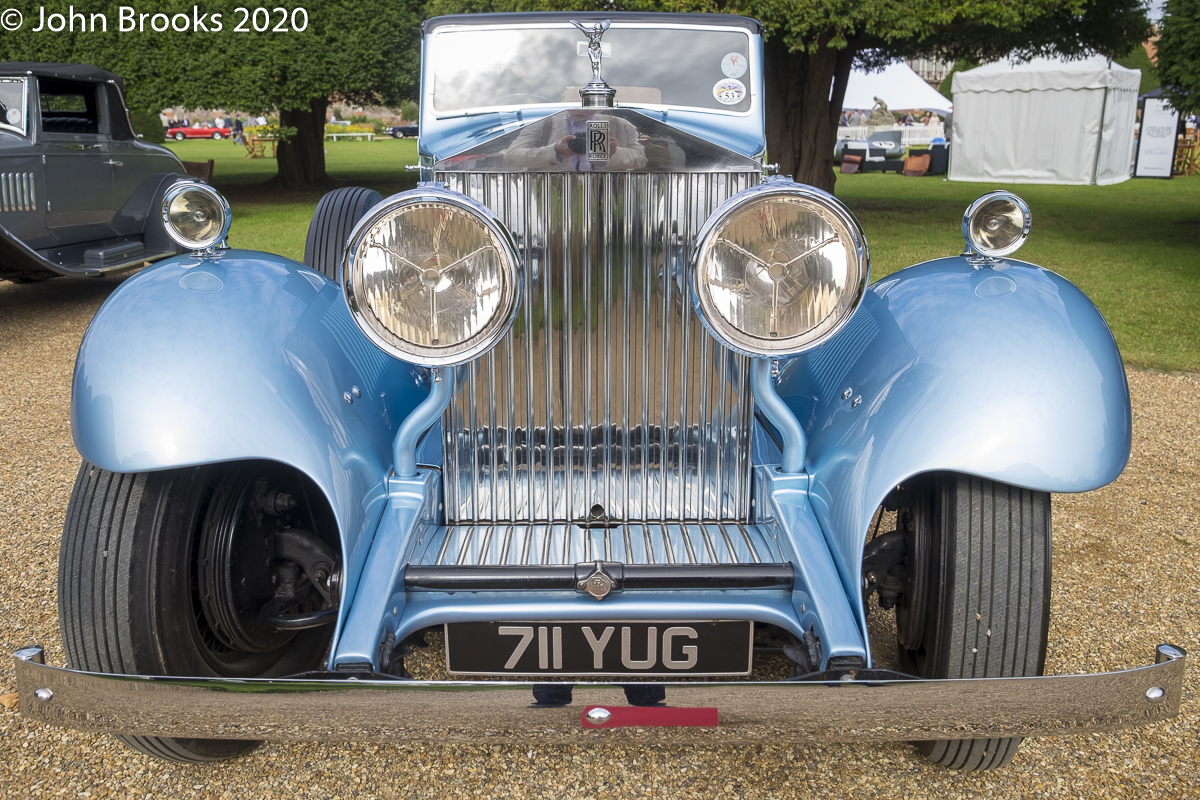
Record breaking is also in the DNA of this Rolls-Royce Phantom ll Continental, one of a trio of Rolls-Royces owned by Sir Malcolm Campbell. He purchased it at the height of his fame for setting world speed records on land and water. Indeed a few months after acquiring the Phantom ll he set his final land speed record at the Bonneville Salt Flats, on 3 September 1935, becoming the first person to drive a car over 300 mph.
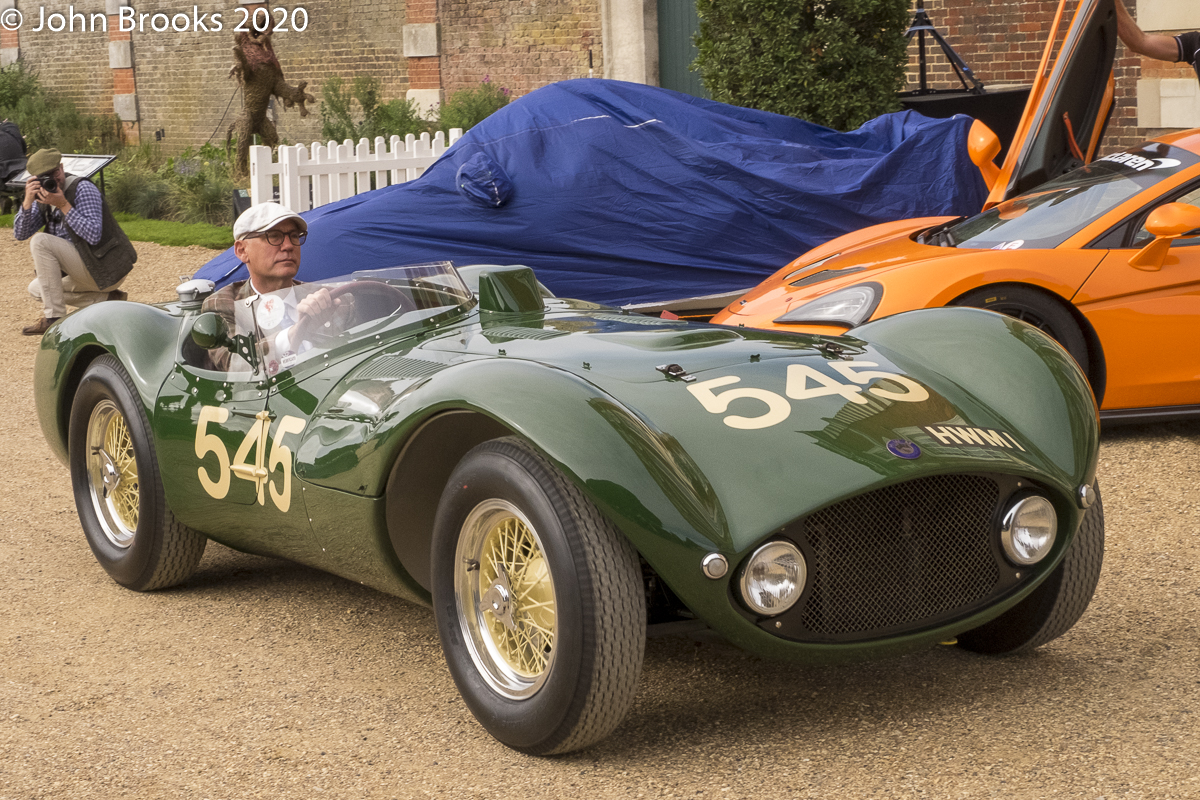
The Chairman of the Concours Steering Committee, Gregor Fisken, drives his HWM Jaguar to take its place around the Great Fountain. This purposeful racer has a dark side to its history. John Heath, co-founder of HWM, was killed in the 1956 Mille Miglia when HWM1 left the road in treacherously wet conditions just north of Ravenna. The car was repaired and raced on successfully for many years.
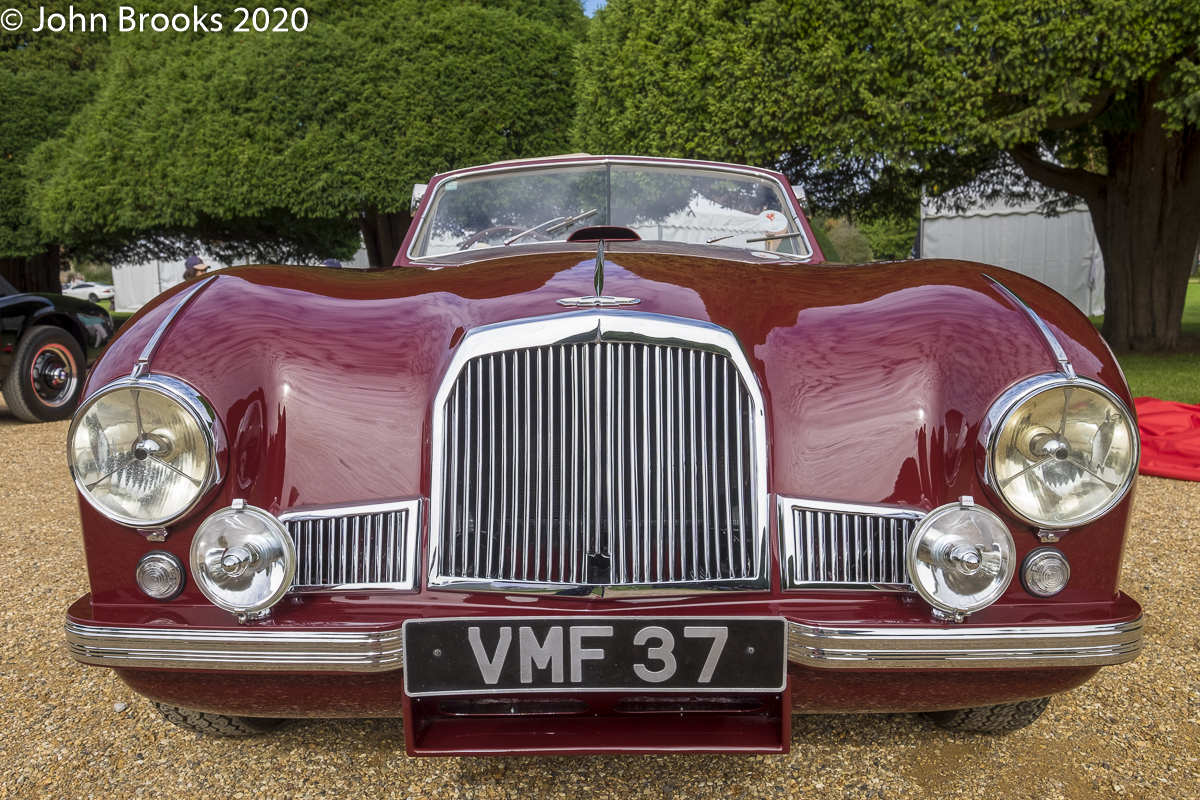
This is the development Aston Martin DB2 Drophead that was driven for a good part of its early life by the company’s owner, David Brown.
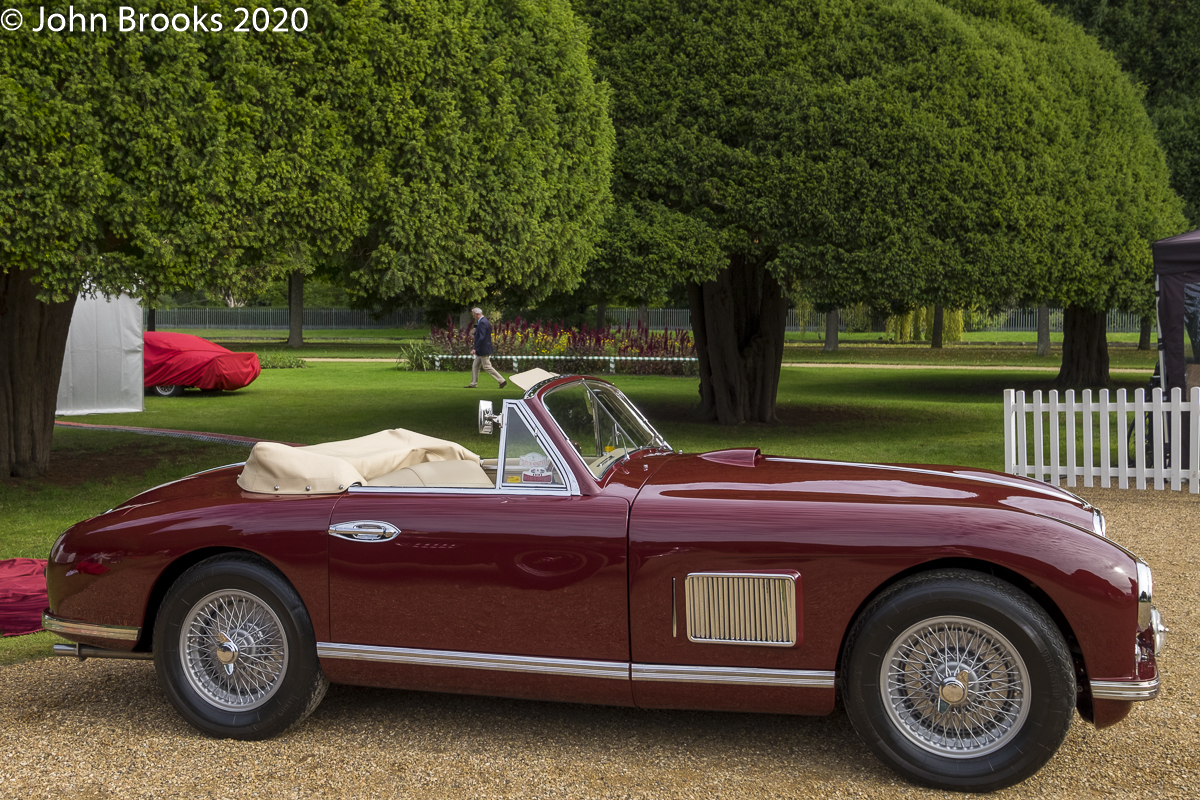
It was also used a press demonstrator, though I expect that the likes of Roy Lanchester, of Sniff Petrol fame, would have been not allowed to get away with antics such as THIS in the Boss’s car.

The Land Rover has been a familiar and comforting part of the British motoring landscape almost forever it would seem. This example is very special, being the first production car. Originally destined for His Majesty King George VI, it ended up in the development department at Rover. Subsequently it was acquired by a Northumberland farmer, David Fairless, in 1970. It remained on the farm for nearly half a century before the family sold it.
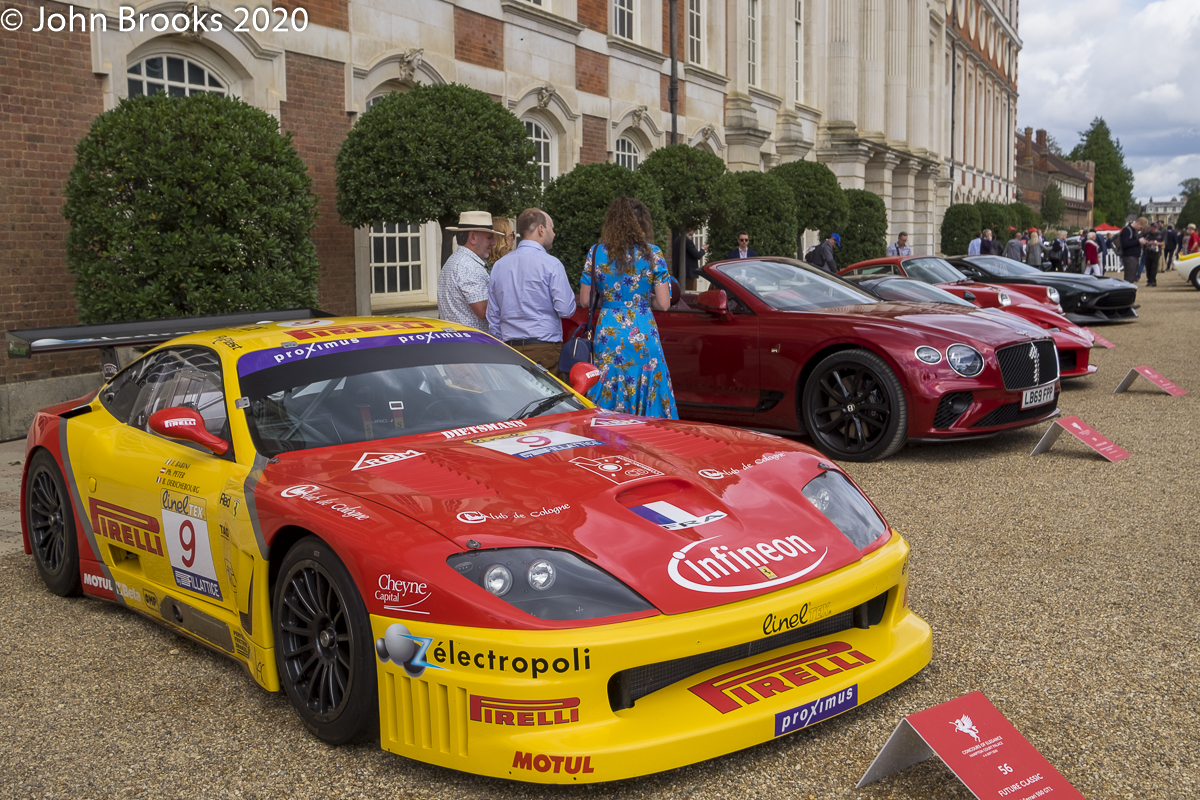
This startling creature is one of two N-Technology 550 Maranellos built to compete in the 2003 FIA GT Championship. Both have very disappointing records, especially in comparison with the Prodrive 550 Maranellos that swept all before them in the GT universe. The main achievement of the N-Technology 550s was to act as a test bed for the 575 Maranellos that followed, though these too were not successful against the “British Ferraris”.
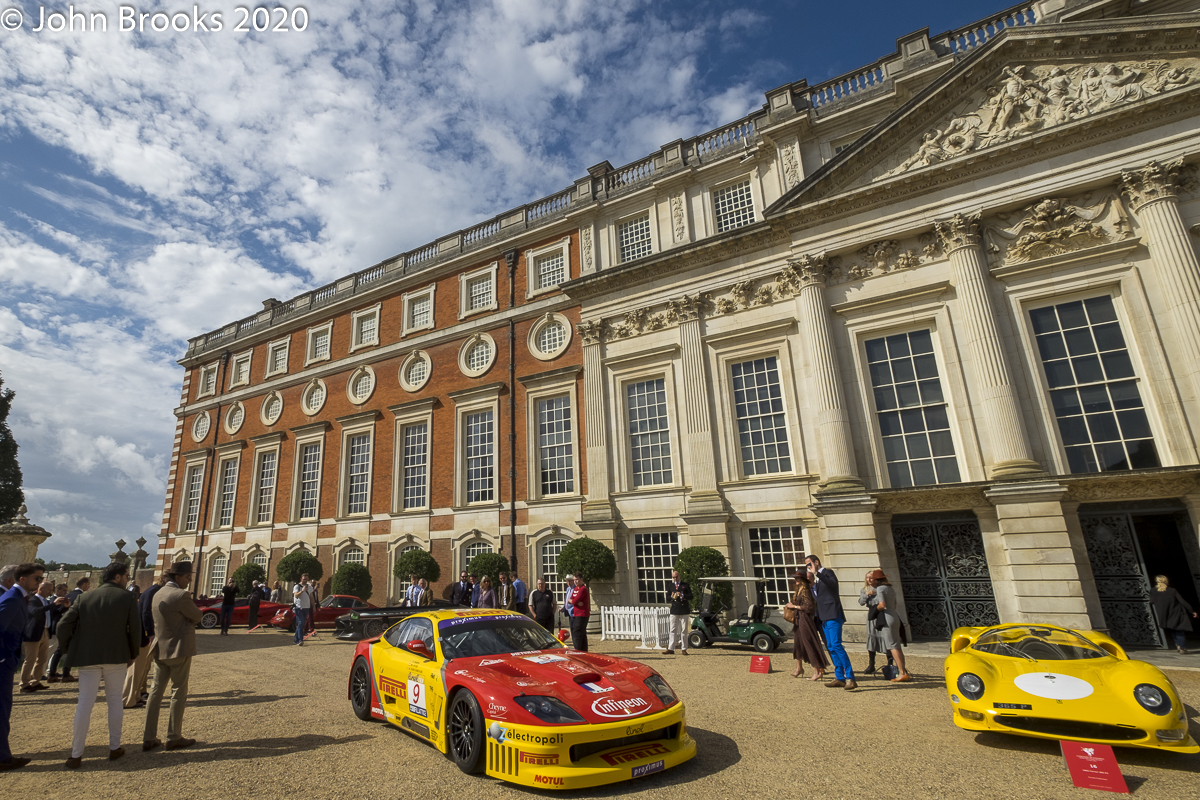
After leaving the FIA GT Championship this example was purchased by Piero Nappi who competed in the Italian Speed Hill Climb Championship till 2016, winning the title three times.
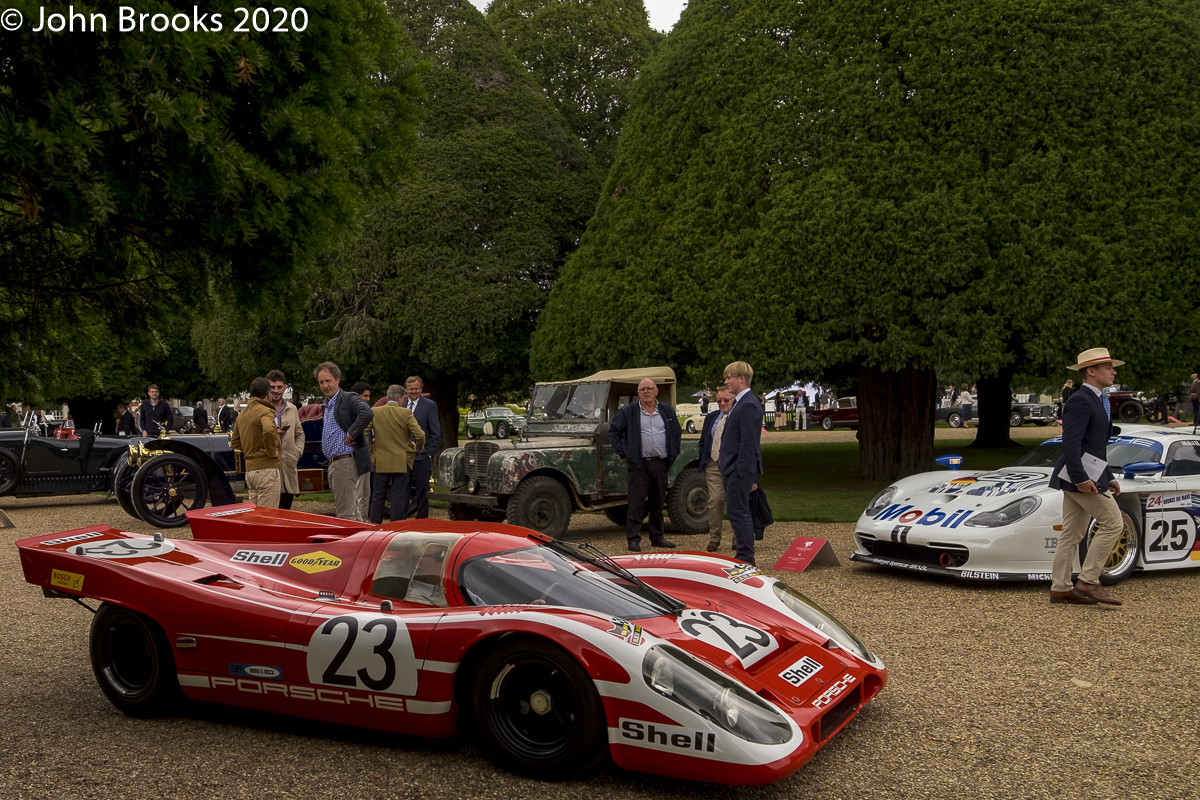
A legend in every sense of the word is the Porsche 917K-023. Its competition career only comprised of seven races. A second place in the deluge conditions of the 1970 Brands Hatch 1000kms for Vic Elford and Denny Hulme was followed by a third at Spa with Kurt Ahrens partnering the Brit. As a member of the armada of Porsche 917s that contested Le Mans that June, it was something of an unfancied runner, with an old-spec 4.5 litre engine. The race, immortalised by Steve McQueen’s iconic movie, was another washout and one by one the favourites dropped out. Wily old campaigners Richard Attwood and Hans Herrmann grabbed the lead in 023 after midnight and held on to score Porsche’s first outright victory at La Sarthe. The story of the car’s post-race career is almost as exciting, with chassis plates being swapped, identities being confused and false liveries applied; it reads more like a spy novel than an auction catalogue. Eventually the whole story came out and now this legend, properly authenticated, resides in California.
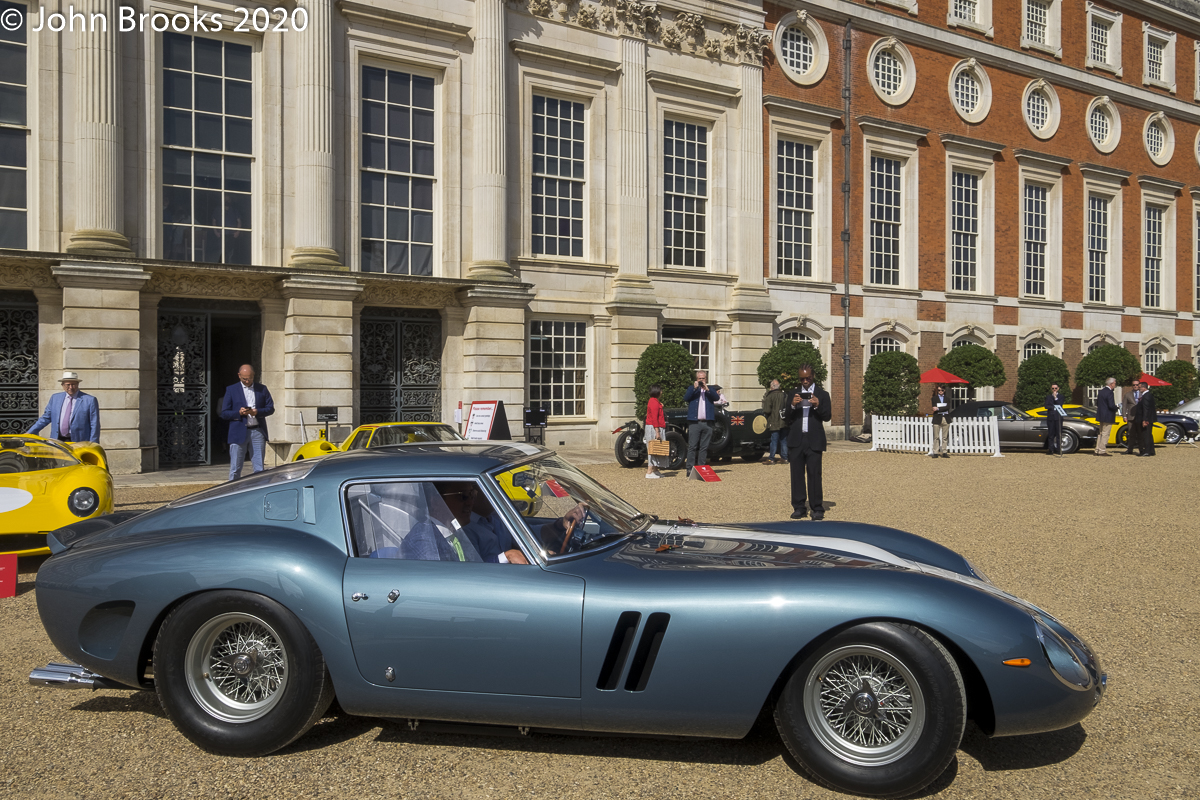
This Ferrari 250 GTO #3387 was the second chassis completed. It was used at Maranello to develop the final specification of the car. It was then sold to Luigi Chinetti whose NART team entered it in the 1962 Sebring 12 Hours with Phil Hill and Olivier Gendebien on driving duties. They won the GT class and finished second overall.
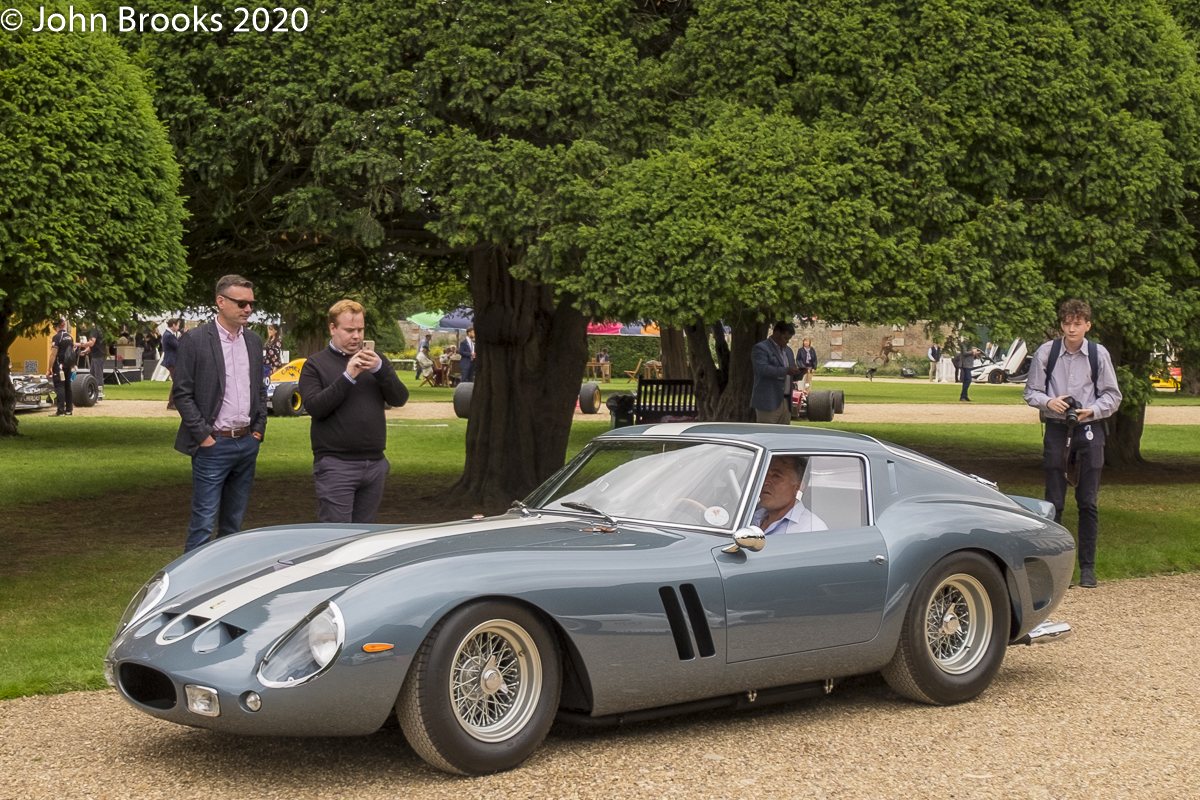
Following this success the 250 GTO was sold to New York businessman, Bob Grossman, who entered it in that year’s Le Mans 24 Hours. With his renowned NASCAR co-driver, Glenn “Fireball” Roberts, they finished sixth overall, a strong result. The Ferrari continued to be raced for a number of years and after retirement became a prized possession of several lucky owners till it crossed back over the Atlantic to be restored by Joe Macari, who is seen parading this motoring gem around the Great Fountain.
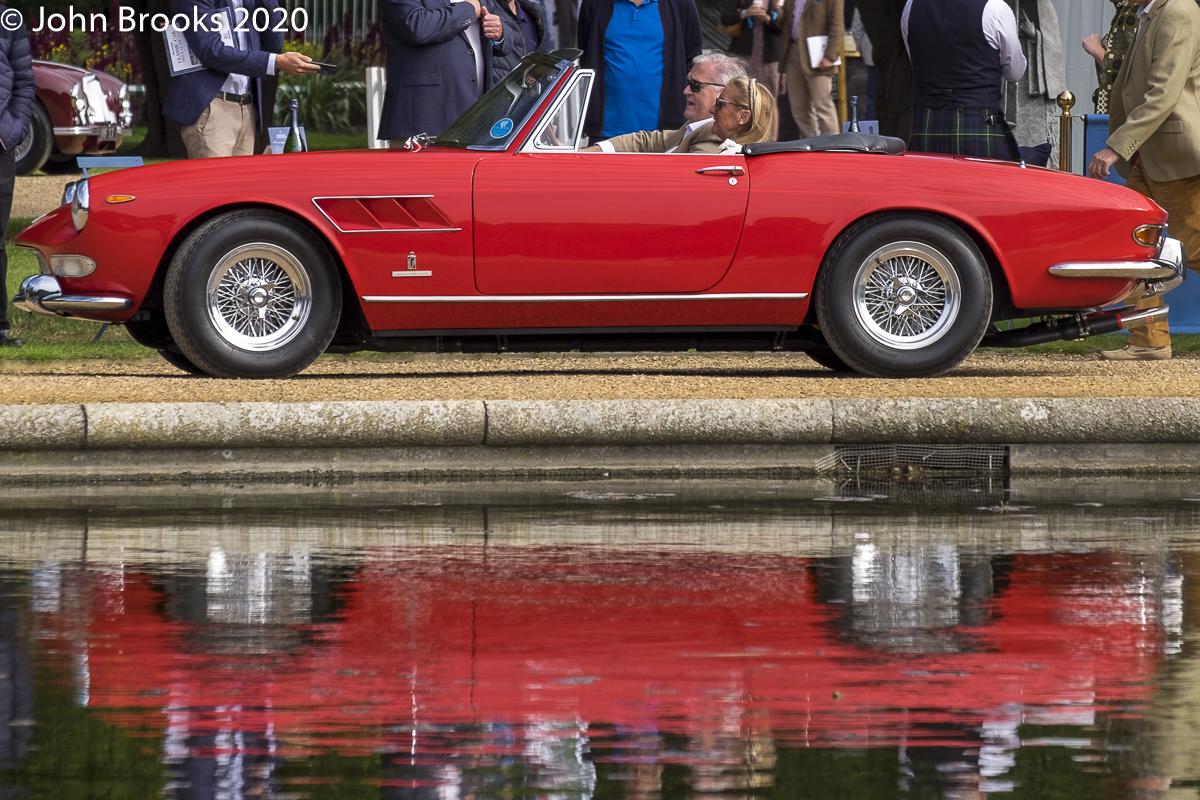
Speaking of motoring gems, I found this sublime Ferrari 275 GTS as a hot contender for best in show, even in the face of such a cornucopia of automotive desirables. Looking through the excellent Ferrari reference website barchetta.cc it appears that the 1980 F1 World Champion, Alan Jones, was a former owner. One of the best features of the Concours of Elegance is the arrival each morning of a new set of cars from the various car clubs. It adds a spice to the already rich mix and ensures that no two days are the same.
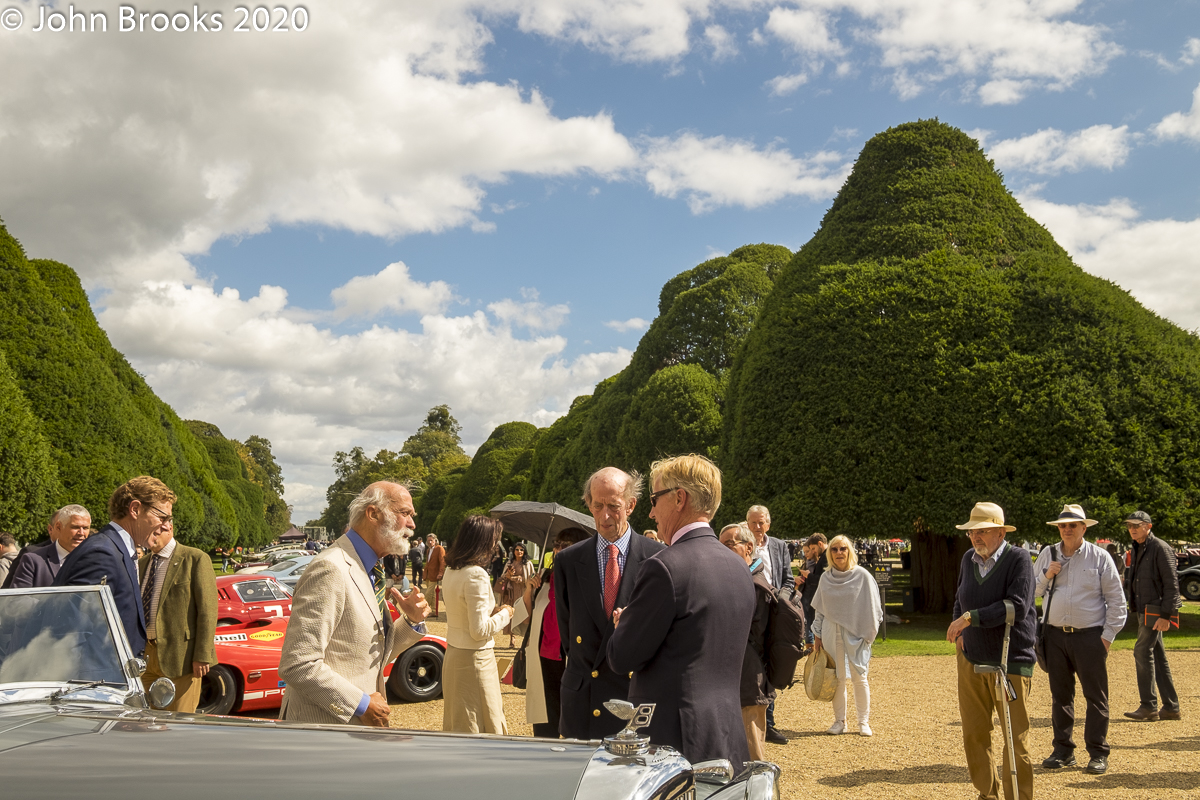
The setting of a Royal Palace for the Concours of Elegance has been one of the features that set the event apart right from the first show. Windsor Castle, St. James’s, Palace of Holyroodhouse have all played host before Hampton Court Palace became the “home” of the Concours. There is a strong connection to the Royal Family, with HRH Prince Michael of Kent acting as Patron, and on the Saturday he brought along his elder brother, HRH Duke of Kent, to enjoy the spectacle.
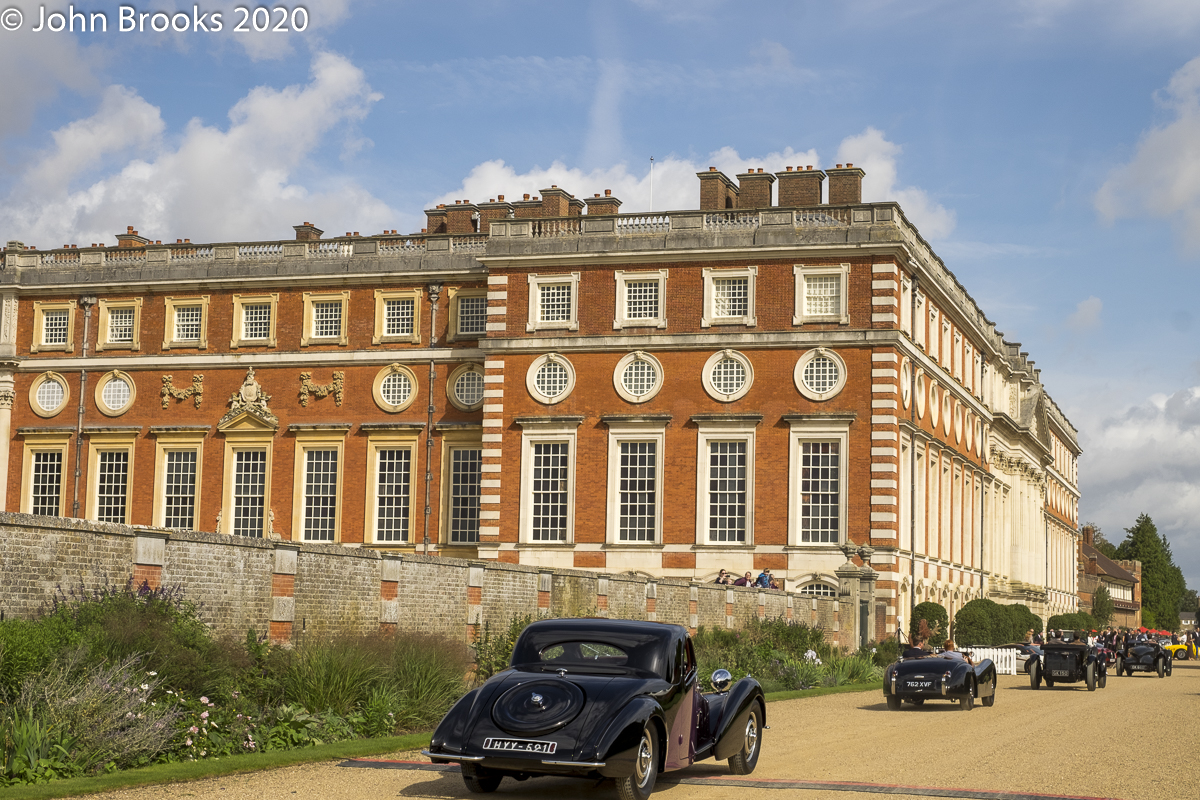
The ninth edition of the Concours of Elegance was held under the most difficult of circumstances but the organisers and owners rose to the challenge and provided a rich celebration of motoring for us lucky ones to savour.
John Brooks September 2020
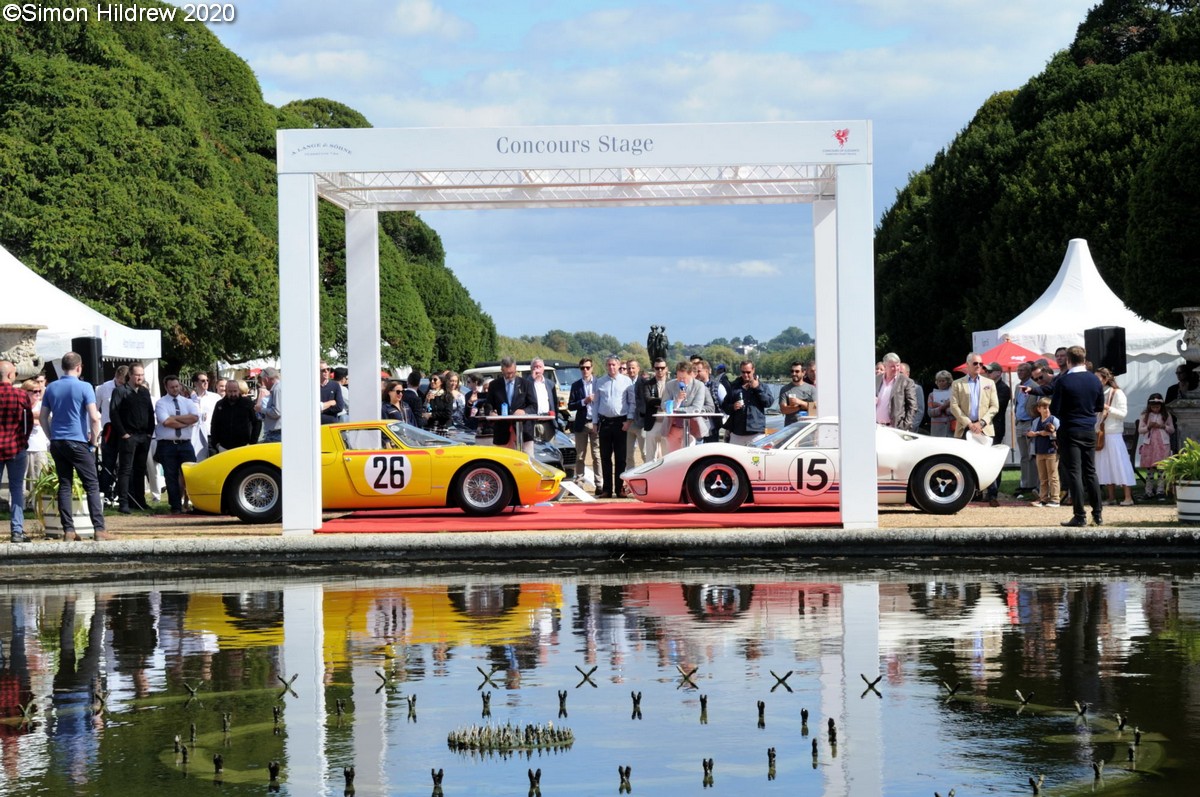
Last weekend the concours season got underway at last, well the first of the majors in the UK, Concours of Elegance at Hampton Court Palace.
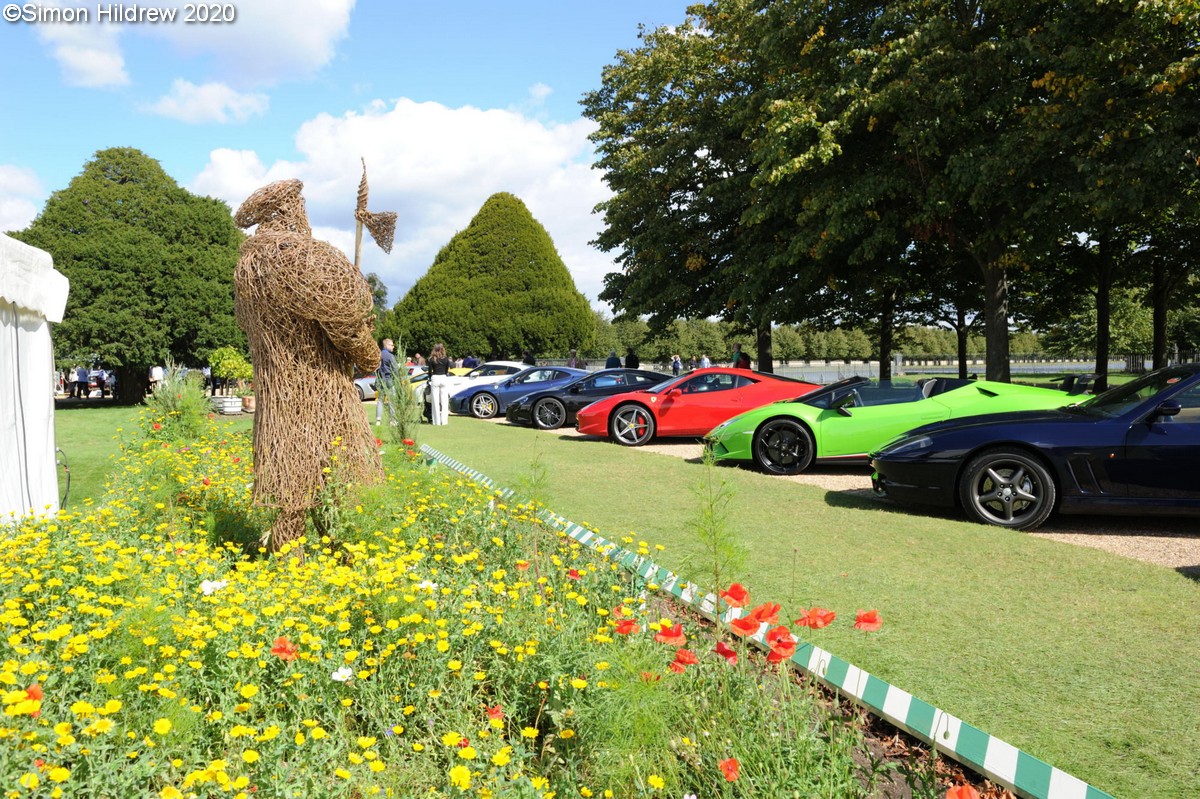
By any standards the show was first class, but taking onto account the obstacles faced by the Steering Committee in getting cars and people to the palace, it was nothing short of miraculous.
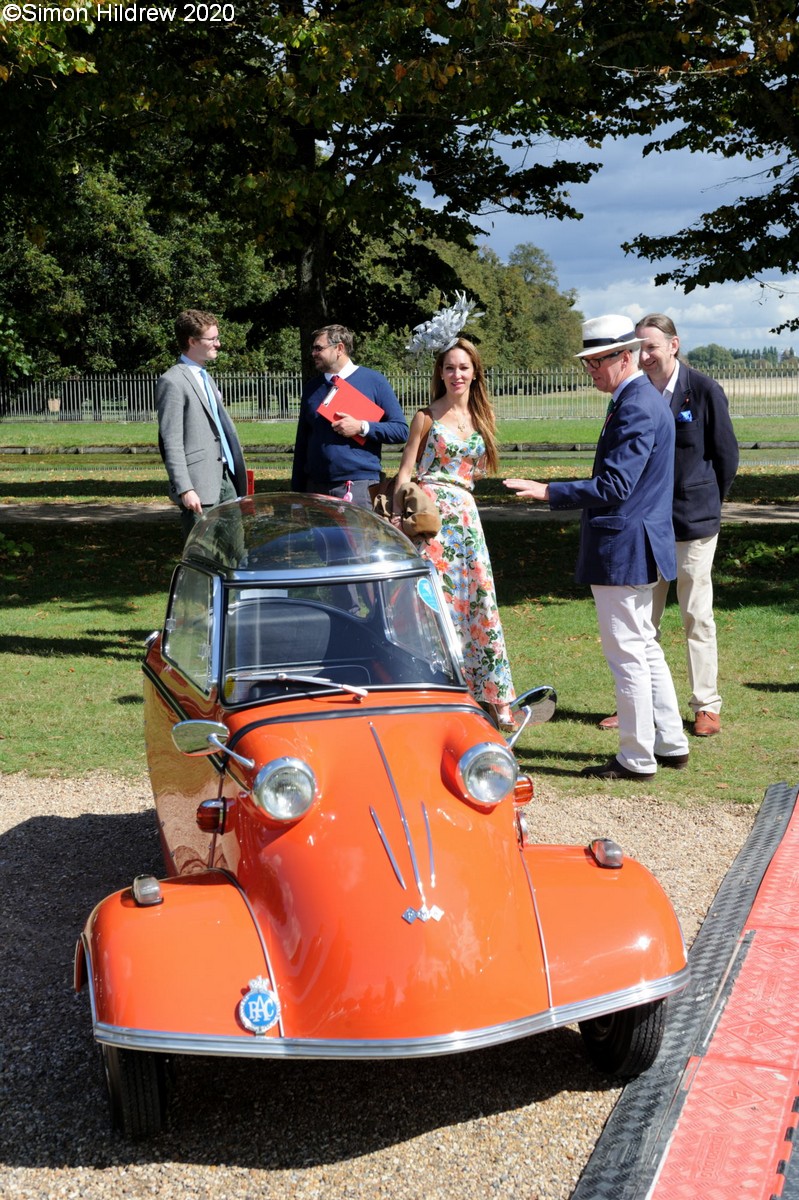
Clearly from the expressions and enthusiasm of those attending we have all been starved of this kind of automotive feast, so we gorged ourselves on the rich fare, not sure when we see the like again.
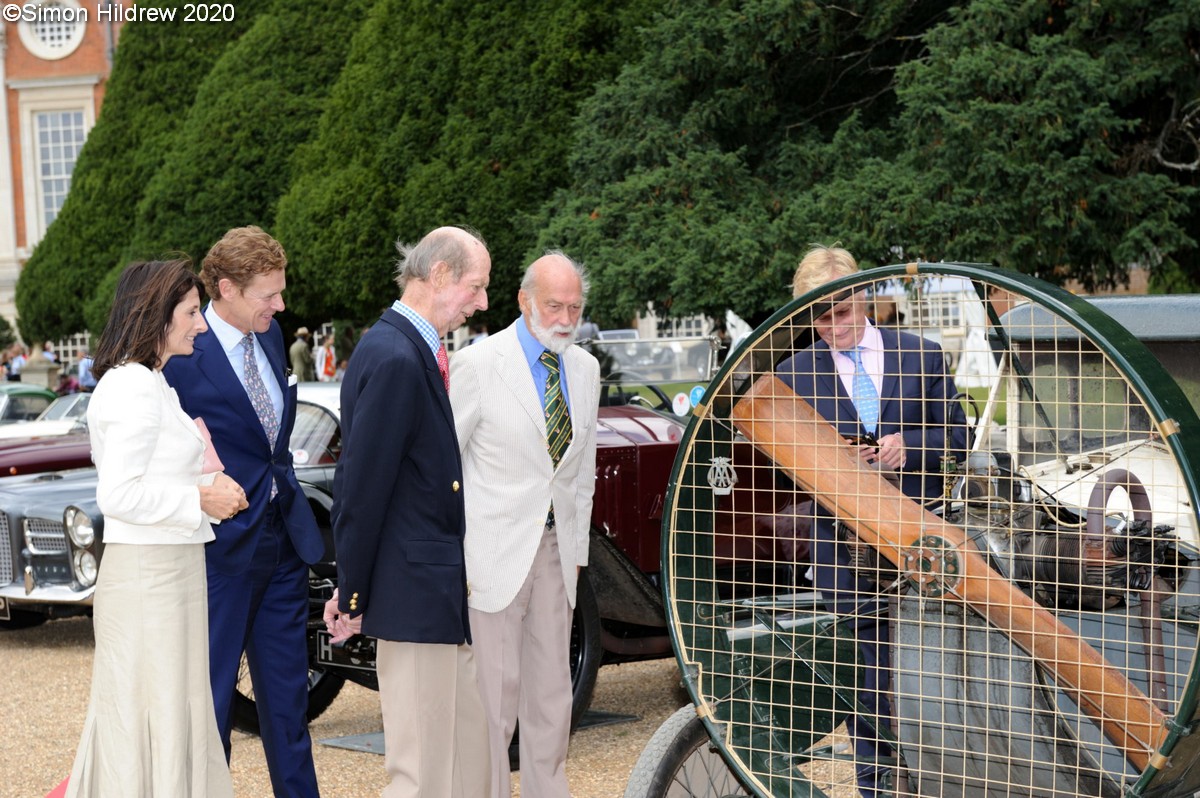
The Royal family were represented by HRH Prince Edward, Duke of Kent, and his younger brother, HRH Prince Michael of Kent, who is the Patron of the event and a very keen motorist.
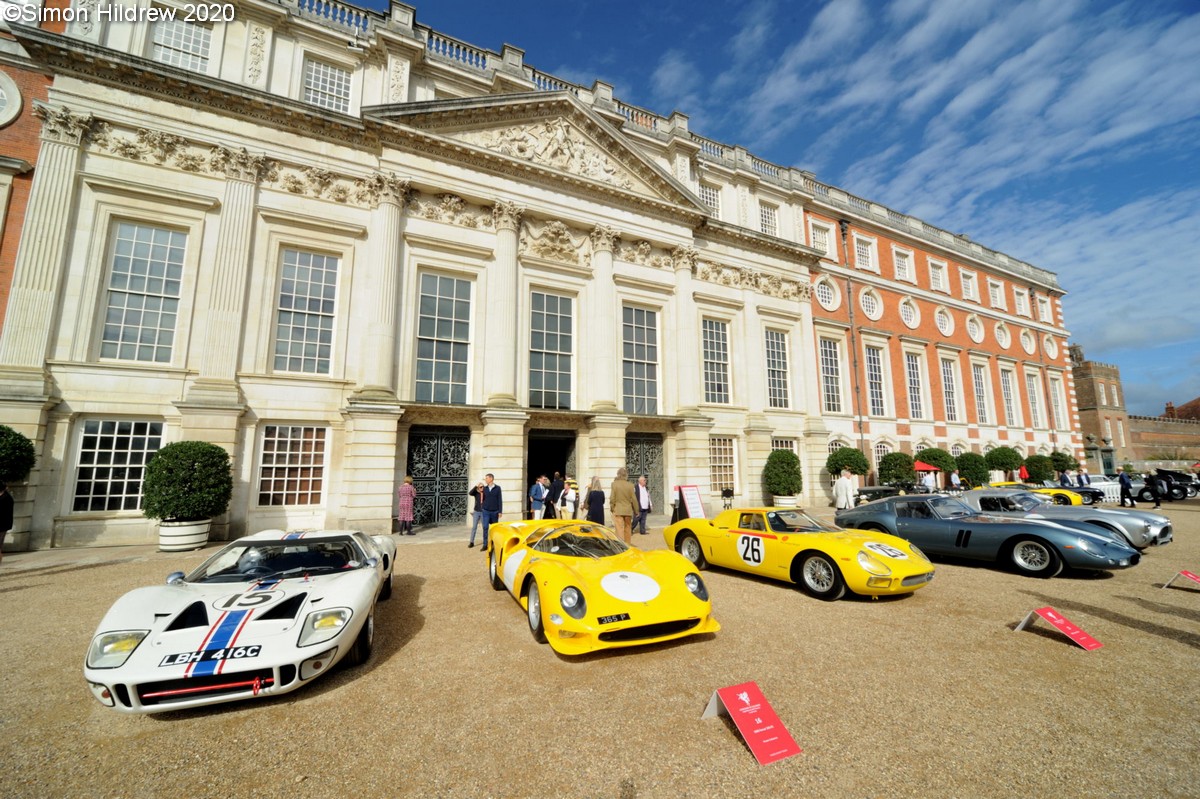
The weather behaved itself and a good time was had by all. Simon Hildrew was on the lawns, armed with Canons, his shots all hit their target. More from the palace in the next few days.
John Brooks, September 2020
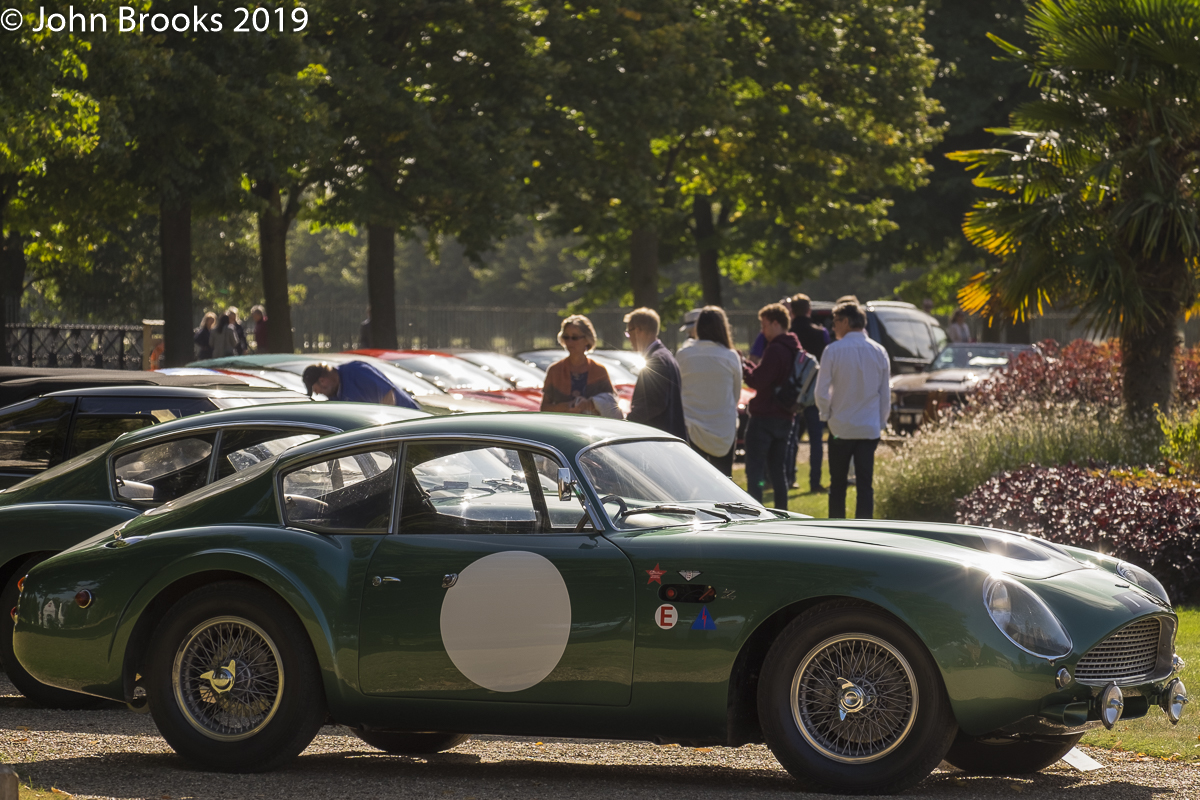
Time to leave the Concours of Elegance behind.
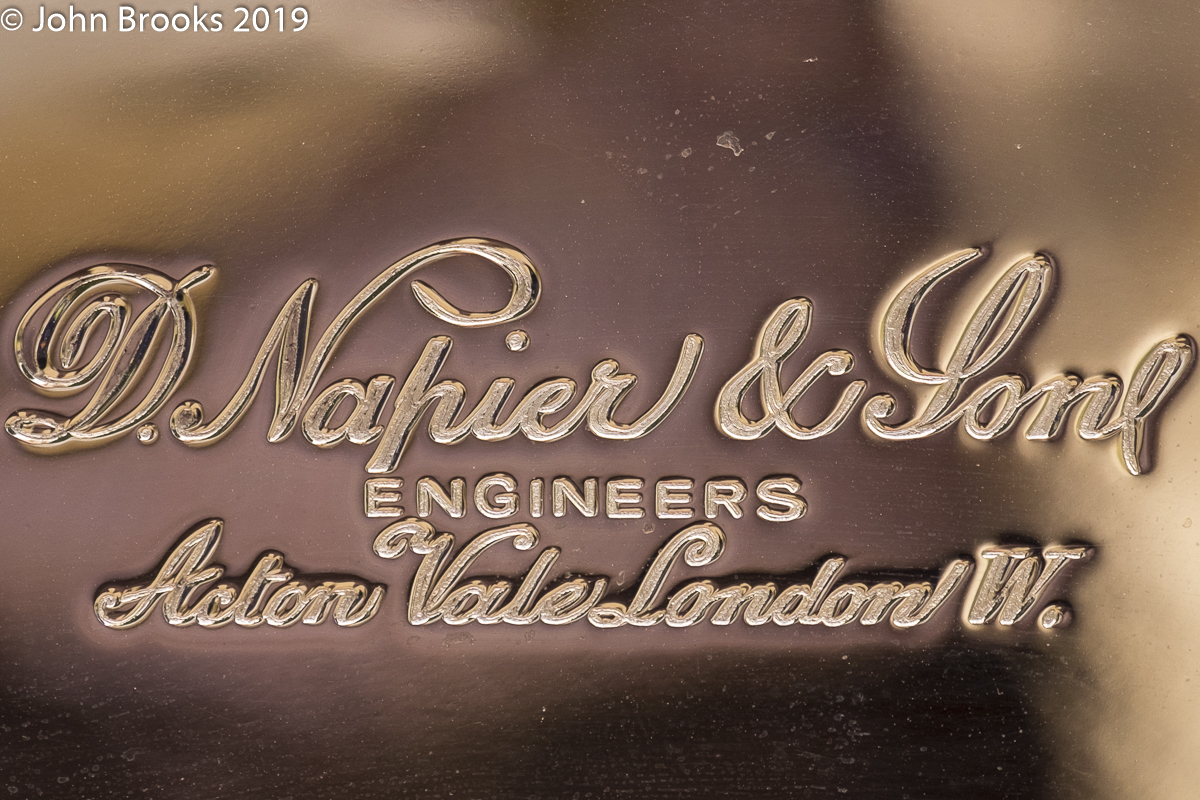
Here is a final glance back to a glorious three days.
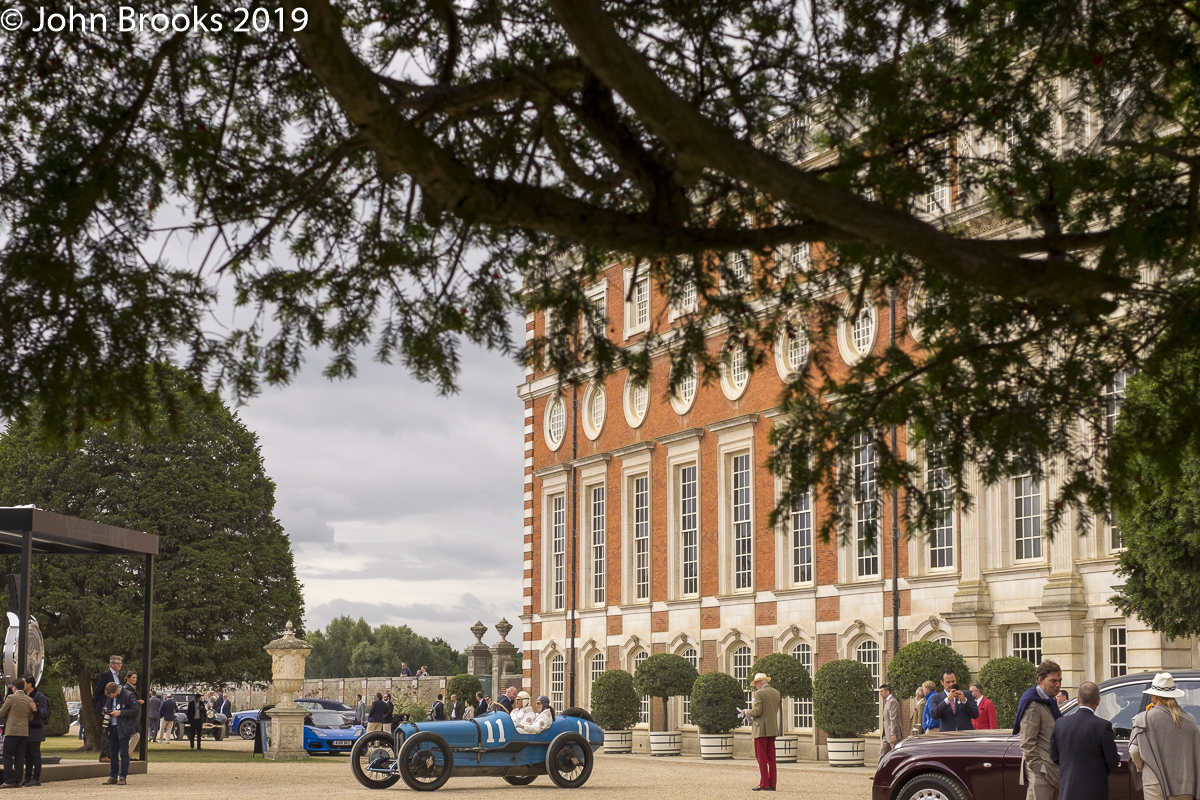
In month or so we will reassemble in the shadow of Hampton Court palace.
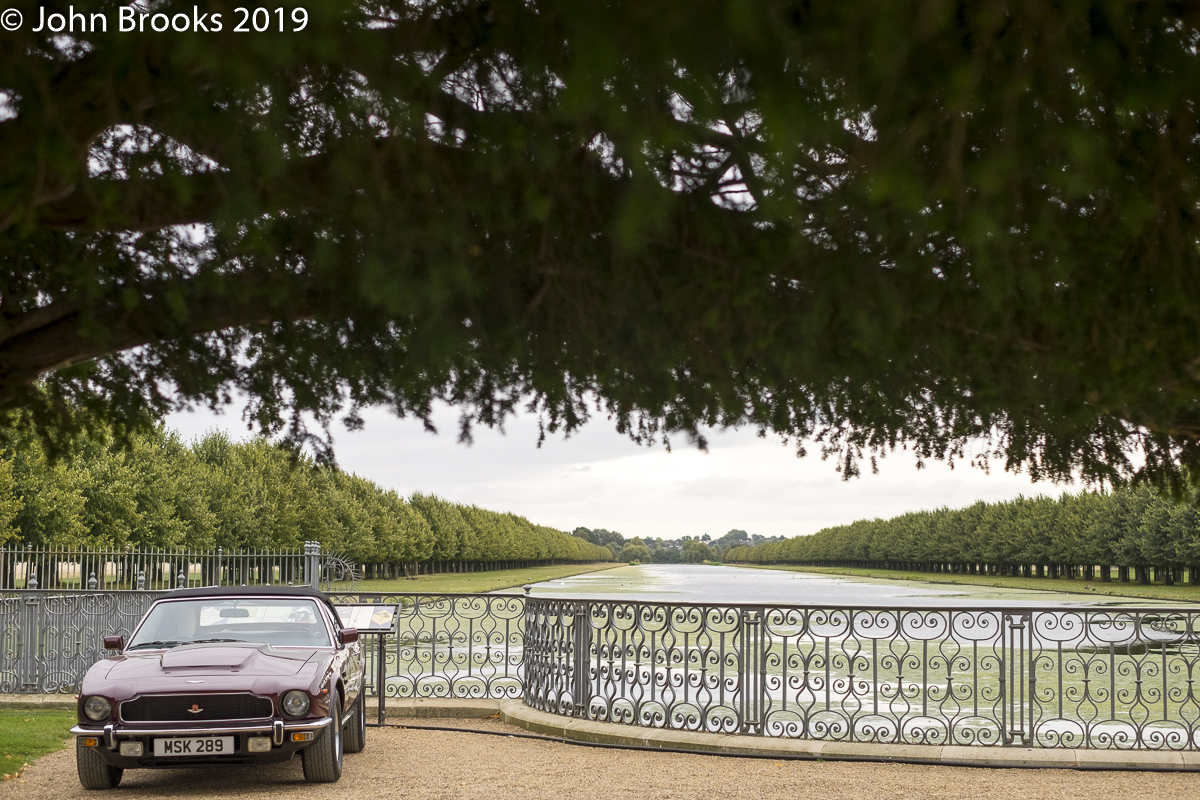
There will be much to enjoy together, a feeling that has been in rather short supply during a good part of 2020.
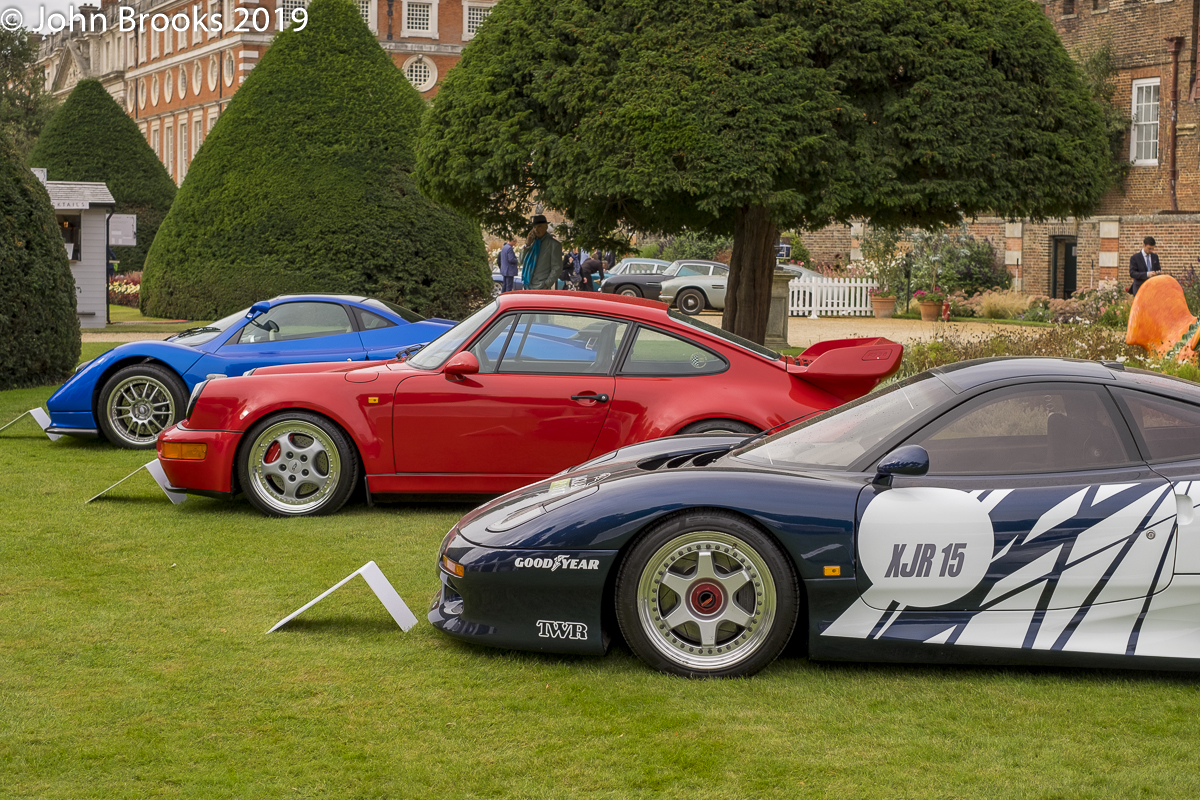
So, let’s look forward to September 4-6 and put the band back together.
John Brooks, July 2020
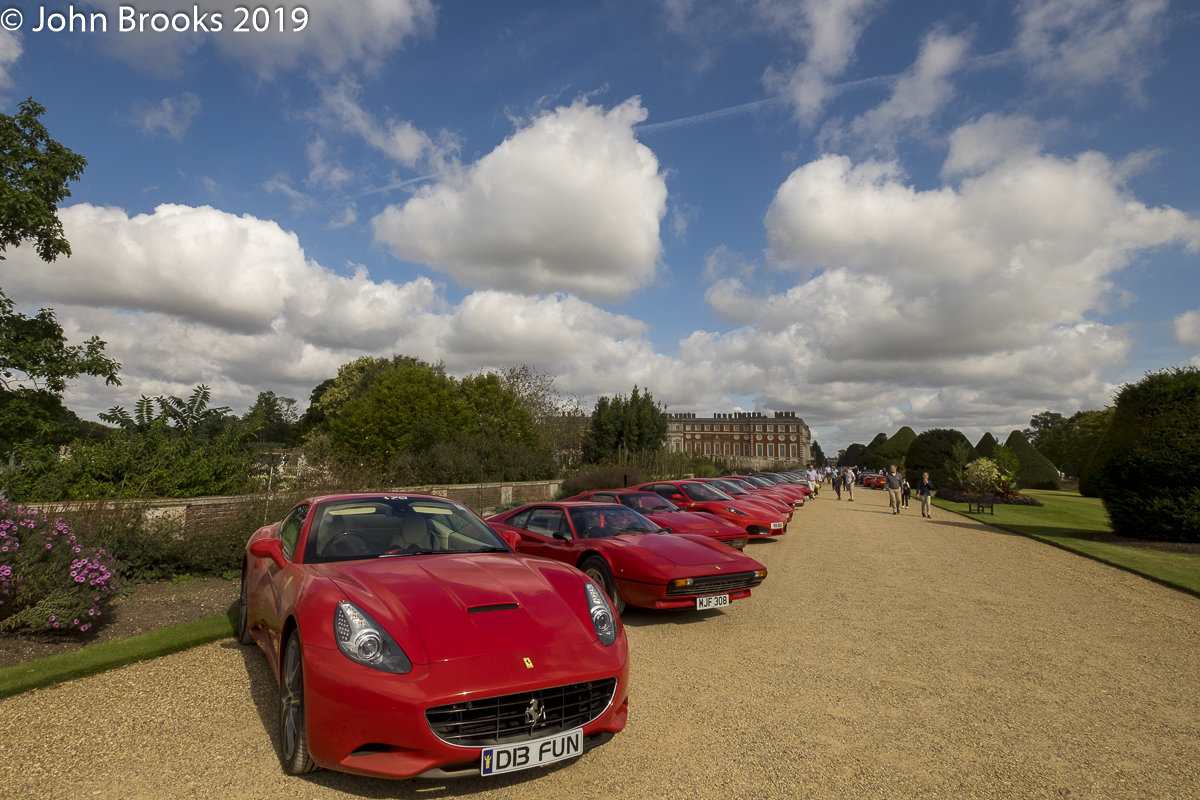
The influence of Italy on the automobile has been immense, particularly in the performance and style areas. So, when considering the the rich tapestry of cars on display at an event like the Concours of Elegance, it pays dividends to seek out the Italian element and give it the due attention it deserves.
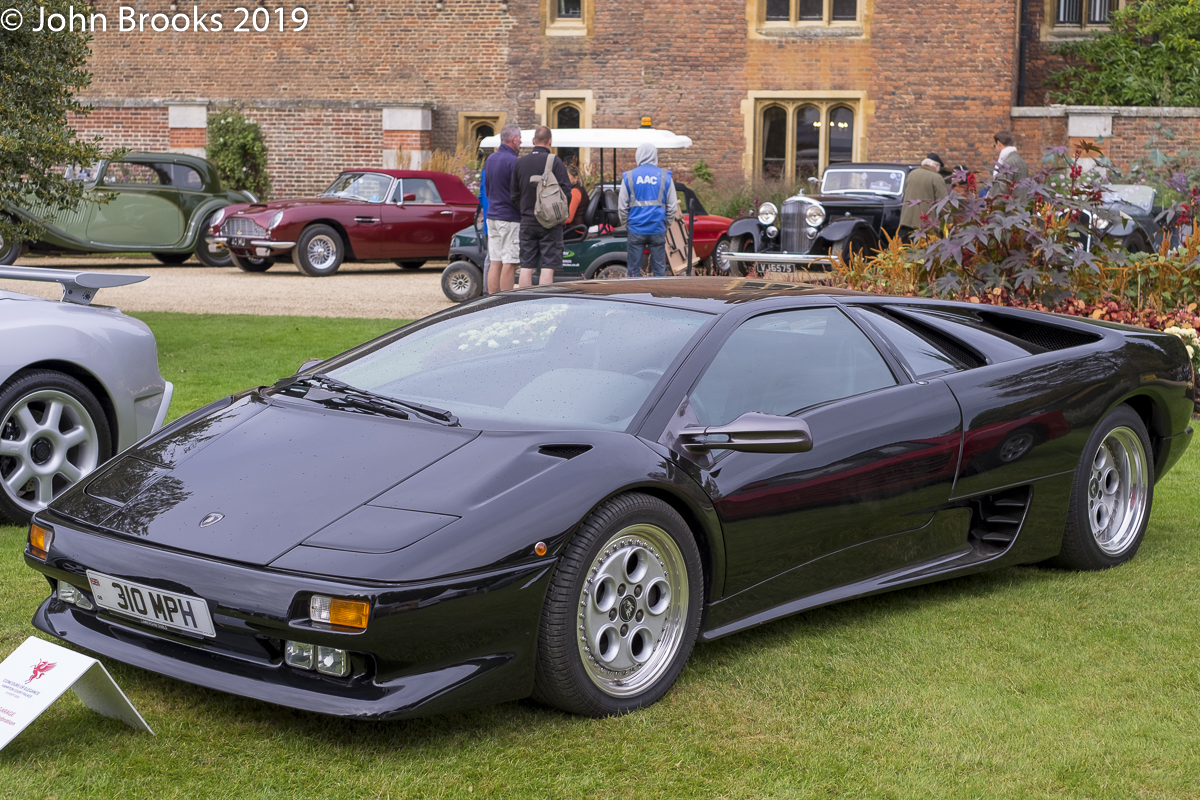
Within minutes of entering the Great Fountain Garden I stumbled across two Italian classics, this Lamborghini Diablo, the answer from Sant’Agata Bolognese to the Ferrari F40. At this point in time Lamborghini had just been acquired by Chrysler, the deal was done the day after the first Diablo prototype ran. Thirty years on and the Diablo still creates an impact when encountered.
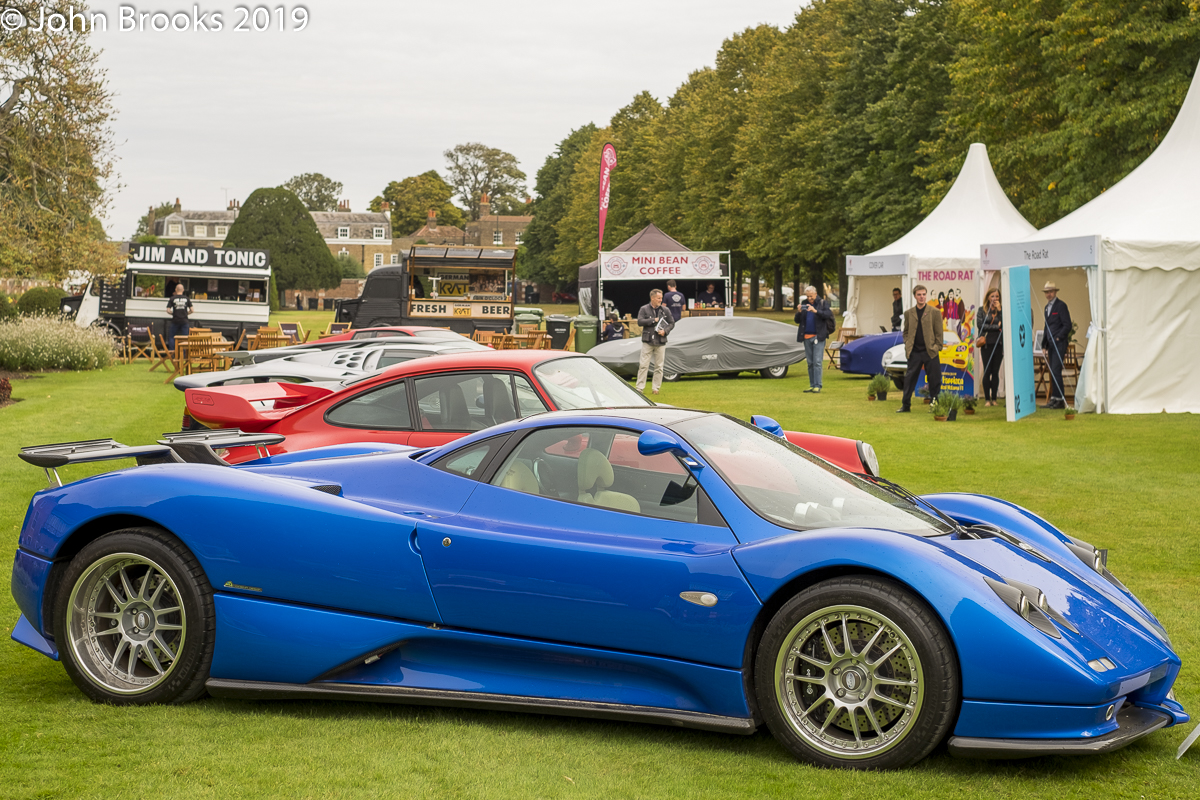
The same can be said of the Pagani Zonda, perhaps even more so, given the rarity of the beast. Just around 150 examples are thought to have emerged from the factory at San Cesario sul Panaro. This is located in the mechanically fertile territory between Modena and Bologna, not far from Lamborghini’s factory.
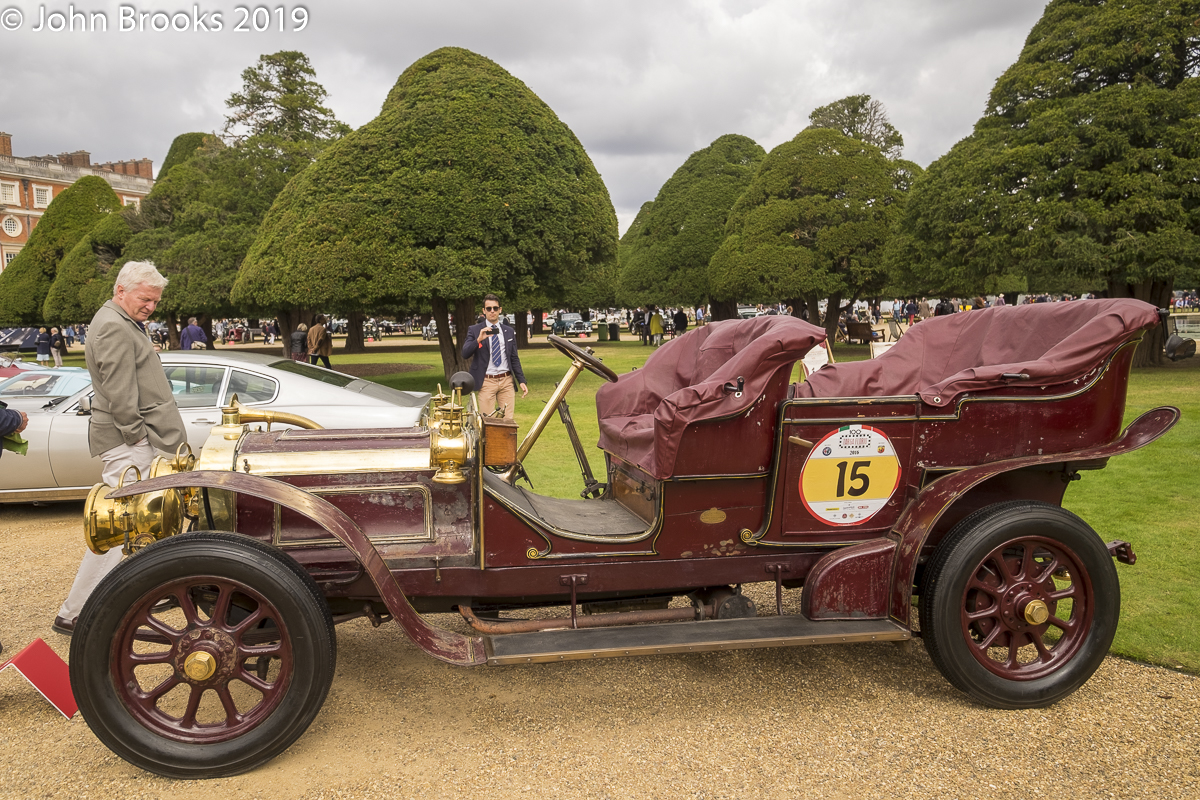
A complete contrast is the 1907 Diatto A Clément, it being the only known survivor of this model. It was the result of a partnership between the Turin coachbulider, Diatto, and French entrepreneur, Adolphe Clément-Bayard who was involved in the design of bicycles, tyres, aeroplanes as well as cars. He was a pioneer in motor sport entering three cars in the 1906 French Grand Prix, held near Le Mans, generally agreed to be the first Grand Prix. His son, Albert, finished third in the race but was killed in a crash during practice for the same event in 1907.
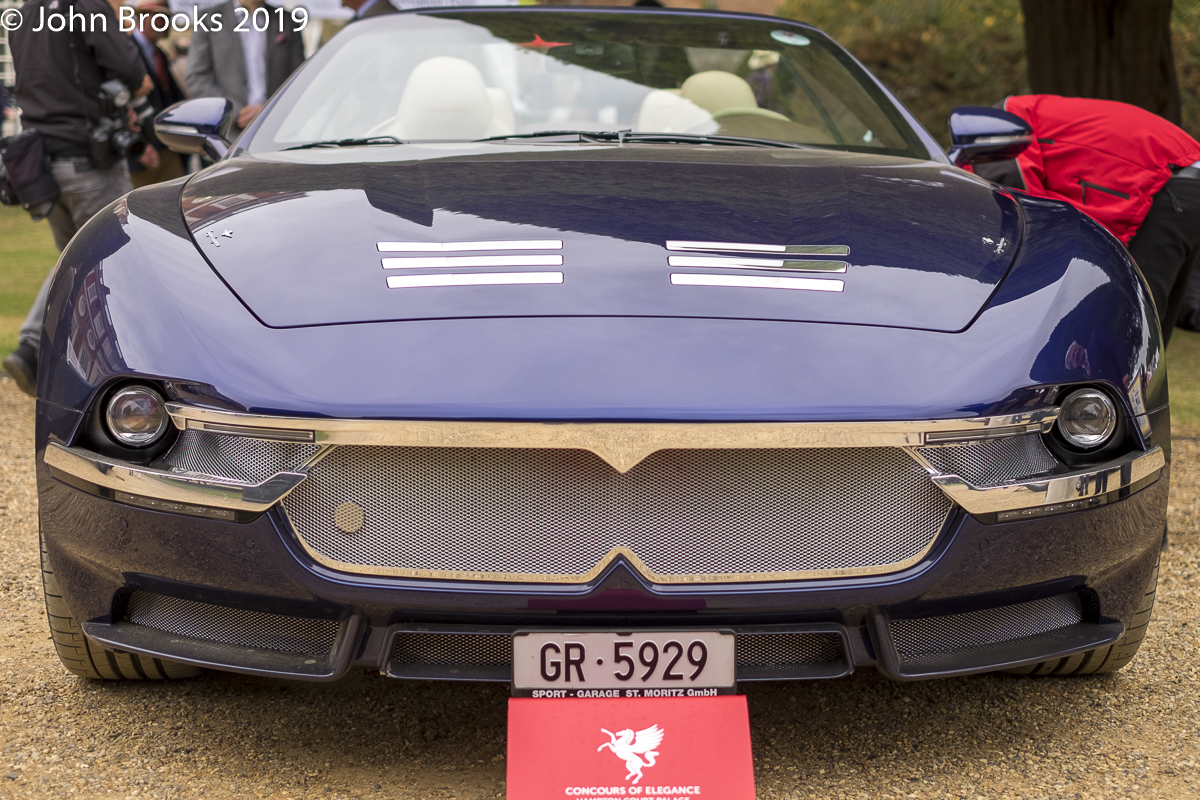
Bang up to date is this salute to the past. In 1959 the Shah of Persia ordered a very special Maserati, a development of the 3500 GT, with a larger V8-engine to power it and various bespoke features to distinguish it from lesser mortals’ cars ; it was the quickest GT of the time. Fast forward seventy years and Touring was modifying a Maserati once more. The Touring Superleggera Sciàdipersia (Shah of Persia) Cabriolet was the result. Based on a current Maserati GranCabrio, the Sciàdipersia is a throwback to the days when a manufacturer would supply a chassis and powertrain, then a coachbuilder would style and fit out the car to the customer’s individual specification.
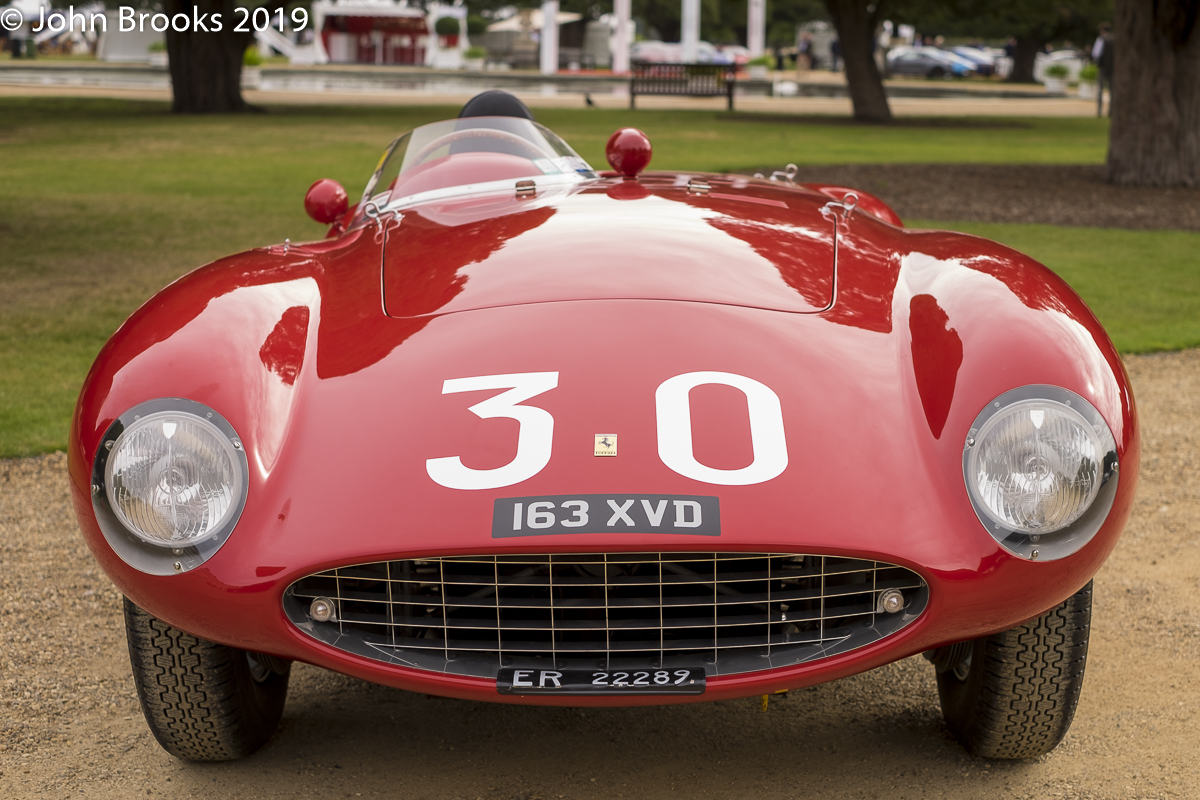
This Ferrari 500 Mondial is a Series I car that was bodied by Scaglietti on drawings made by Dino Ferrari, one of five such examples. It was purchased from the factory by Guido Petracchi who entered it in the 1955 Ethiopian Grand Prix which he won. It was later displayed in the Italian pavilion at the Silver Jubilee Fair of Addis Ababa. It had another outing at the Cote de Asmara race in 1956, where it took overall victory with Gaetano Barone behind the wheel. Two further victories came shortly after, but then the car was put into long-term storage in Ethiopia. In 1970, car collector and dealer Colin Crabbe was on vacation in Asmara, Ethiopia, when a local led him to a small lock-up containing the totally original 500 Mondial – Crabbe bought it on the spot.
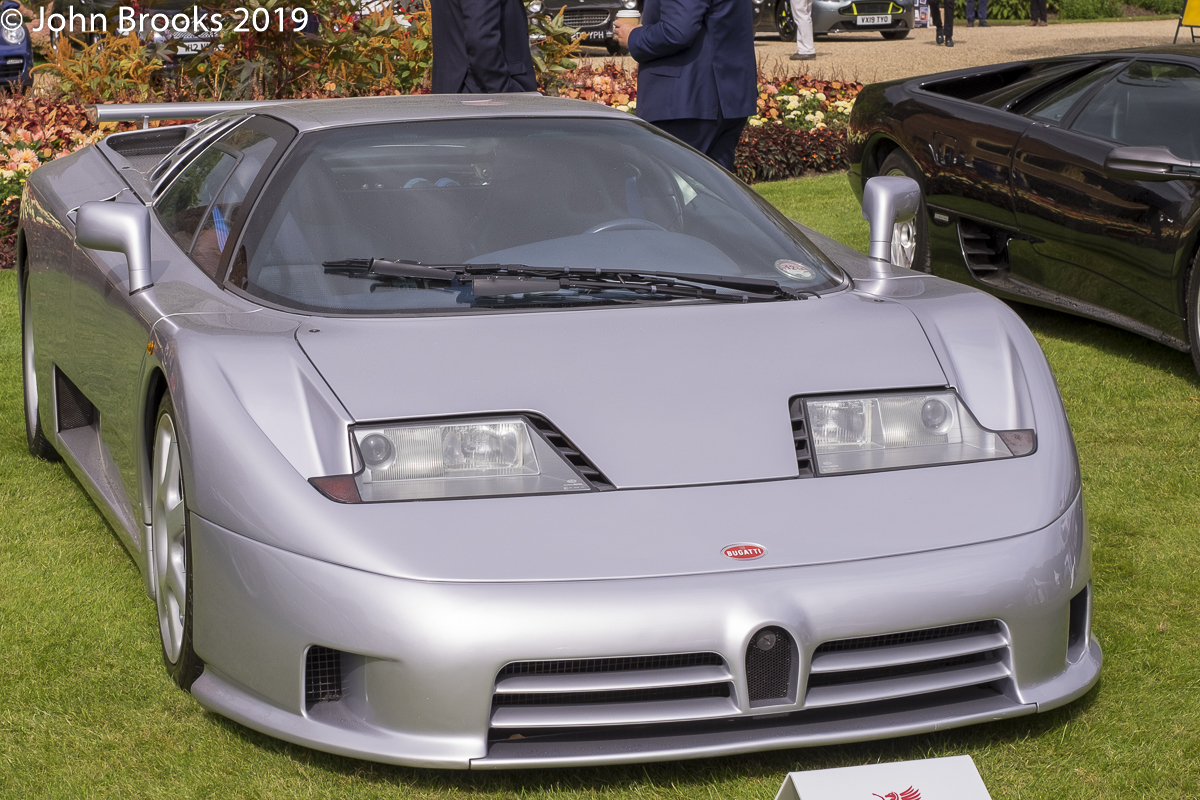
Another striking Italian is this Bugatti EB110…………..I looked at this episode in Bugatti history a while back HERE
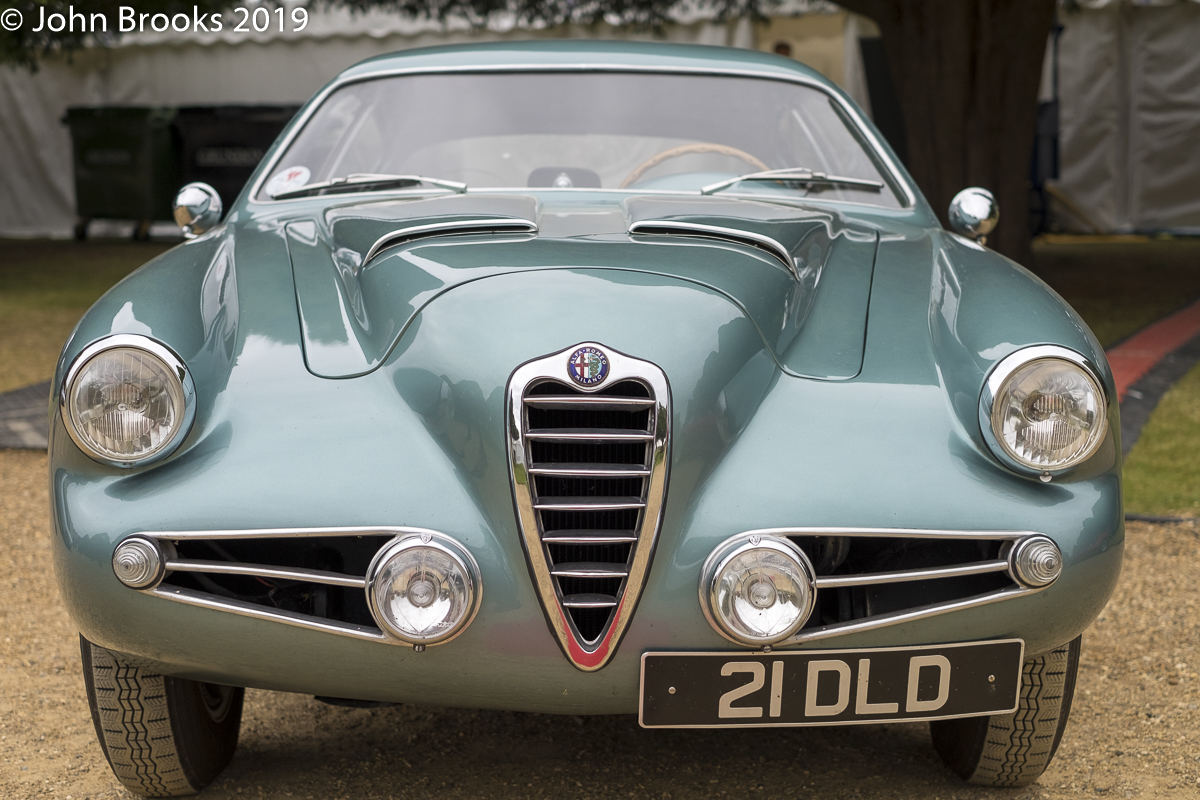
This elegant 1954 Alfa Romeo 1900 C SS Zagato has a proper race pedigree, being owned from new by Jo Bonnier, who would go on to have a successful career in F1 and endurance racing. In the three races that he started with the Alfa he would take class honours each time, winning the 1955 Swedish Grand Prix outright.
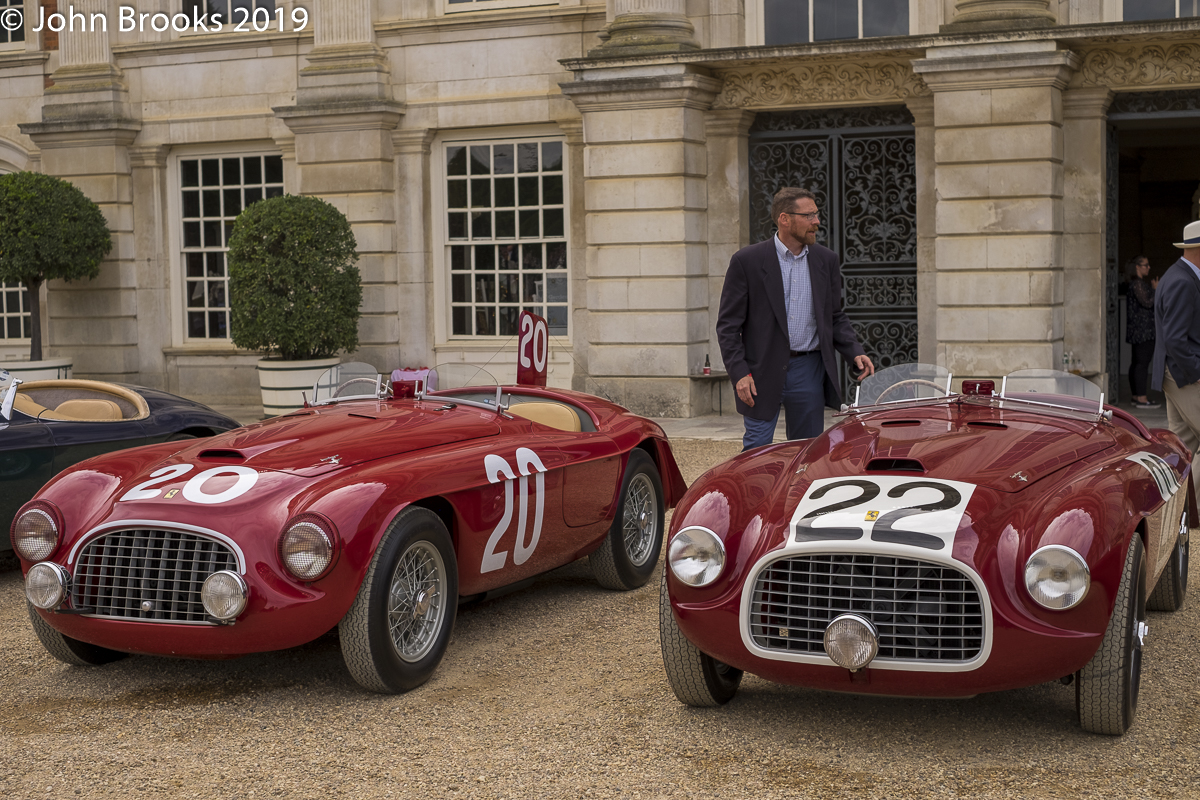
1949 was a most significant year for Ferrari. Victories in the Mille Miglia and both the 24-hours of Le Mans and Spa established Ferrari at the very summit of endurance competition. Amazingly these two 166 MM Barchettas achieved the three triumphs and both were at Hampton Court for our appreciation.
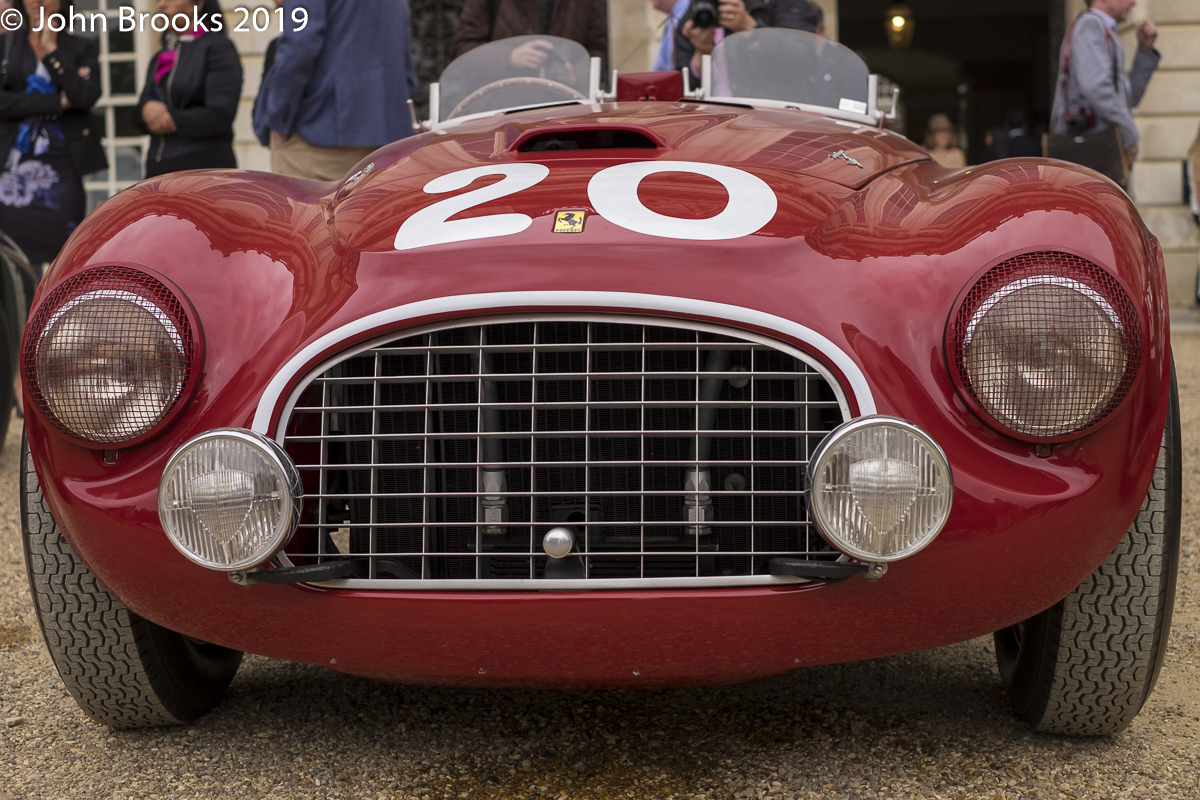
Chassis #0010M was entered in the 1949 Mille Miglia but there is some dispute as to whether it was the Felice Bonetto and Carpani car that finished second overall after leading to Rome. Some sources declare it was the Piero Taruffi and Sergio Nicolini car that retired with a broken transmission at Ravenna. It was then sold to Luigi Chinetti who entered it at Le Mans for Jean Lucas and ‘Ferret’ (Pierre Dreyfus). All went well for the pair till it got dark on the Saturday evening. Dreyfus overturned 166 MM, without injury, at White House Corner, their race was over.
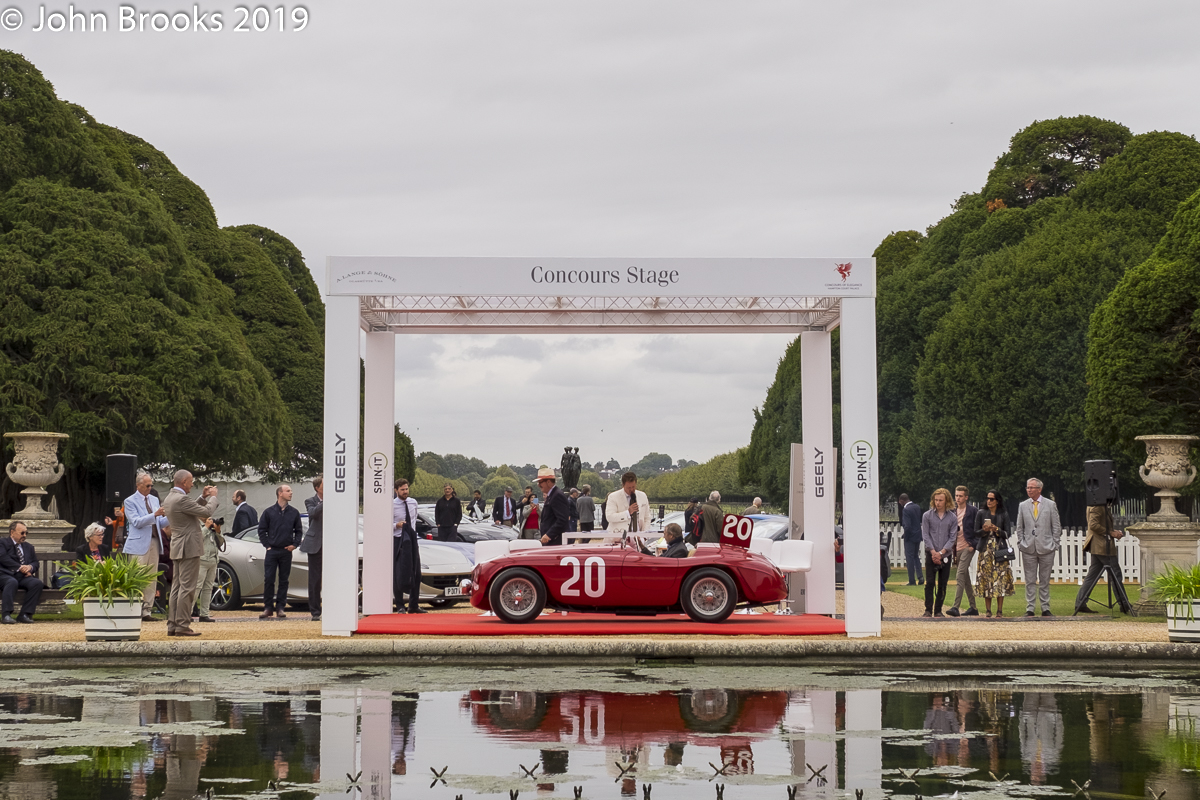
A few weeks later the Ferrari was entered in the Spa 24 Hours with Chinetti and Lucas on driving duties. At the halfway point they assumed the lead and were cruising towards an easy victory till drama hit in the very final stages of the race. Motor Sport described the scene. “Louveau’s Delage had motored faultlessly, so that it really looked as if the Le Mans maladies had been cured. Then, after some 23 1/2 hours, oil began to stream from the engine. Louveau went on gingerly to his pit, intending to wait and coast over the line after Chinetti had been flagged the winner. Reminded that this would disqualify him, he set off, almost at a walking pace, to complete his last lap in the stricken Delage. Meanwhile, Chinetti, doubtless a trifle weary, came on to the oil patch flung by Louveau’s sick car at Hallowell Corner. The Ferrari slid out of control, knocked down a woman spectator and hit a house. Shaken but still irrepressible, Chinetti leapt out, rendered the unfortunate woman first-aid, got in again and drove slowly to his pit. There the leading Ferrari was hastily examined and then sent out to limp round for the two more laps necessary to win the race.“
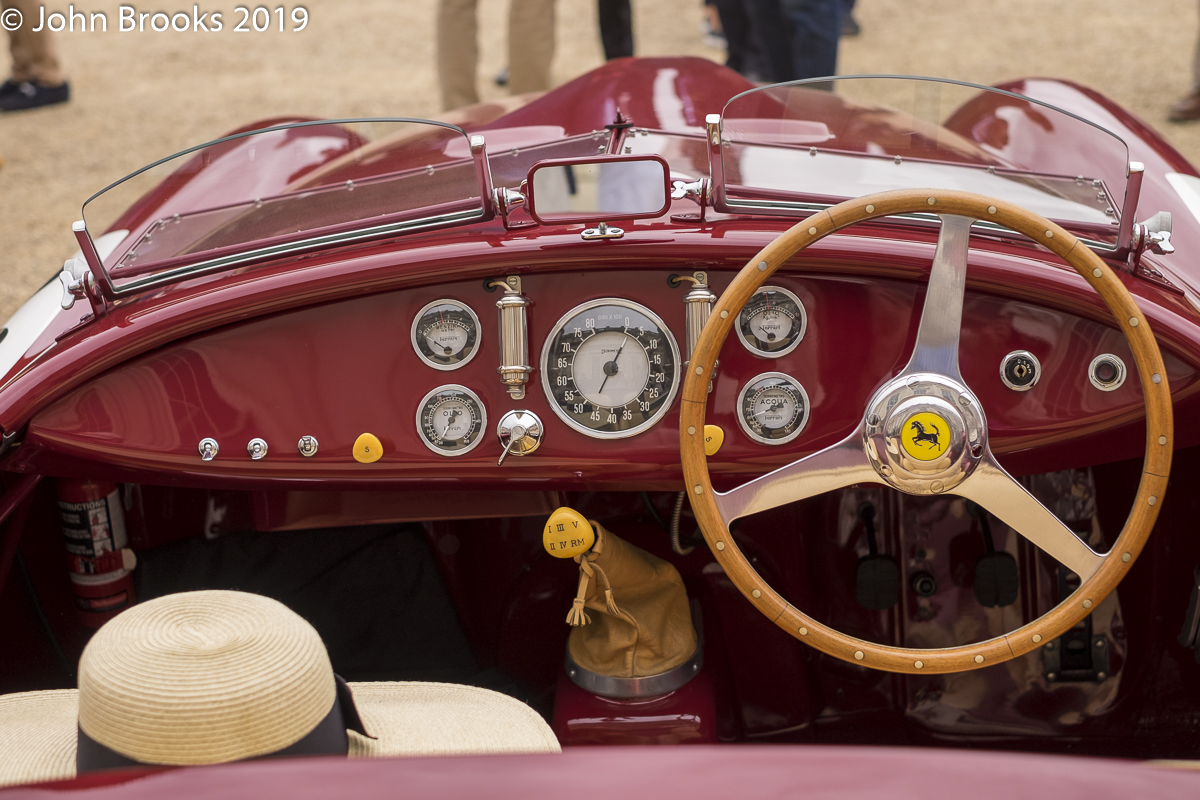
Only one car has won both the Mille Miglia and the Le Mans 24 Hours, a feat that can never be equalled. This Ferrari 166 MM is that car, chassis 0008M, and it was also at the Concours of Elegance. In April 1949 Clemente Biondetti and Ettore Salani gave Ferrari its second win on the Italian road racing classic, after Biondetti had won the previous year.
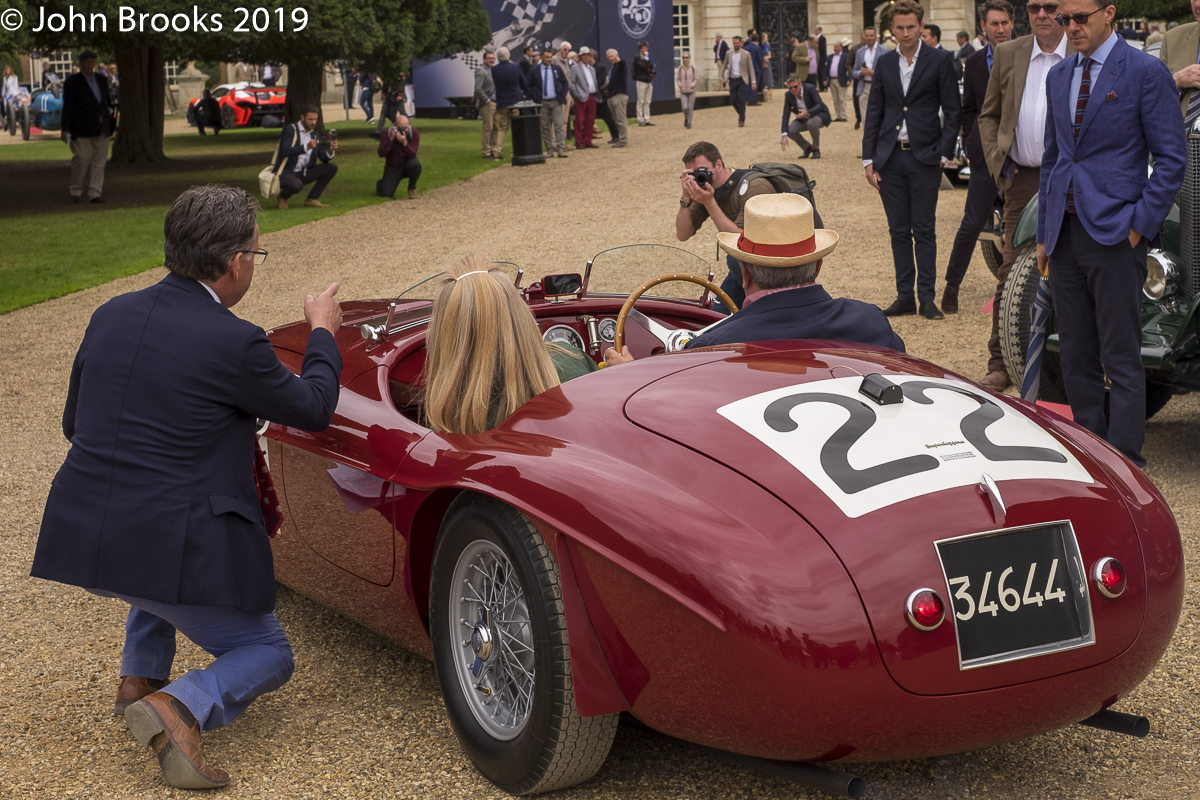
Lord Selsdon purchased the car and invited Luigi Chinetti, already a two-time winner, to drive with him the 1949 Le Mans 24 hours, the first post-war running of the event. Chinetti kept in touch with the faster Delahayes for the first quarter of the race. Then the Ferrari was delayed allowing the other 166 MM, featured above, to grab the lead. That car had an accident and one of the Delahayes struck problems, allowing the Ferrari to build a lead during the brief hours of darkness at La Sarthe.
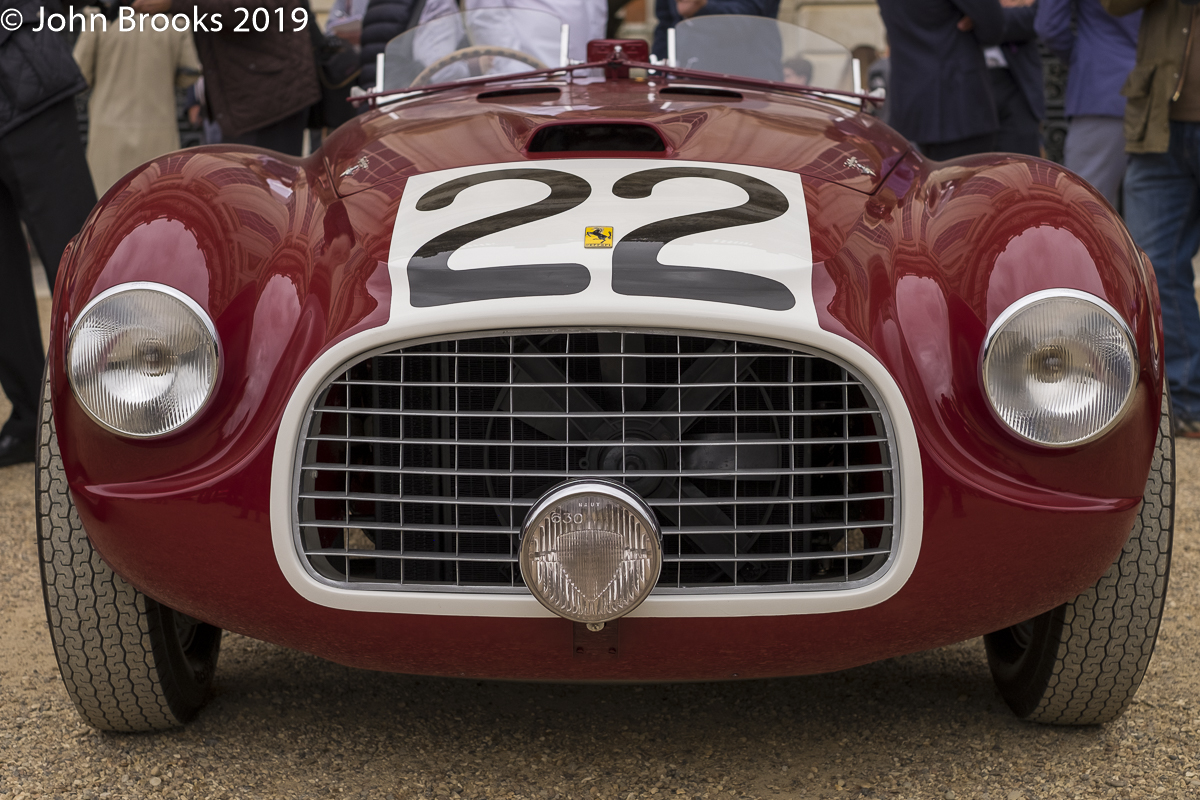
Motor Sport’s correspondent followed the race closely. “The crowd on the balcony clapped — at 4.26 a.m., mark you! — as Selsdon took over the leading Ferrari from Chinetti, who had driven the car continuously up , to this point.“
The Ferrari kept its lead over the faster Delahaye as it encountered fewer problems and spent less time in the pits. Then Delahaye retired and the Ferrari came under pressure from Louveau’s Delage. Then came the next twist in the race. “Came drama! Louveau brought the Delage in in dire trouble, but went on. Shortly afterwards Chinetti was stationary at his pit, with Louveau in again. On his first stop the plugs had been replaced, water added, and the rear wheels changed, so we knew, now, that something more serious was amiss. The work was good, calm, but half-an-hour was lost while extensive work was done on the engine, concluding with more new plugs — as with Gérard’s Delage, too much oil seemed to be getting “upstairs.” The Ferrari left first, but it, too, lost much time, work apparently being done on the front of the chassis, necessitating attempted removal of a headlamp.“
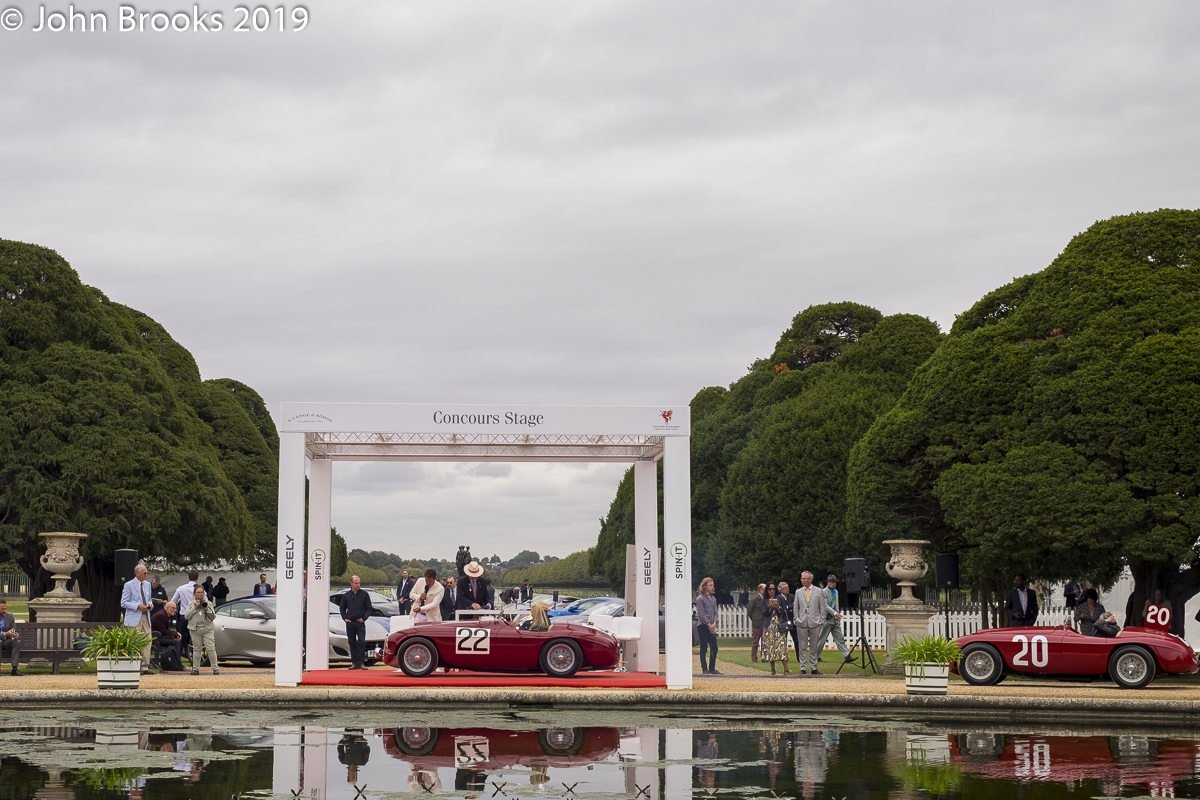
The race ground on to the finish as it usually does at Le Mans. Chinetti had to be helped from the Ferrari after spending more than 22 hours behind the wheel, a truly heroic performance. The Italian, who now lived in the United States, had scored his third victory in the great race. Selsdon and Chinetti received their trophies from Vincent Auriol, sixteenth President of the French Republic, the first time that the head of state had attended the race; it would be twenty-three years before a French President returned.
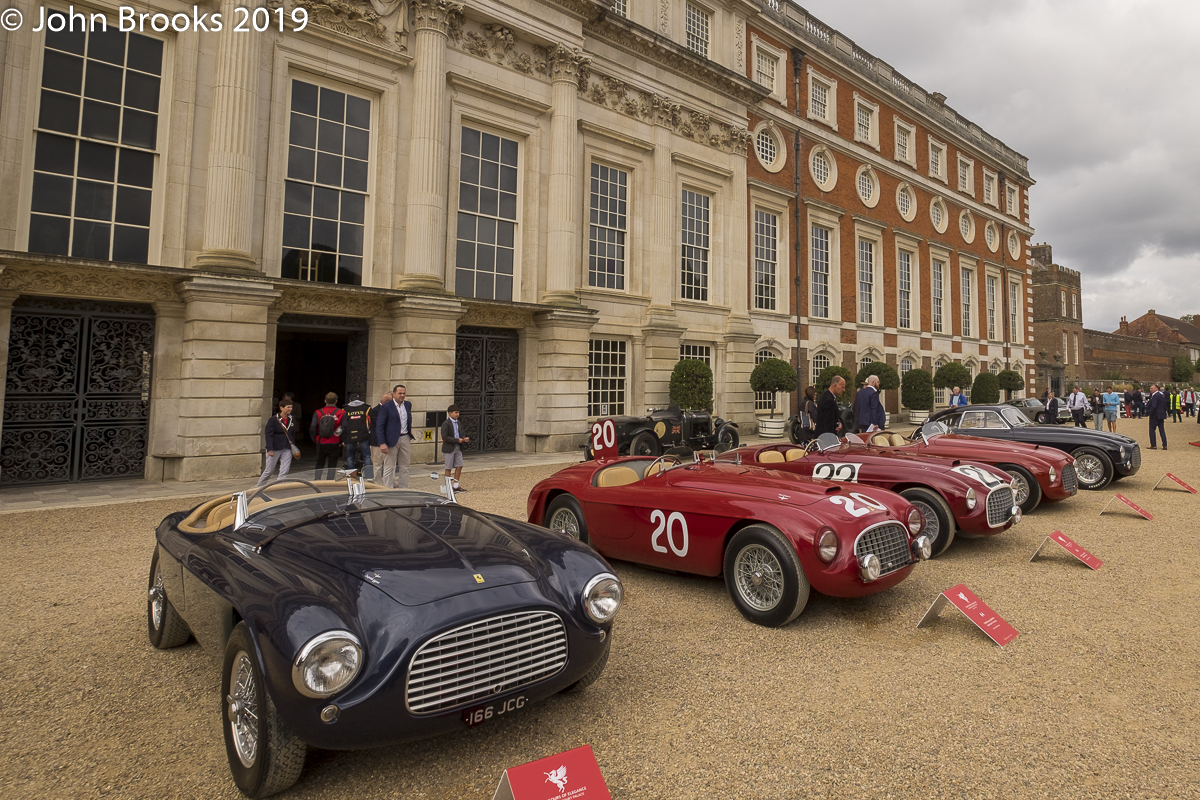
The Italians at the Concours of Elegance provided a rich and sumptuous confection for those lucky enough to attend, roll on 2020!
John Brooks, July 2020
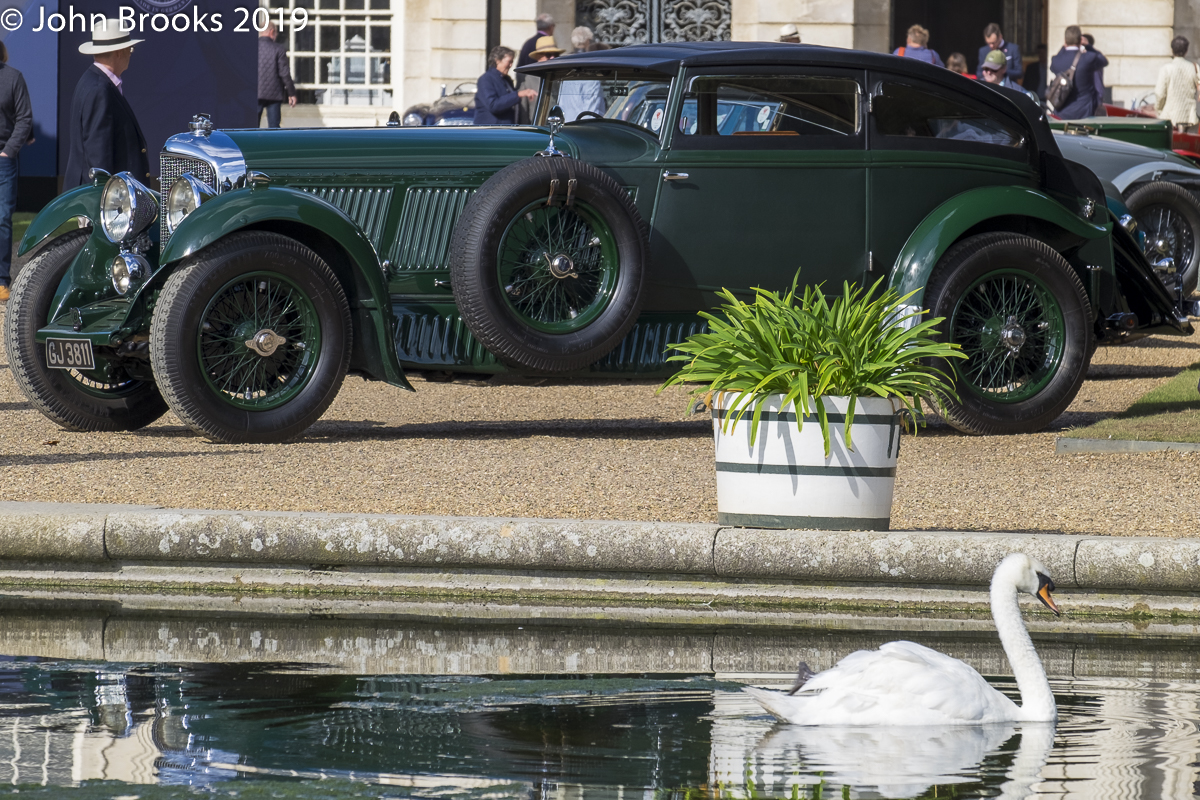
There are a few events in the course of a year that fall into the ‘must attend’ category, for example Rétromobile. The Concours of Elegance, now resident at Hampton Court Palace, is certainly also in that rarefied class, missing it would be a serious reverse.
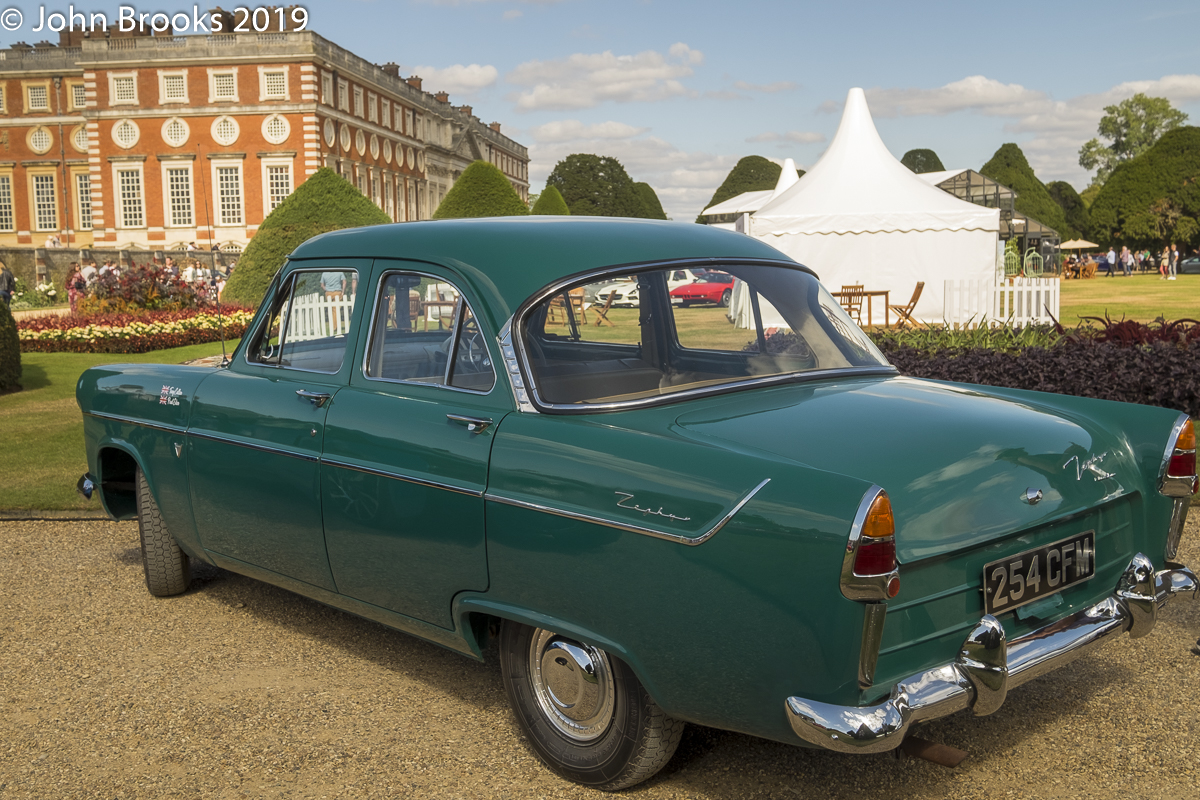
The setting is majestic and the atmosphere informal, a gentle gathering of motoring enthusiasts, lucky enough to have some great cars to consider and appreciate. A number of factors have meant that my look at the 2019 show was not completed at the time but better late than never.
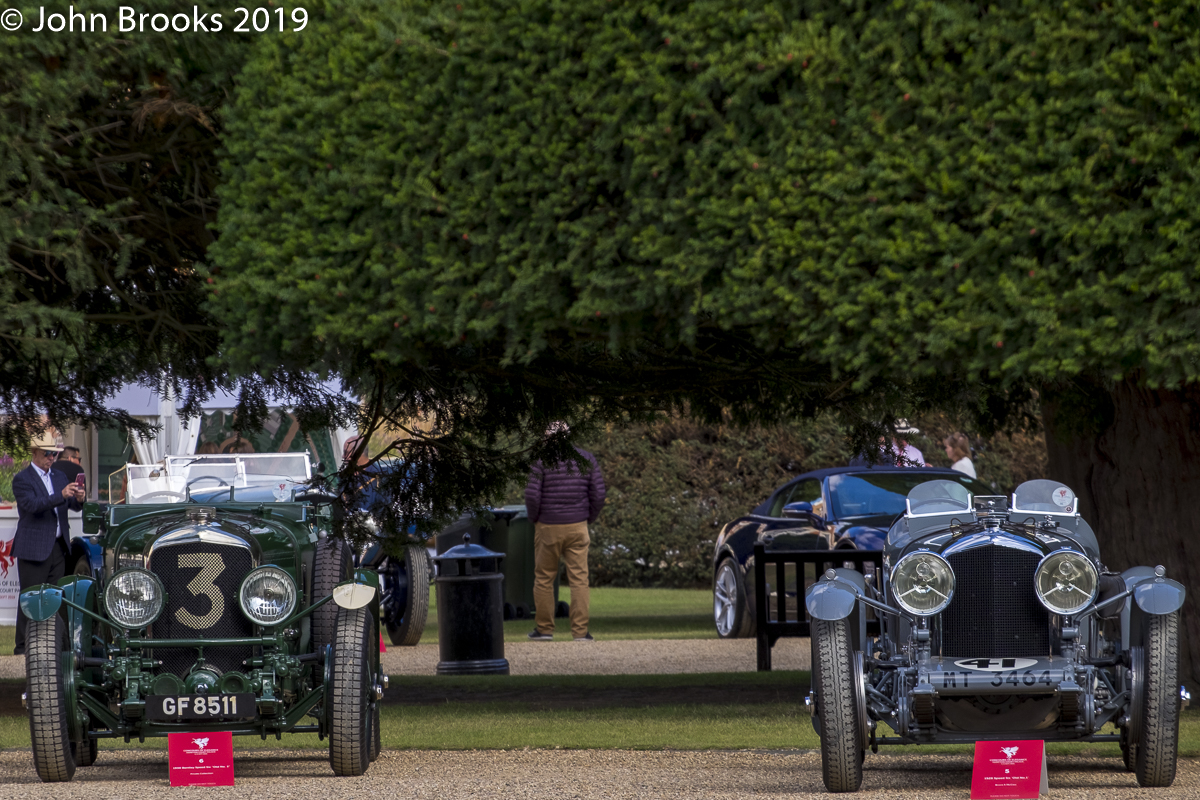
1919 saw the birth of a marque that was to become synonymous with the Le Mans 24 Hours in the race’s earliest days. Here are two legendary Bentleys; on the left, ‘Old Number Three’ and on the right ‘Old Number One’, both of these Speed Six model raced at Le Mans in 1930 with very different outcomes. ‘Old Number Three’ was disputing the lead in the early stages of the race in the hands of Sammy Davies. After twenty laps he handed over to co-driver, Clive Dunfee, who proceed to crash the car on his opening lap, forcing retirement.
‘Old Number One’ had triumphed at Le Mans in 1929 when driven by Woolf Barnato and Tim Birkin. Barnato was back in 1930, partnered this time by Glen Kidston, and he repeated his victory, his third in a row. ‘Old Number One’ had also made history being the first car to score a second win at La Sarthe, only three others have matched this feat in almost a century of competition.
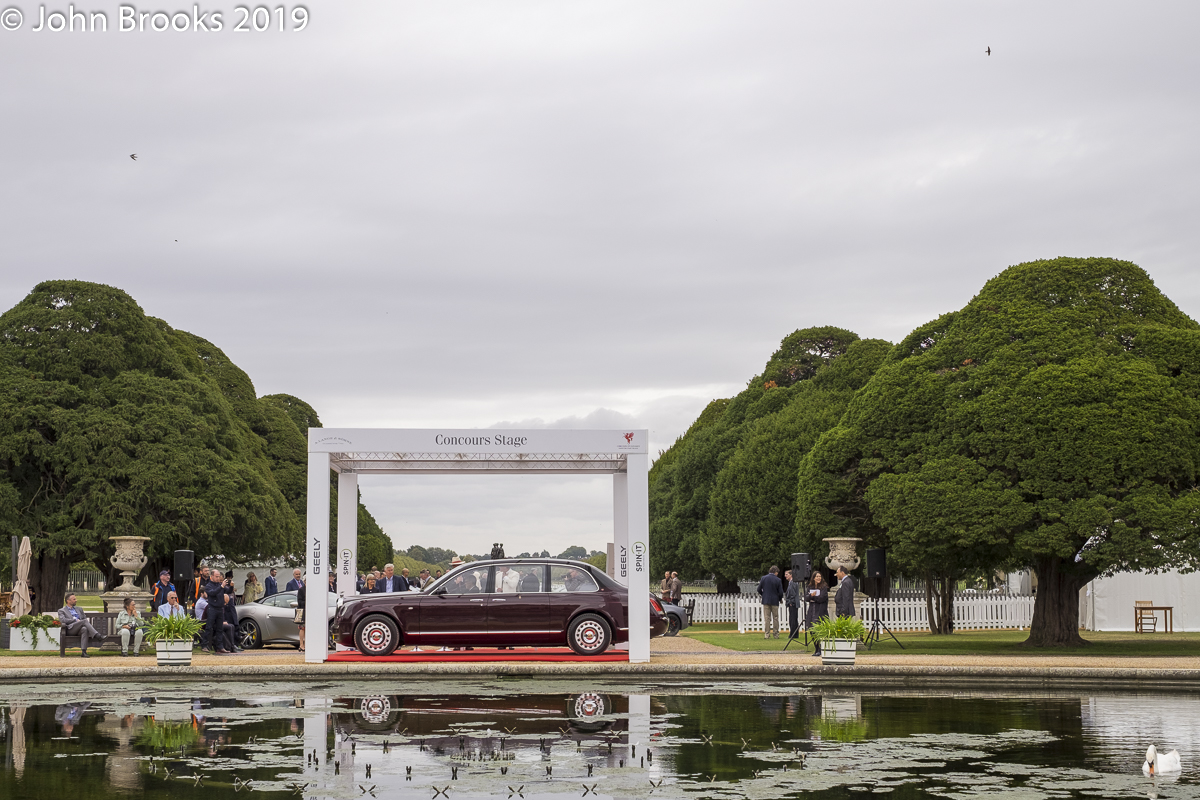
At the other end of the story is the Bentley State Limousine, first presented to Her Majesty Queen Elizabeth II on the occasion of her Golden Jubilee in 2002. Only two were built and both are in the Royal Mews.
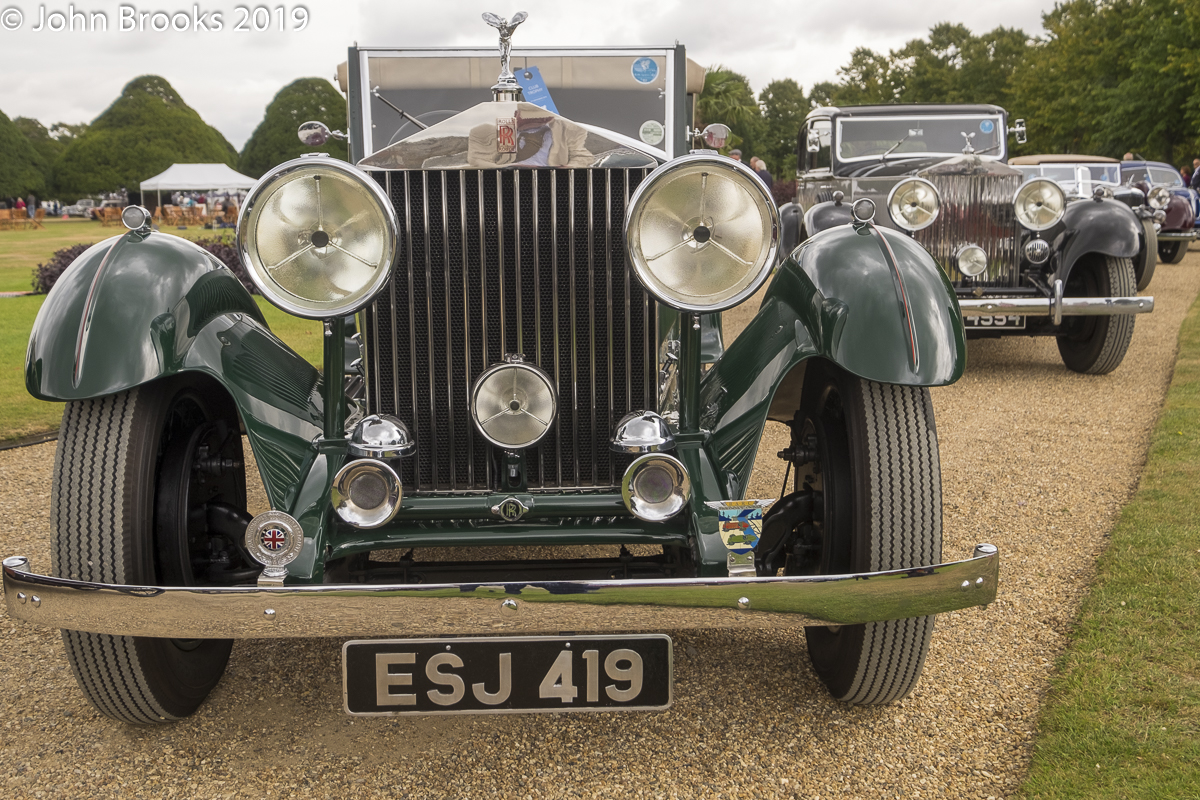
On each of the three days of the concours a different set of car clubs bring their amazing cars to add to the already rich mix. This 1931 Rolls-Royce Phantom II Continental is good example of the fine vehicles that grace the Great Fountain Garden during the show.
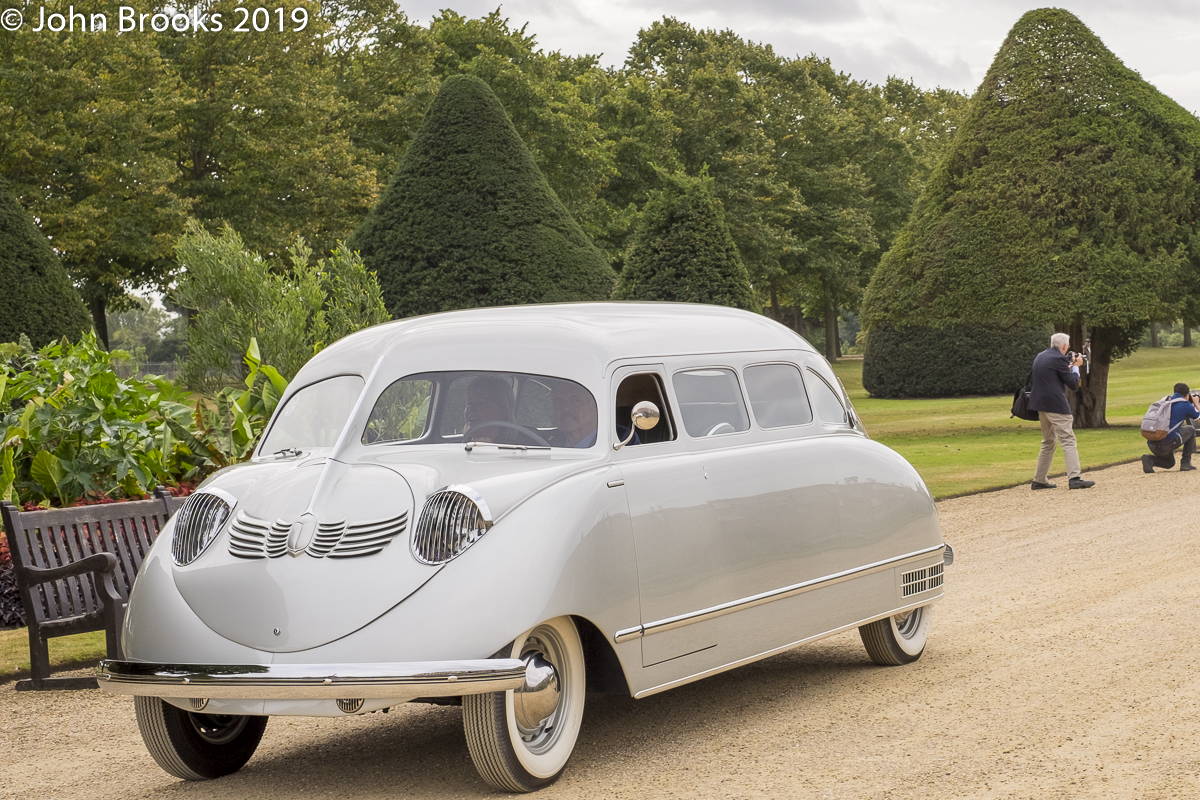
This 1936 Stout Scarab is pure Art Deco and is credited with being the world’s first production mini-van. As the Scarab carried a price tag of $5,000 only nine were constructed.
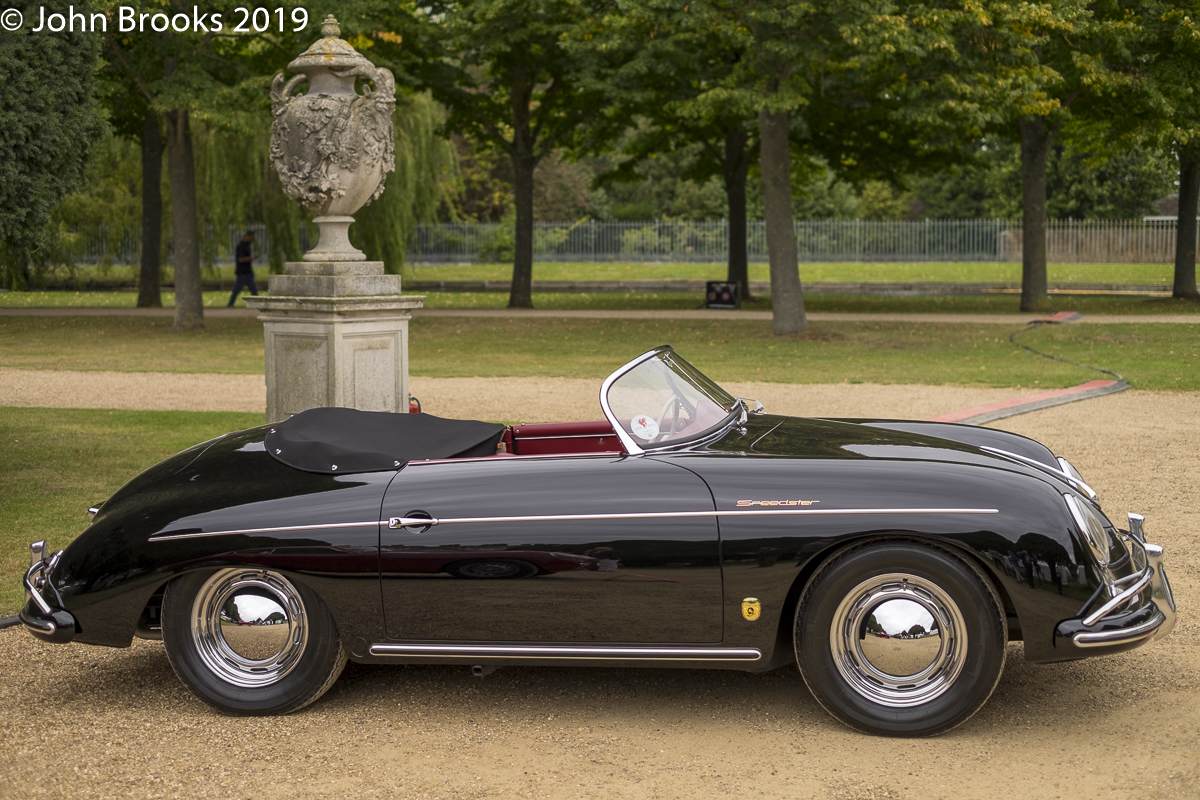
Stunning in its simplicity this 1957 Porsche 356A Speedster was a particular favourite of mine.
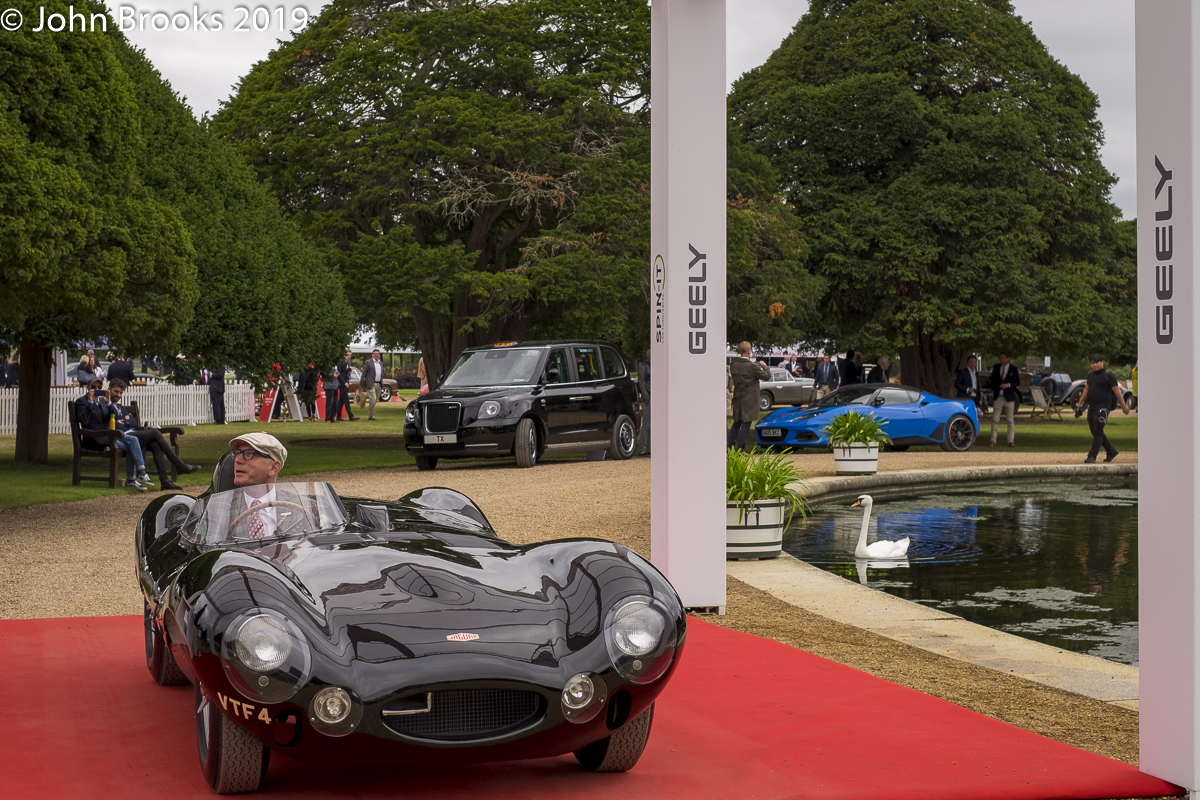
The concours is also a chance to catch up with old friends, such as Gregor Fisken, here at the wheel of a Jaguar D-Type.
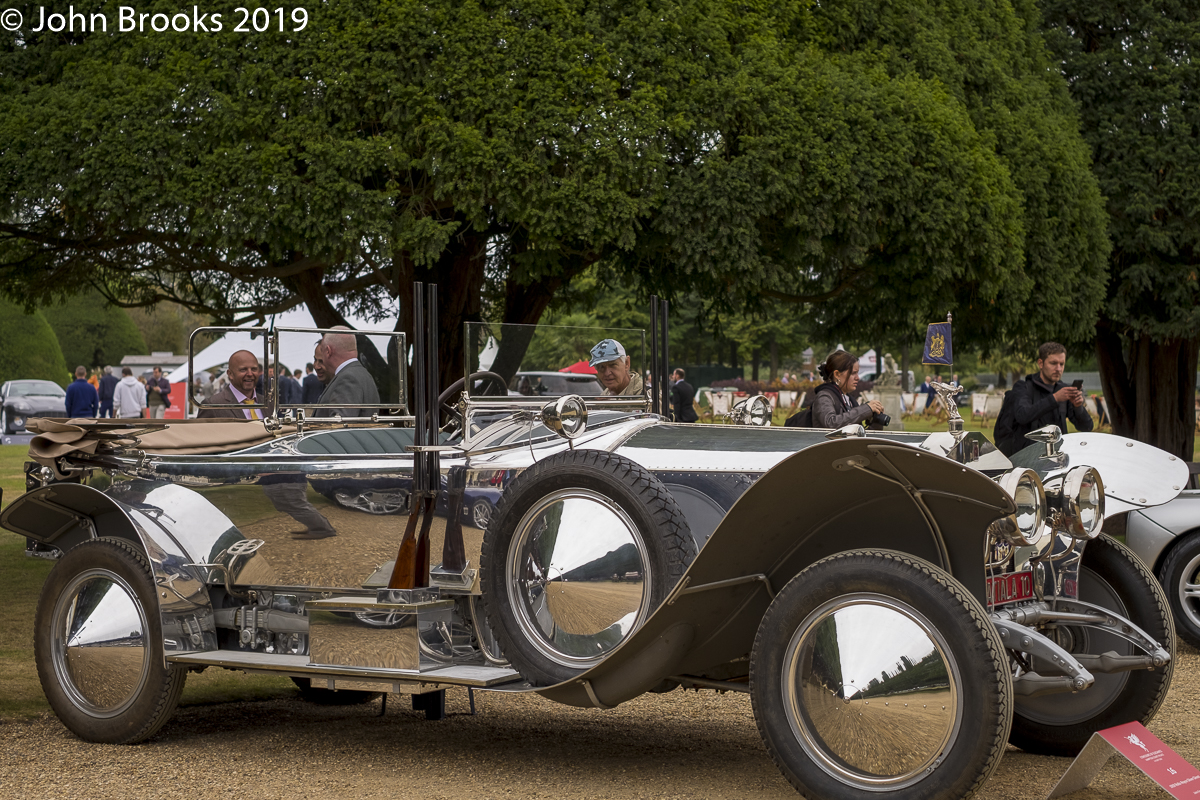
This Rolls-Royce Silver Ghost was also celebrating its centenary, being one of 25 Rolls-Royces owned by Lt.-General His Highness the Maharaja Sir Bhupindra Singh of Patiala. Complete with a rack for four shotguns it won the Best in Show award voted for by the owners of the participating cars.
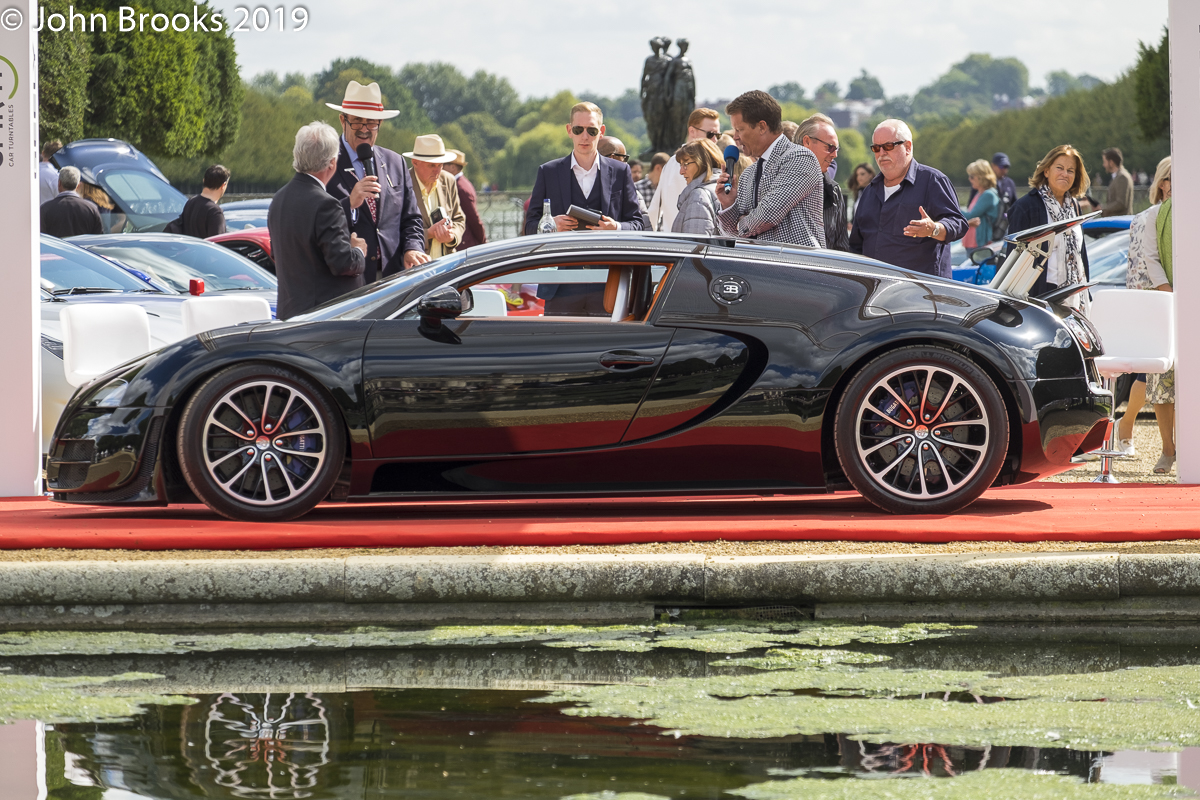
The Concours of Elegance is scheduled to happen 4-6 September, let’s hope that it does go ahead, we could all do with the lift. More from Hampton Court later.
John Brooks, July 2020
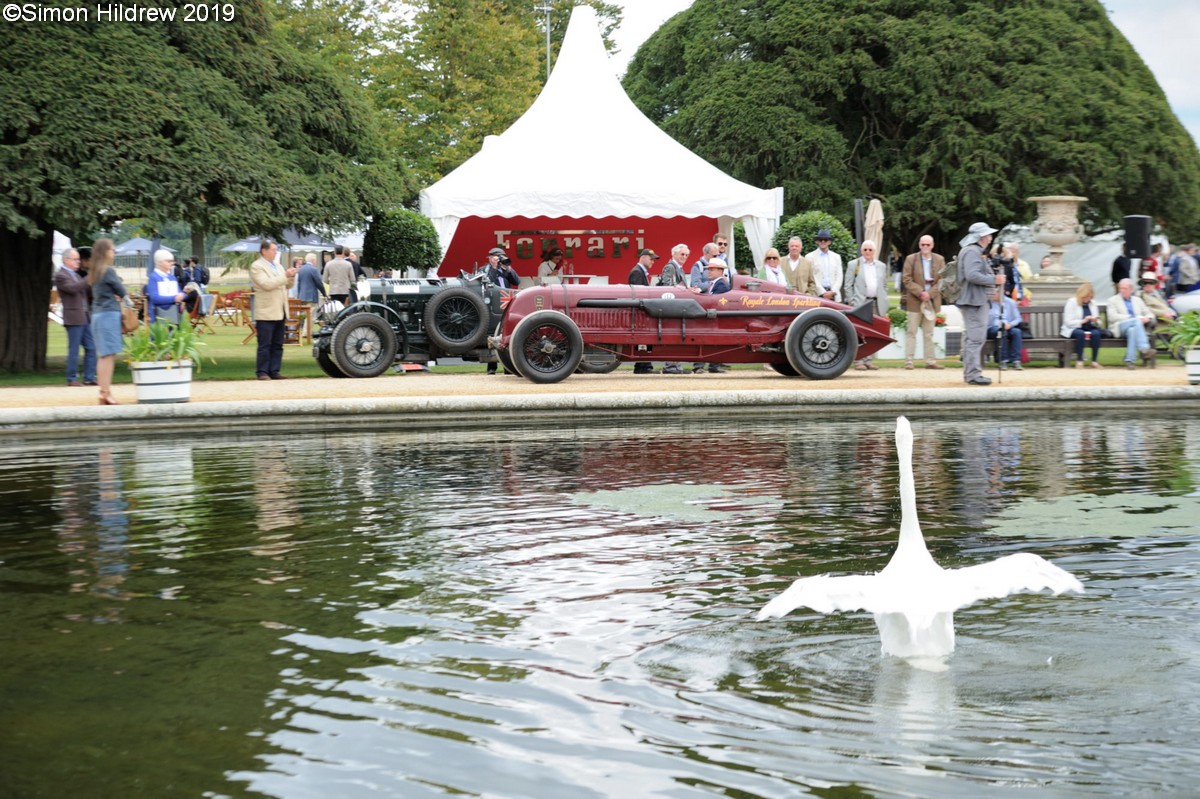
One of the highlights of my personal motoring year is the visit in early September to Hampton Court Palace for the Concours of Elegance. The setting and the cars are beyond magnificent, the event has yet to disappoint, since it started in 2012. Despite the pandemic, it is scheduled to take place this year on 4-6th September but who knows? In the first of a series of pieces looking back, here is Simon Hildrew’s personal view from 2019.
John Brooks, June 2020
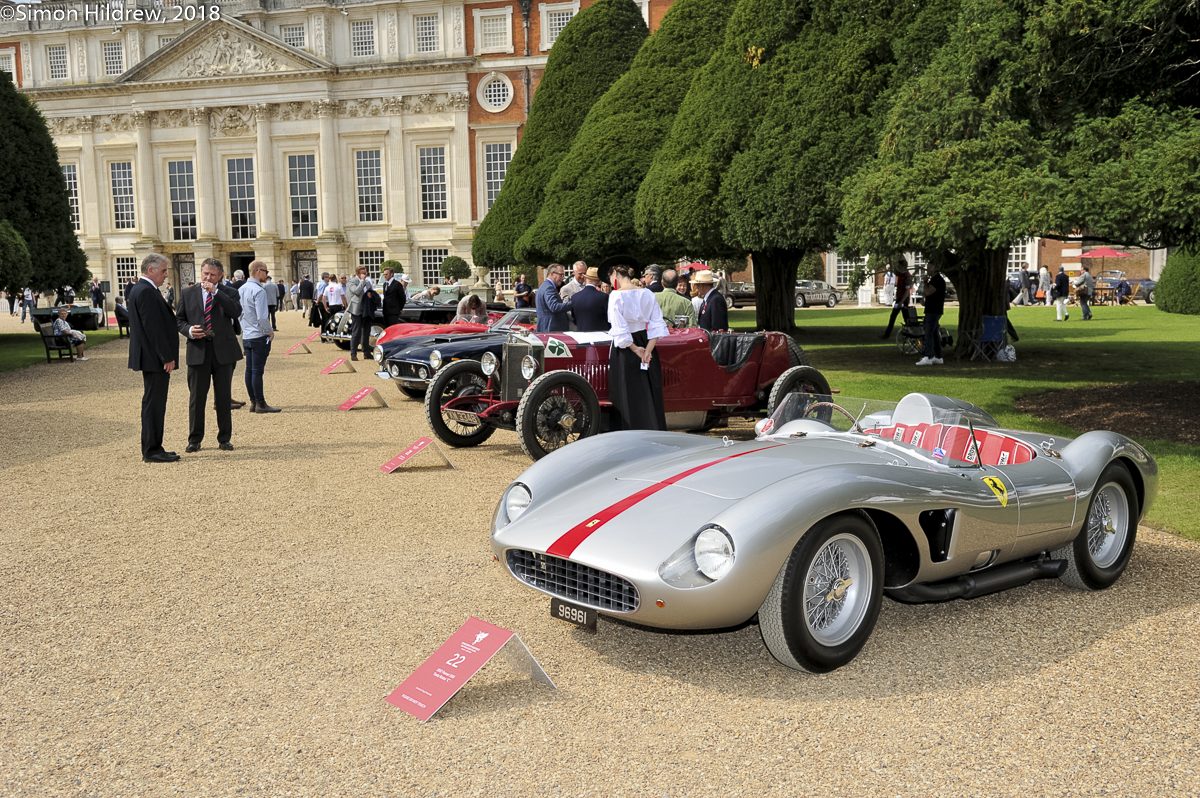
Simon Hildrew’s photography has graced these pages for a little over six years. He attended the Concours of Elegance last weekend at Hampton Court Palace. As usual he has produced the real deal, another top class selection to illustrate a fantastic event. Goodwood Revival is up next for him, can’t wait.
John Brooks, September 2018
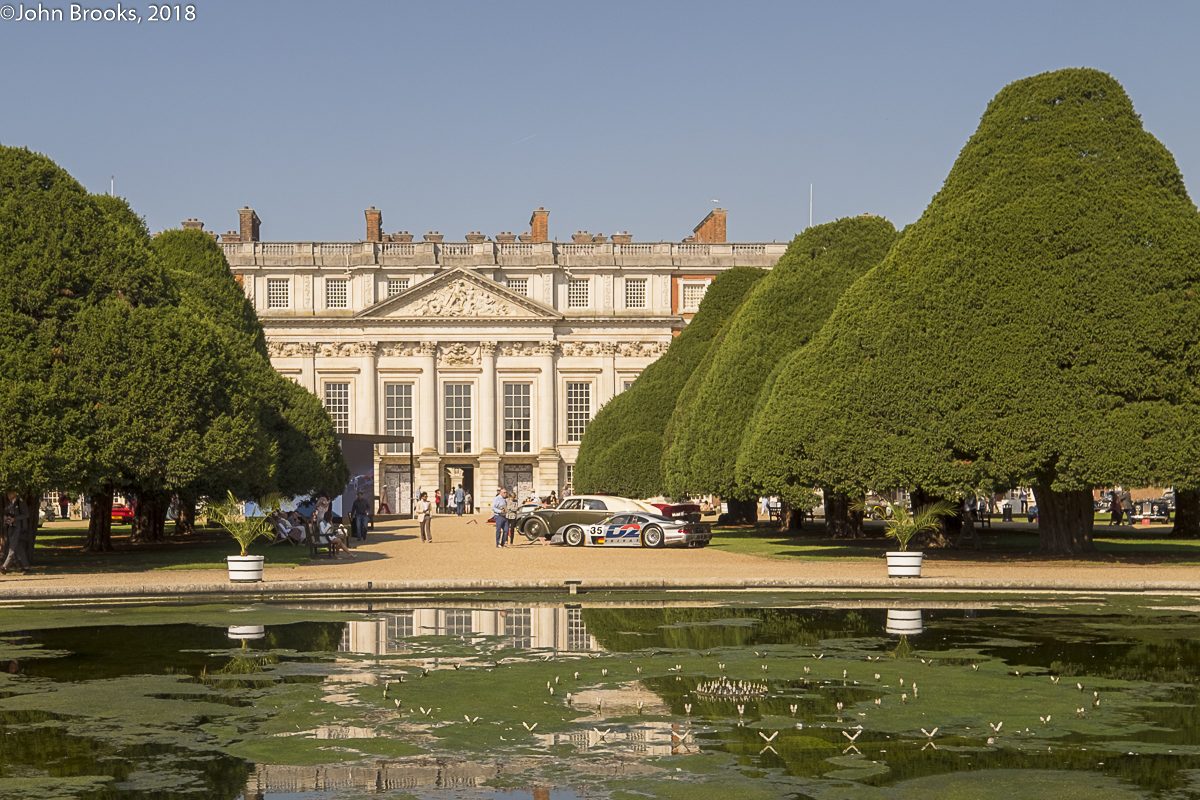
Here in England it is the ‘Season of Mists and Mellow Fruitfulness’ as Keats put it so eloquently. It is also the time of the final car events of the year before the weather turns dodgy and we stop impersonating the Iberian Peninsula.
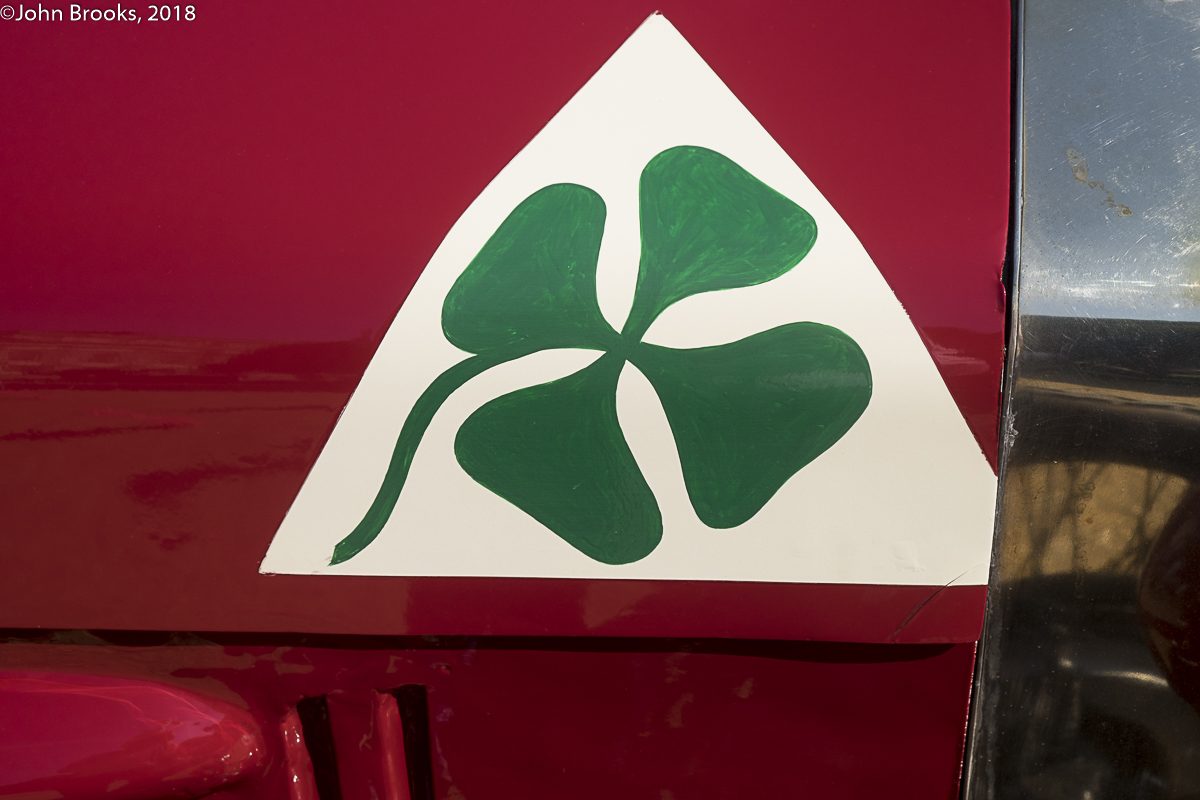
It is a case of saving the best till last with the staging of the Concours of Elegance at the regal Hampton Court Palace, a hop, skip and a jump from DDC Towers, saving the travel sick (or should that be sick of travel?) editor from too much exertion. It is one of the highlights of my motoring year.
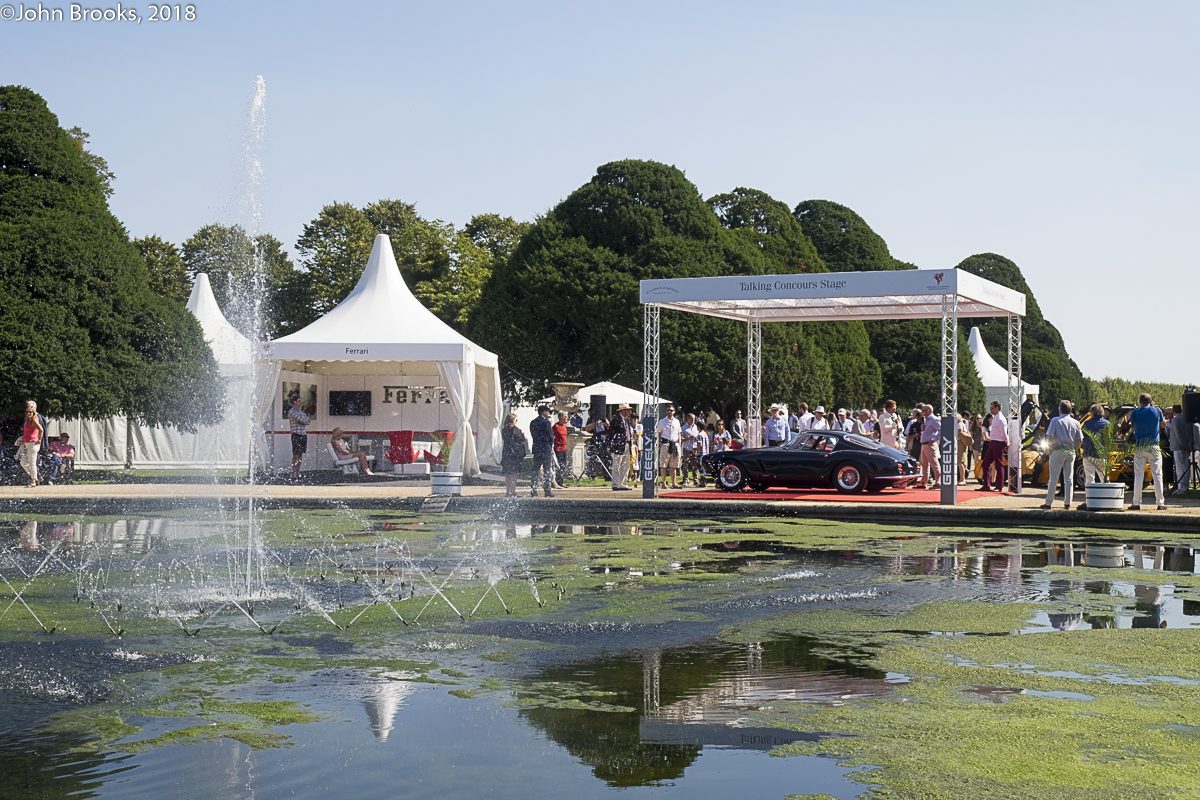
The Concours of Elegance has something for everyone whatever your automotive peccadillo happens to be this week. The Le Mans 24 Hours has taken a fair bit of my time and energy over the past 40 years, since rocking up at La Sarthe for the first time back in 1978. There were a number of familiar faces in the crowd, perhaps a closer look at them is warranted.
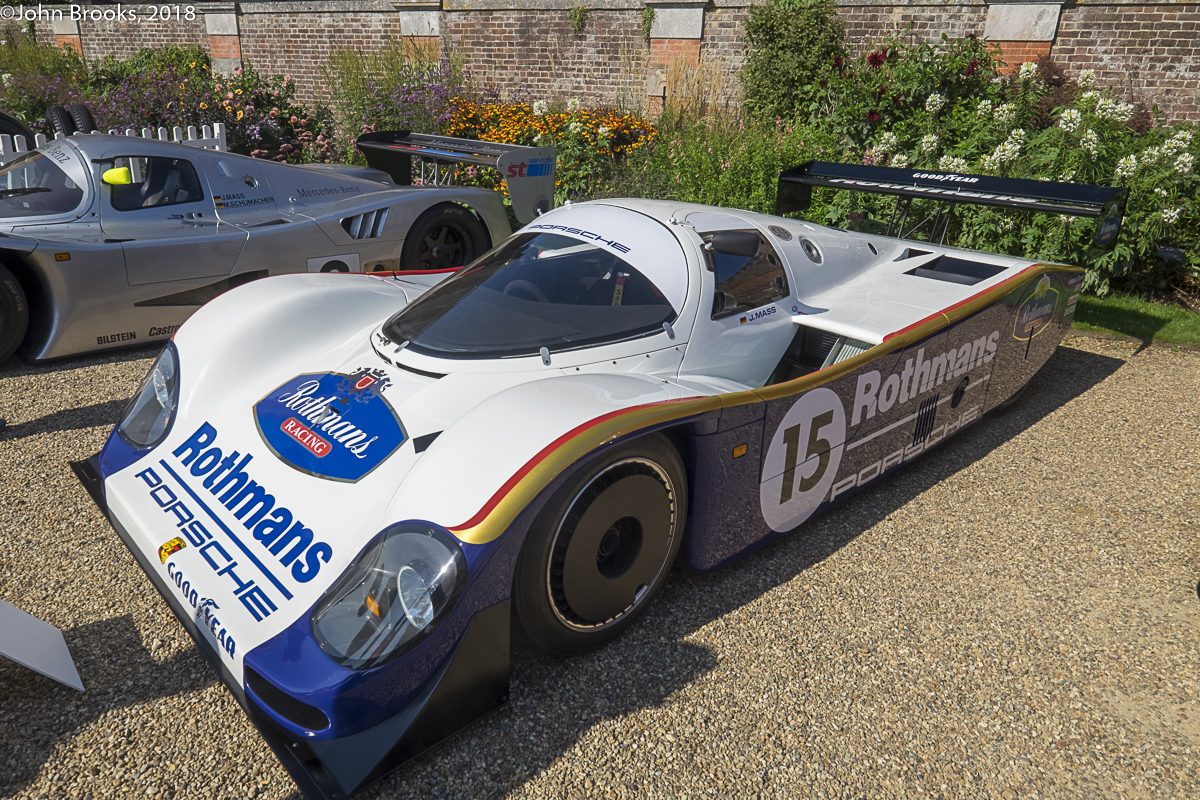
Entering in to the formal garden at the rear of the Palace (and what a venue that is) I encountered a Porsche 962 that looked, well frankly, wrong. The outline was that of the distinctive Richard Lloyd Racing 962C but with the famous factory colour scheme promoting Rothmans. Well I figured that Duncan Hamilton/ROFGO would know their onions better than yours truly and so it proved. This car was indeed a RLR machine, and yes the Rothmans livery was authentic, having run in this combination in late November 1987 at the Kyalami 500km. Jochen Mass, on loan from Weissach, grabbed a last lap victory when Bob Wollek ran out of petrol following an epic drive. This car was the rebuilt #106B car that had been incinerated at Le Mans that year. The improvements incorporated into the car clearly worked as in addition to the win in South Africa there were podiums at Brands Hatch and Fuji topped off by victory at Norisring.
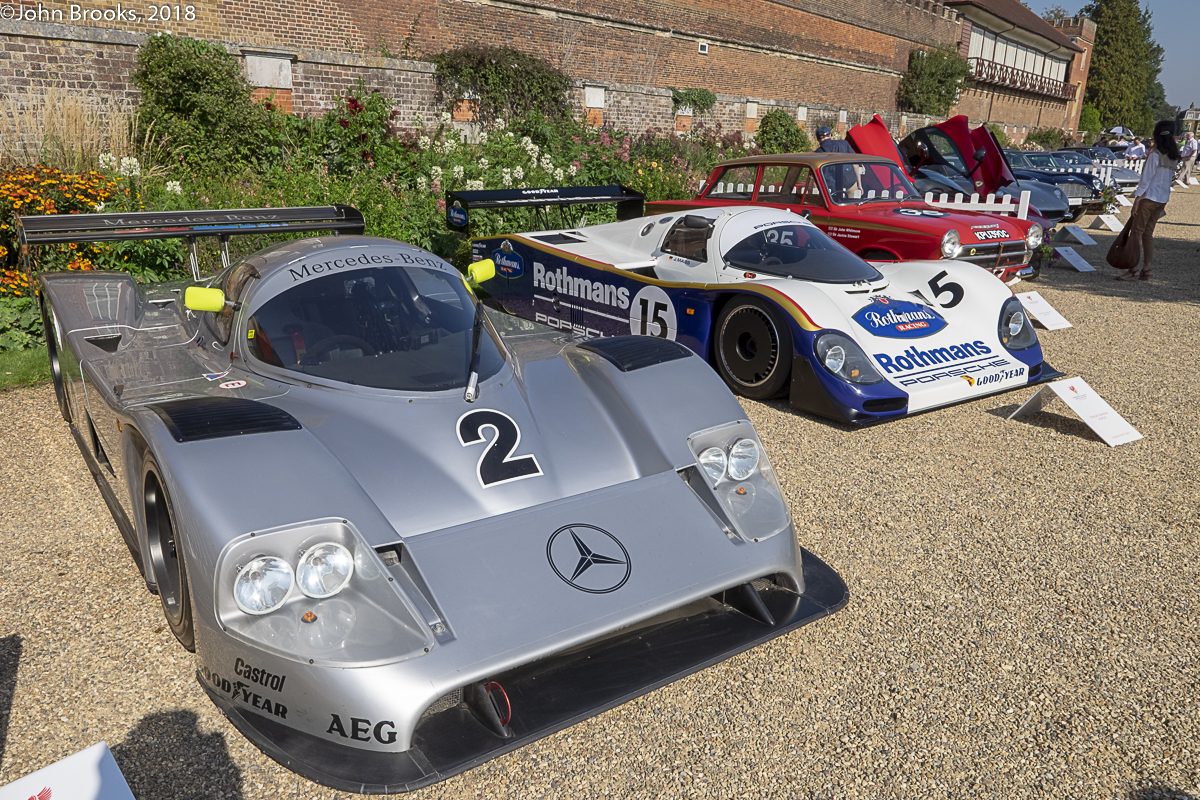
Next to the Porsche was another star performer from the Group C era, a Sauber C11, probably the ultimate Group C racer before Bernie and Max hijacked proceedings and sent the endurance side of the sport to its destruction along the V10 3.5-litre highway. I understand the C11 to be #02 that took Jochen Mass and Michael Schumacher to victory in Mexico after their team-mates had been disqualified for a minor violation of the fuel regulations. If this is the case then the car sat out Le Mans in 1991 and was kept on hand as a spare. Too precious to leave out of this ramble though.
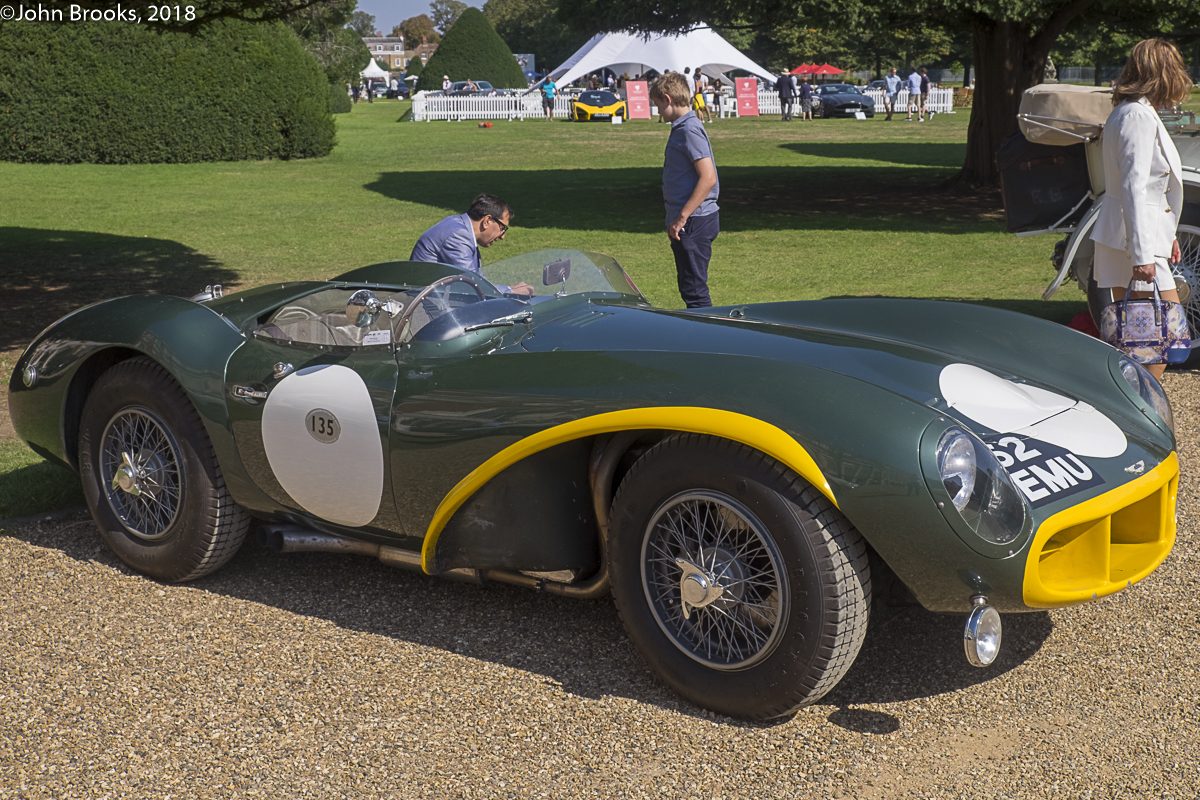
This Aston Martin DB3S definitely has Le Mans’ pedigree, bags of it. Based on a coupé that ran in the 1954 event suffering a huge accident at Maison Blanche that totalled the car. DB3S/6 was rebuilt and the following year went on to finish second at Le Mans with Peter Collins and Paul Frère behind the wheel.
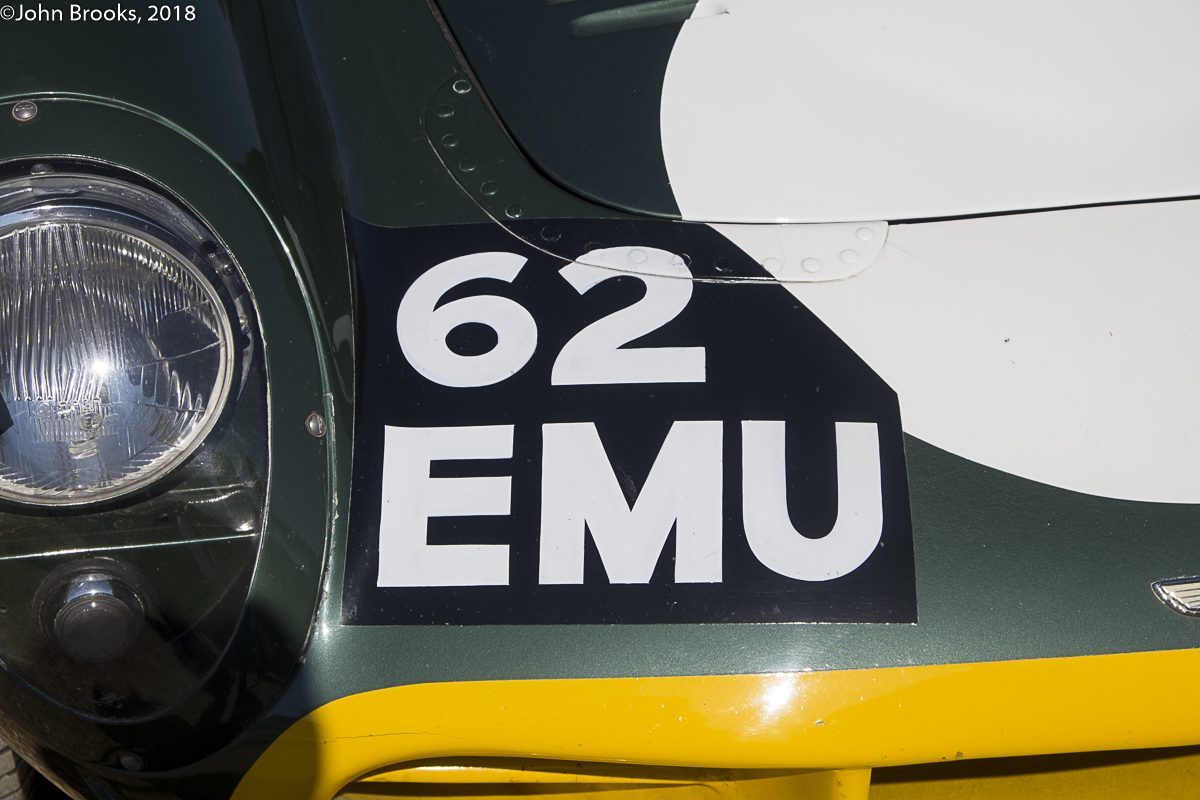
Retired from factory duties DB3S/6 enjoyed further success at La Sarthe with the new owners, Peter and Graham Whitehead, grabbing a fantastic second place overall in 1958, the stuff that dreams are made of for privateers.
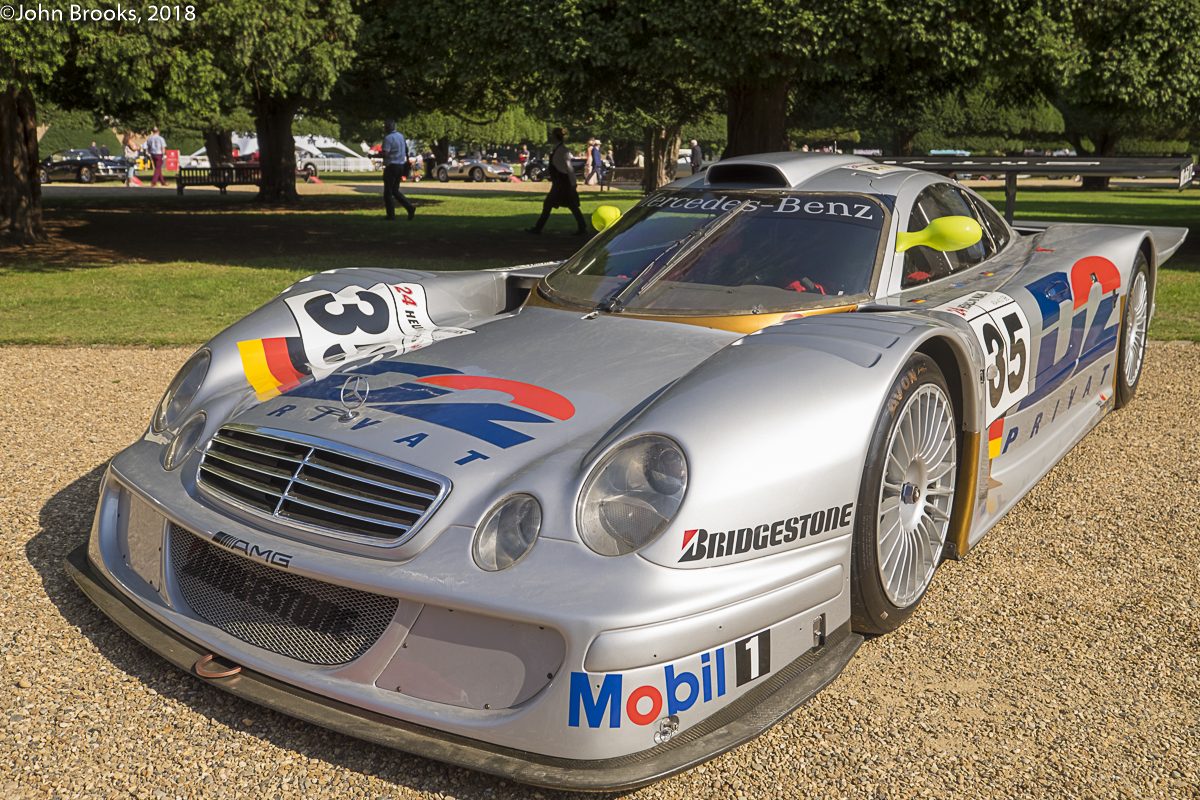
Nightmares might be closer to the fate at the great race of this still stunning AMG Mercedes CLK-LM. Introduced to the world at the 1998 Le Mans Pre-Qualifying weekend in May it was a development of the 1997 FIA GT Championship winning CLK-GTR. A V8 engine based on the M119 unit that powered the Sauber to victory in 1989 replaced the older V12. The loss of 80 kilos was the immediate benefit plus the repackaging allowed pushrod suspension at the front with inboard spring/damper units. The lower centre of gravity of the V8 also led to a general improvement of the aerodynamics and overall performance.
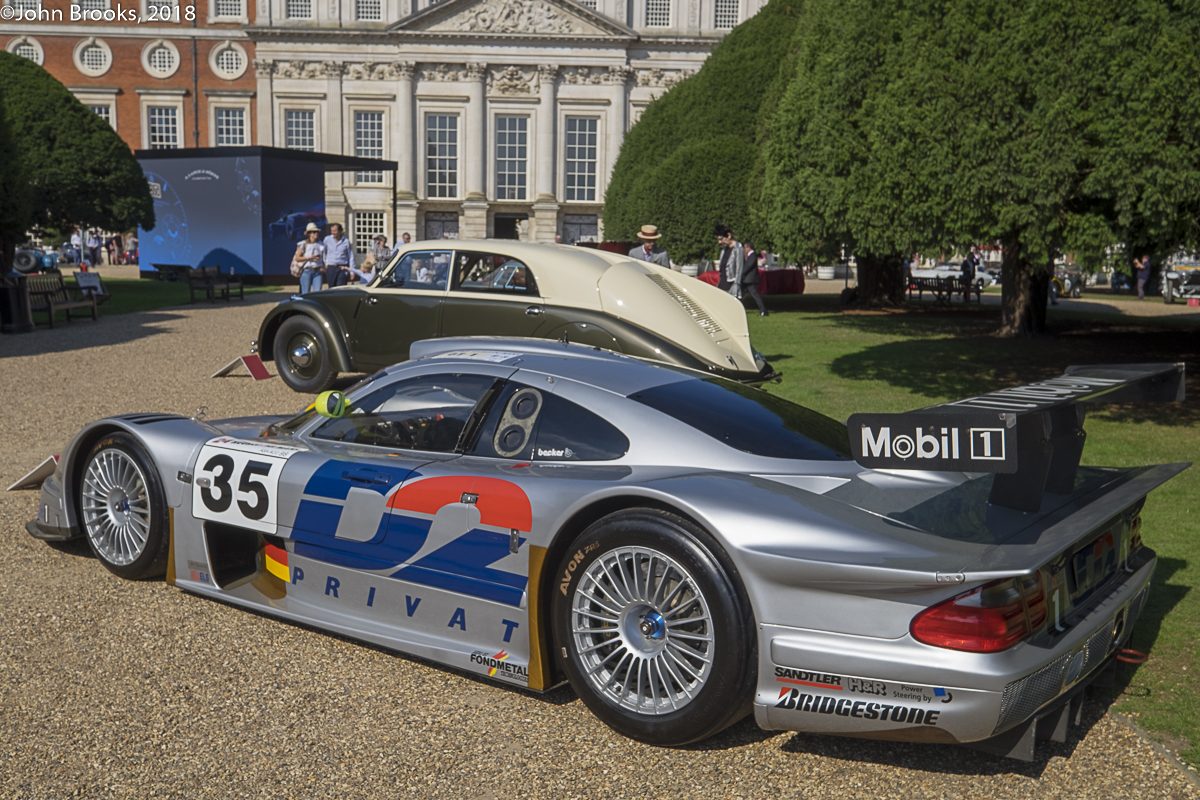 The car was quick, taking Bernd Schneider to pole position, even outpacing the Toyota GT-One, plus Christophe Bouchut’s sister car slotting into third place on the grid. For the first hour there was a fierce battle for the lead with Toyota, BMW and Porsche taking on the Mercedes. However with just 70 minutes on the clock Schneider’s CLK LM came to a halt at the Pit Lane Exit. 50 minutes later and Bouchut’s car also stopped. Both engines had gone bang and the favoured CLK-LMs were out before sunset. However, the true cause of this un-Mercedes-like failure was a little more complicated. A pin in the power-steering pump failed and dumped hydraulic fluid into the engine and that was that. It would be the only time that a CLK-LM raced and did not win.
The car was quick, taking Bernd Schneider to pole position, even outpacing the Toyota GT-One, plus Christophe Bouchut’s sister car slotting into third place on the grid. For the first hour there was a fierce battle for the lead with Toyota, BMW and Porsche taking on the Mercedes. However with just 70 minutes on the clock Schneider’s CLK LM came to a halt at the Pit Lane Exit. 50 minutes later and Bouchut’s car also stopped. Both engines had gone bang and the favoured CLK-LMs were out before sunset. However, the true cause of this un-Mercedes-like failure was a little more complicated. A pin in the power-steering pump failed and dumped hydraulic fluid into the engine and that was that. It would be the only time that a CLK-LM raced and did not win.
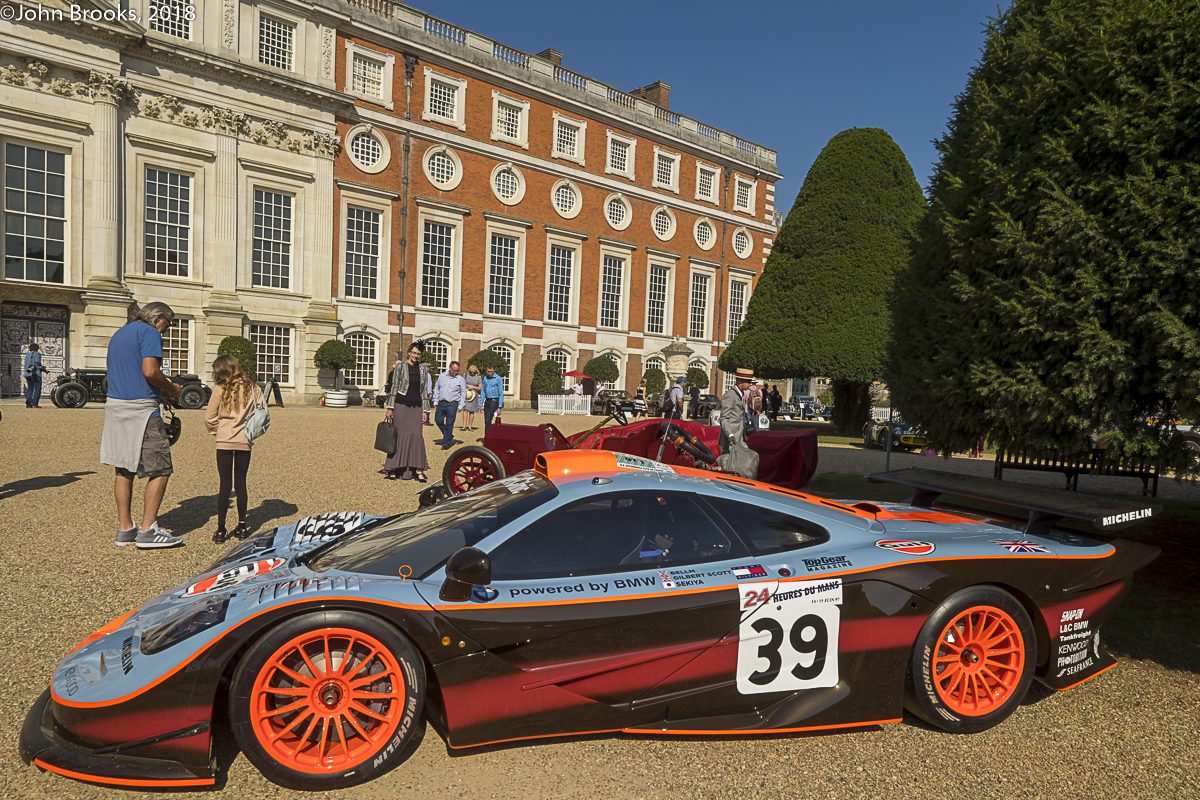
Another car that suffered at the French classic was #25R, a long tailed McLaren F1 GTR. Ray Bellm and Thomas Bscher joined forces in 1997 to establish a three car challenge, Gulf Team Davidoff, in the first season of the FIA GT Championship. At Le Mans, Thomas saw his hopes of racing go up in smoke on the Thursday evening when his F1 GTR caught fire and was considered too badly damaged to continue.
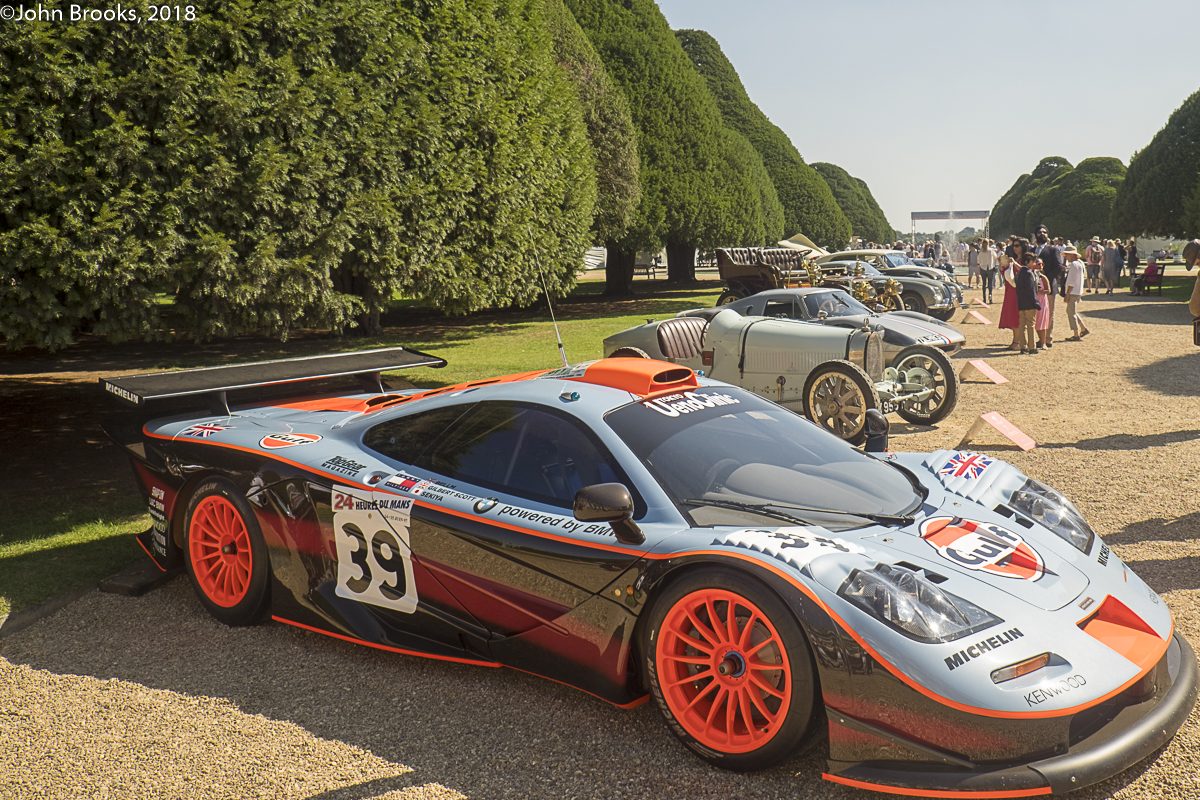 Three days later saw a repeat of this unfortunate incident when, with about an hour to go in the race and running in the top five, Andrew Gilbert-Scott had to hastily bail out of this McLaren as it went up in flames. To get so far and then fail at the final hurdle is a perfect demonstration of the fundamental cruelty of Les Vingt-Quatre Heures du Mans. #25R then went to Japan, racing right up to 2005. It has now come home and has been restored by McLaren Special Operations.
Three days later saw a repeat of this unfortunate incident when, with about an hour to go in the race and running in the top five, Andrew Gilbert-Scott had to hastily bail out of this McLaren as it went up in flames. To get so far and then fail at the final hurdle is a perfect demonstration of the fundamental cruelty of Les Vingt-Quatre Heures du Mans. #25R then went to Japan, racing right up to 2005. It has now come home and has been restored by McLaren Special Operations.
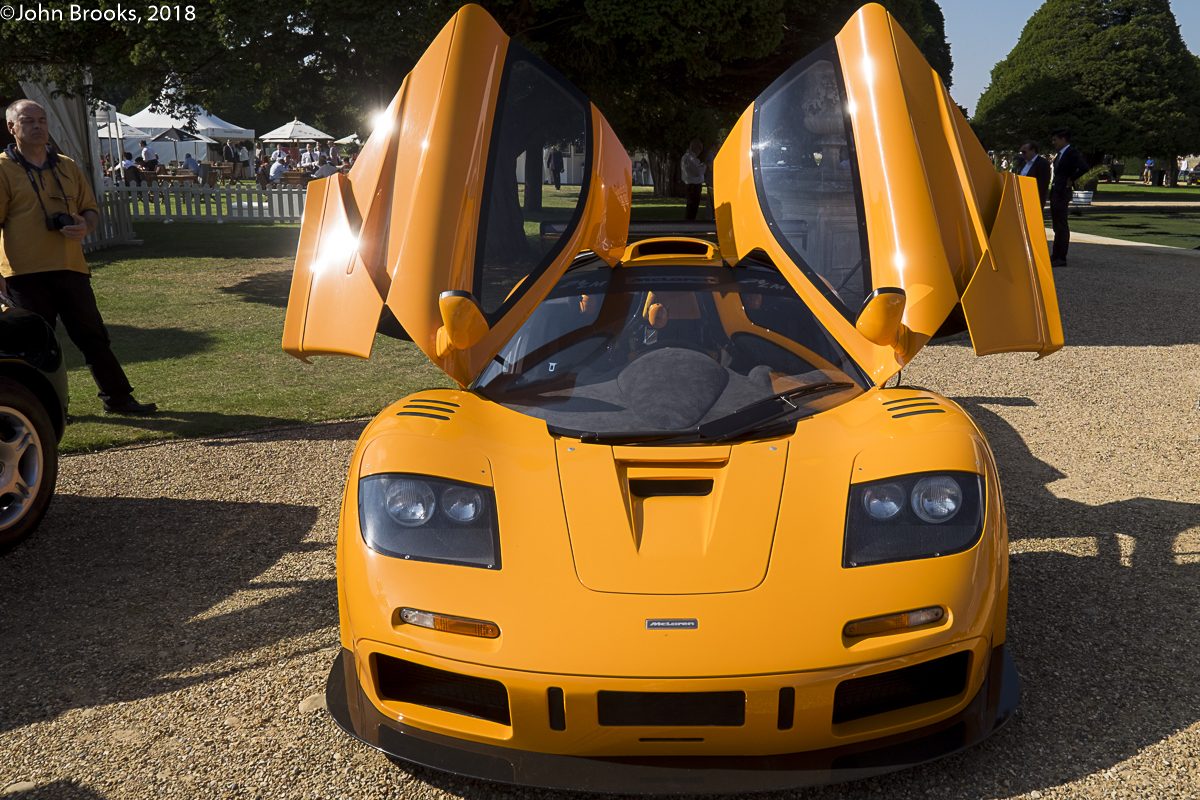
McLaren is one of only three manufacturers to win at Le Mans on their début, the others being Chenard & Walker and Ferrari. To celebrate this famous victory in 1995 a special edition was produced from Woking, the McLaren F1 LM.
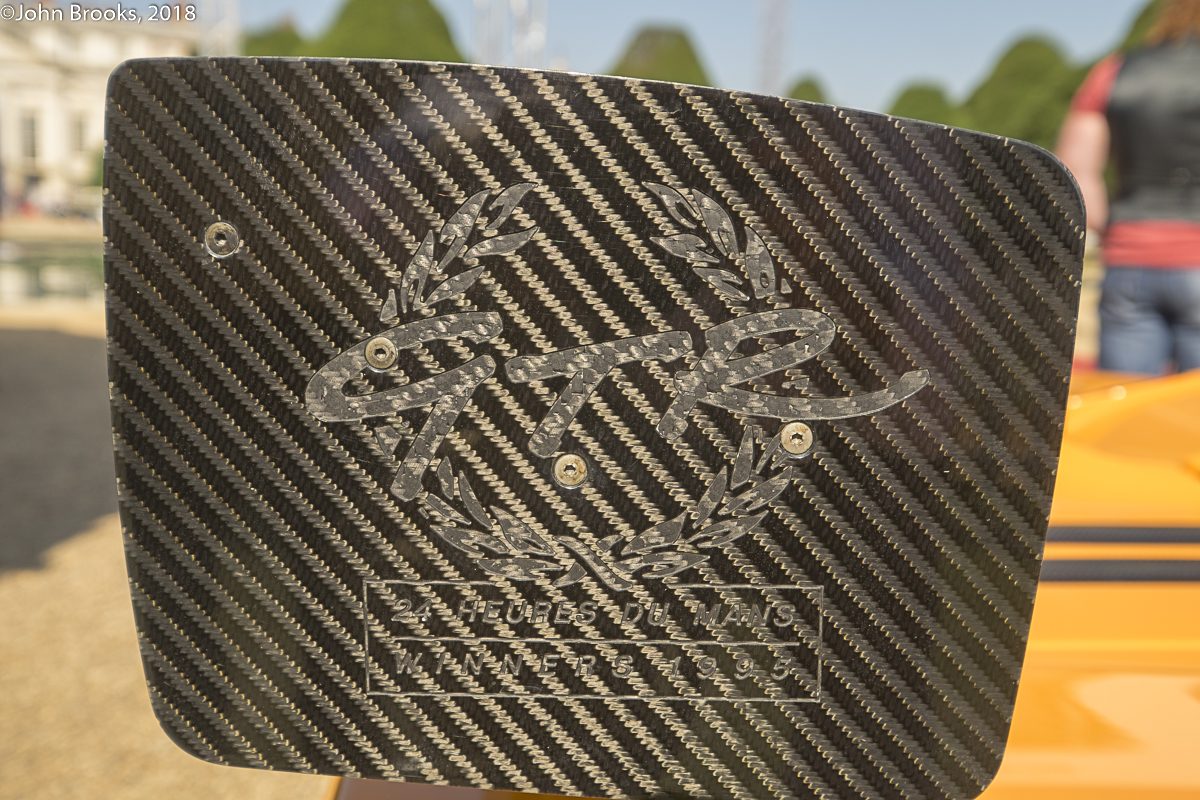
The prototype was on hand at the Concours. It had a number of subtle changes from the road car. It was not a replica of the race car but “follows the specification of the Le Mans winning F1 GTR.” Only five of these amazing creations were built so seeing this car was very special.
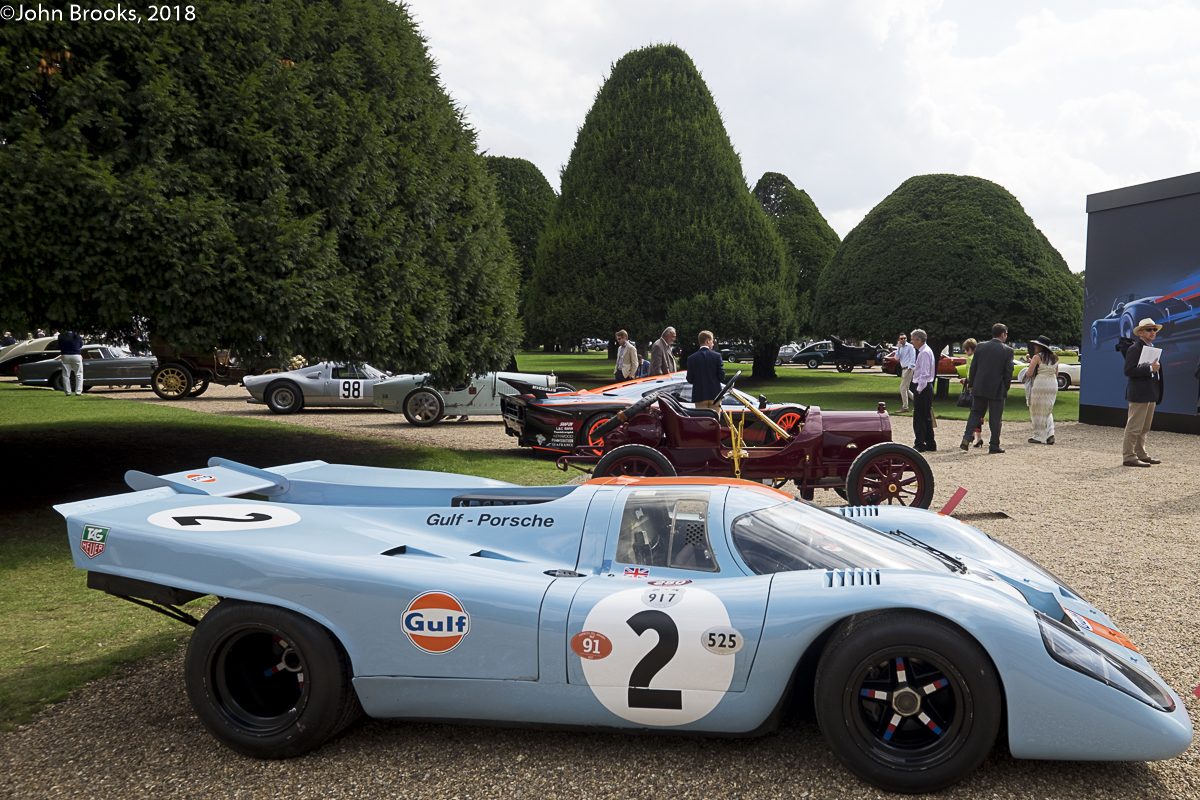
The ACO should give thanks every day that the coolest guy on the planet took the coolest car of the time and created a movie immortalising their race. Steve McQueen aka Michael Delaney made the Porsche 917 in the iconic Gulf Oil livery into a motoring mega-star. This example, 917-013, never actually raced at Le Mans but was wrecked there during the making of the film, Le Mans, when David Piper had a tyre issue at speed. The accident was so violent that the 917 was almost cut in two and Piper lost his lower right leg as a consequence.
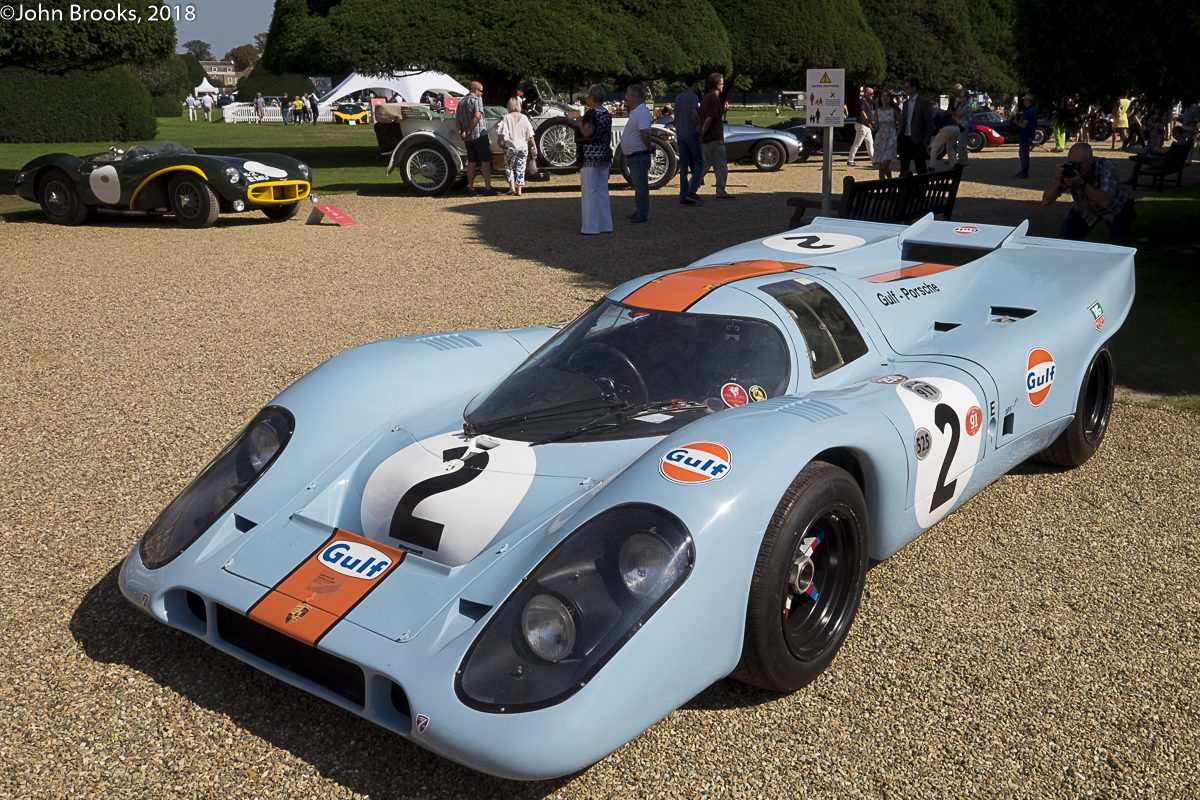
The Porsche was reborn using chassis 917-034 and went on to score victories at Daytona, Monza, Zeltweg and Montlhéry. Austria’s race witnessed the final victory for the legendary Pedro Rodriguez who turned in one of his greatest performances to beat Ferrari.
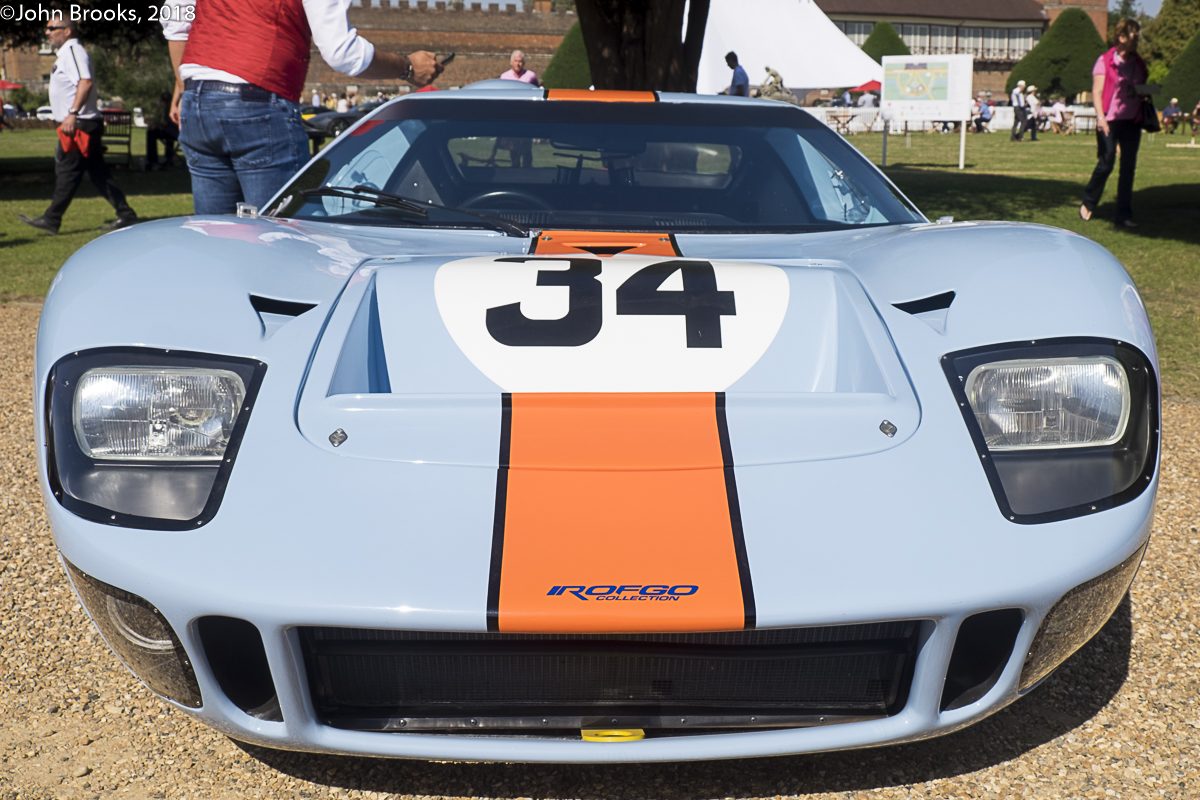
Rodriguez and Gulf Oil are linked to this Ford GT40. Originally chassis P/1004 and entered for the 1965 Le Mans 24 Hours under the banner of Rob Walker. Like the other Dearborn cars the GT40 retired, this one a victim of a cylinder head gasket failure.
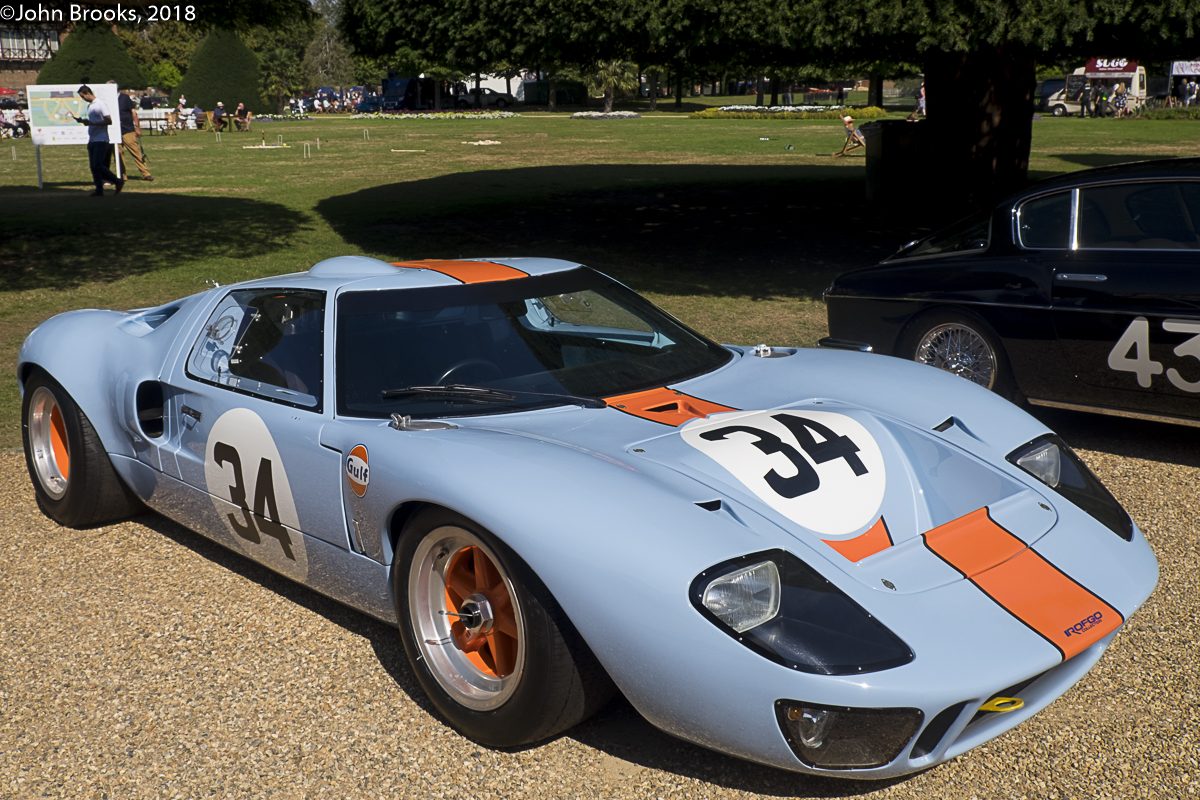
Fast forward to 1968 and P/1004 was retrieved from storage and updated by JW Automotive to the latest spec and renumbered to P/1084. It was raced to fourth place at Spa by Paul Hawkins and David Hobbs and then was retired from the tracks. A few months later a sister car took the top spot at Le Mans in the postponed 1968 event, Pedro Rodriguez and Lucien Bianchi were the drivers.
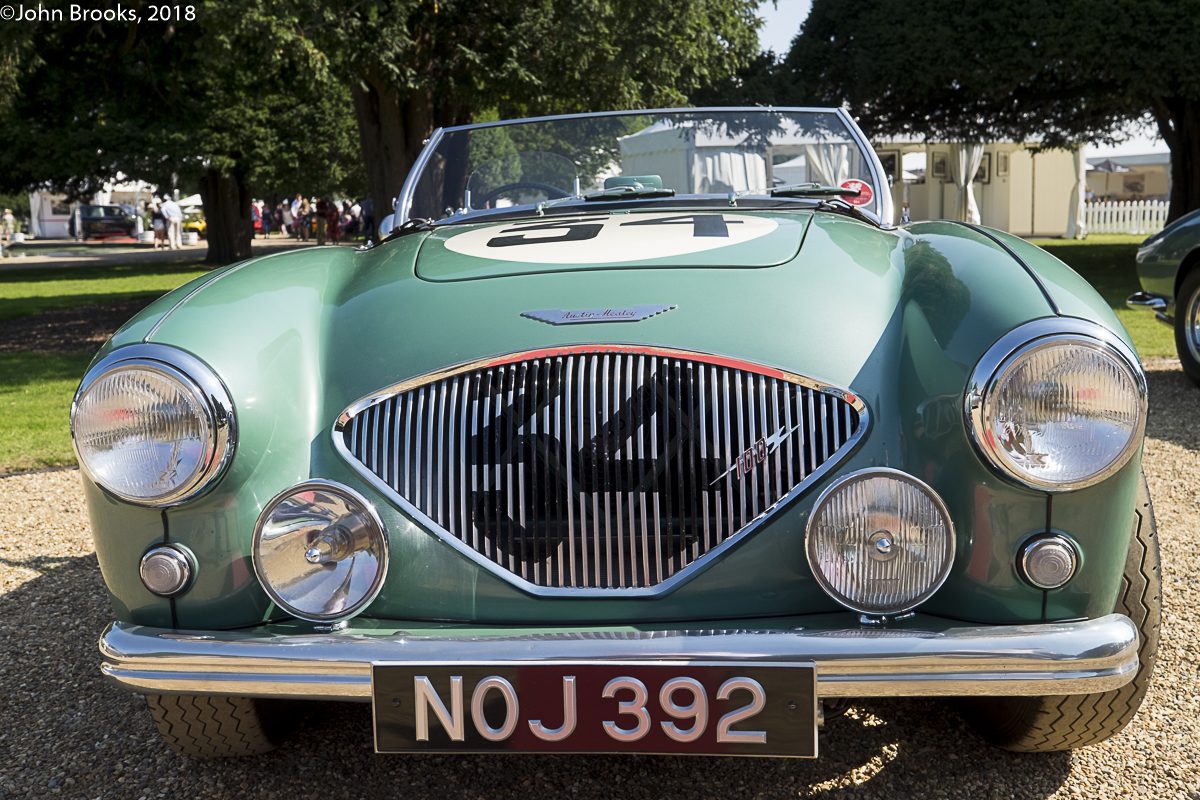
The final Le Mans competitor to be found in the Place grounds was the Austin Healey 100 ‘Special’. It raced at La Sarthe in 1953, finishing a very creditable 12th place overall in the hands of Maurice Gatsonides and Johnny Lockett.
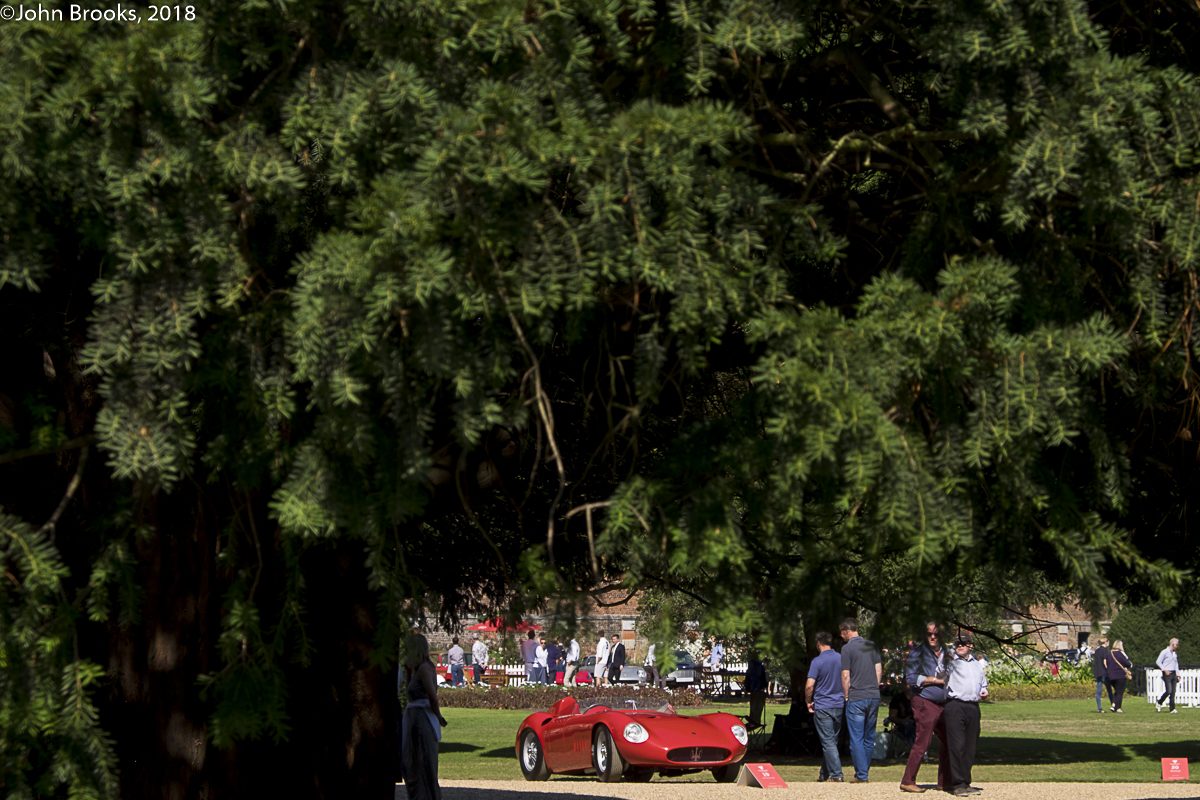
Since it was first held in 2012 the Concours of Elegance has taken its place at the top table of motoring celebrations. Now located at Hampton Court Palace it is a ‘must attend’ event, if you like cars then this is for you.
John Brooks, September 2018